

Best Time to Visit Canada: Month by Month Breakdown
Canada is a popular country to visit any time of the year, but it can be a very different travel experience depending on the season that you choose to visit.
Summer is peak season in Canada when the weather is at its best. Winter is cold, snowy and icy, but it’s the perfect time for skiing and snowboarding. Spring and autumn are lovely and come with fewer crowds, but the weather can be unpredictable.
The best time to visit Canada will depend on what activities you’re looking to enjoy, and how many other tourists you don’t mind sharing that experience with.
To help you to plan your trip, here’s our month by month breakdown of the best time to visit Canada.
Don’t leave home without: Lonely Planet Canada (Country Guide)
Table of Contents
Canada Summer Months
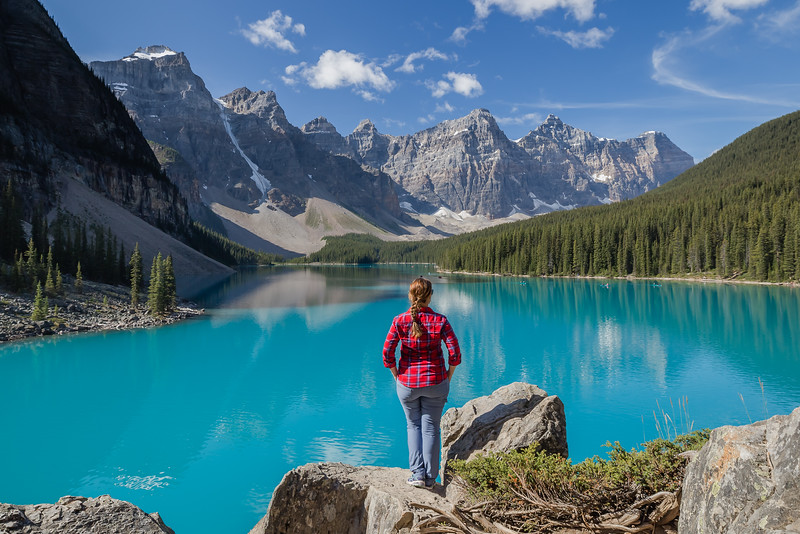
Summer is the most popular time of the year to visit Canada. For hikers and outdoor lovers, this is the best time to visit Canada, for the simple reason that you can guarantee the hiking trails will be open.
There are lots of festivals and events too in summer, and it’s a great time for a road trip.
Need to book a car for your road trip adventure? We use Discover Car Hire for comparing car prices to find the best deal. They search both local & international rental companies .
June in Canada
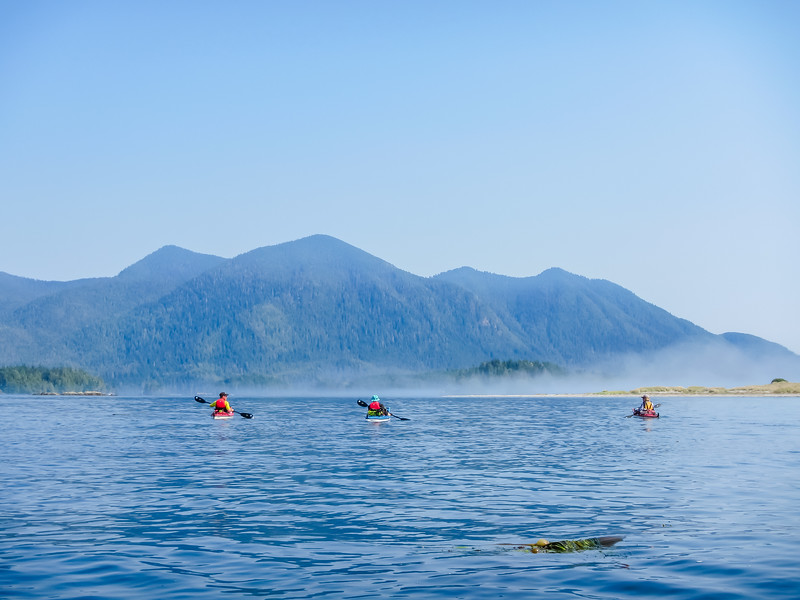
June is the start of the summer high season, and this is when Canada starts to get busy as tourists begin to flock in for road trips and to explore the national parks.
June is still a good time to avoid the worst of the crowds, which tend to arrive in July and August when many countries are in the midst of their school holidays.
In June, take to popular places like Banff and Jasper, and the wider Canadian Rockies and make the most of the newly opened hiking trails and the resurgent wildlife.
July in Canada
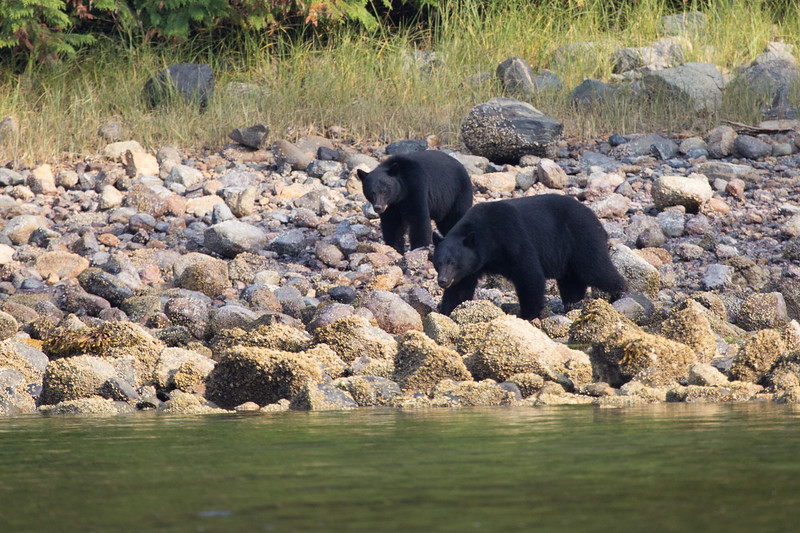
July is busy, but that’s because weather-wise this is the best time to visit Canada. In the far north, you can enjoy endless hours of sunshine in offbeat destinations such as Edmonton or Whitehorse.
While other travelers will head to the Canadian Rockies or Vancouver, in the Arctic Circle, you’ll find a fraction of the tourist numbers.
Get off the beaten track in July, and enjoy a unique experience without the crowds in the north.
July is also a great time for city hopping, like Montreal, Calgary and Toronto all throw big summer festivals through July to make the most of the sunshine.
August in Canada

August will be just as busy as July across the country, but again, weather-wise this is one of the best times to visit Canada.
The sun is still shining, and this is the last month of the year where you can guarantee the good weather before autumn arrives.
Go on a road trip in British Columbia, and take in the epic Sea to Sky Highway, or take the road more traveled and drive the Banff to Jasper Highway, along the Icefields Parkway.
But remember, that Canada is a vast country, and if you’re looking to travel off the beaten track and find secluded places, then it’s never too hard to do this away from the major tourist trails.
Head off hiking, climb mountain peaks and camp out in the wild through Autumn.
Canada Fall Months
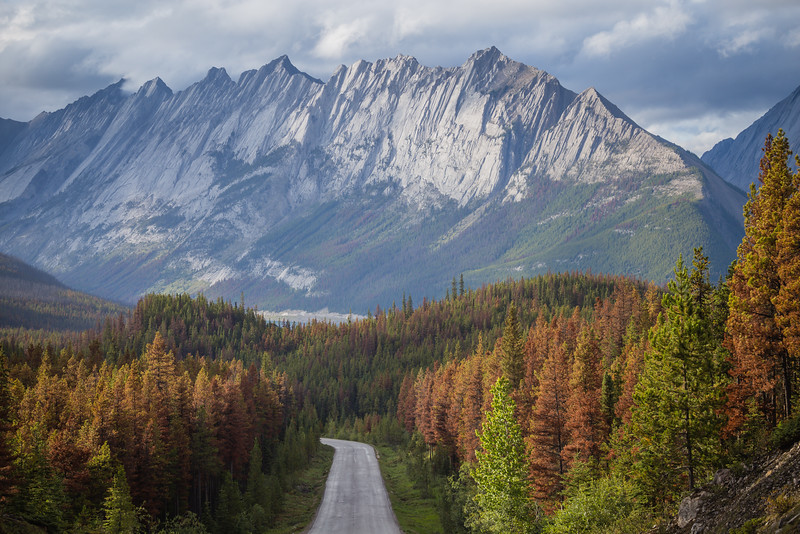
Fall is a shoulder season when it comes to the best time to visit Canada, but if you’re looking to escape the summer crowds then there isn’t a better time to visit.
Prices are lower and popular attractions aren’t nearly as busy, but the weather can be unpredictable.
September in Canada

Fall comes around all too quickly in Canada, but September will still see good weather across the country. Just be prepared for a bit of unpredictability.
On the plus side though, towards the end of September, the colors will be Autumnal, and the outdoors is still as beautiful as ever.
September is a good time to make the most of lower prices and smaller crowds after the summer rush has ended.
Vancouver is still positively hot if you’re looking for sunshine, and there are some great national parks nearby, as well as epic road trips from the west coast city and into the wilderness of British Columbia.
Visit top tourist sights such as Banff and Jasper, take the Rocky Mountain train, or gaze ina we at the crashing force of Niagra Falls from the Canadian side.
October in Canada
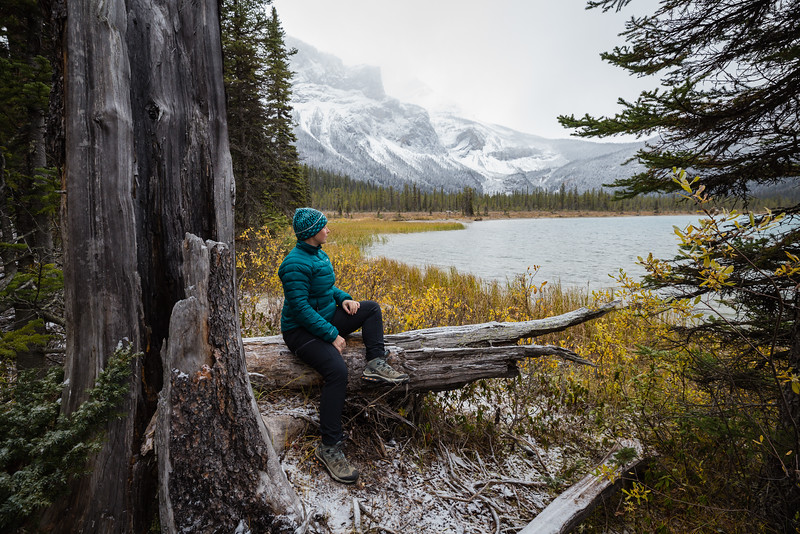
October is the middle of Fall, and it’s the best time to visit Canada if you’re in search of those golden, red and yellow shades of natural beauty.
It can rain a lot in October, so be prepared for wet weather, but in the moments of sunshine, the outdoors radiates gloriously.
Hiking trails will already start to close down in many destinations, but travel to British Columbia and you’ll find that the warmer climate keeps places open and busier for longer than other areas such as the Rockies.
November in Canada
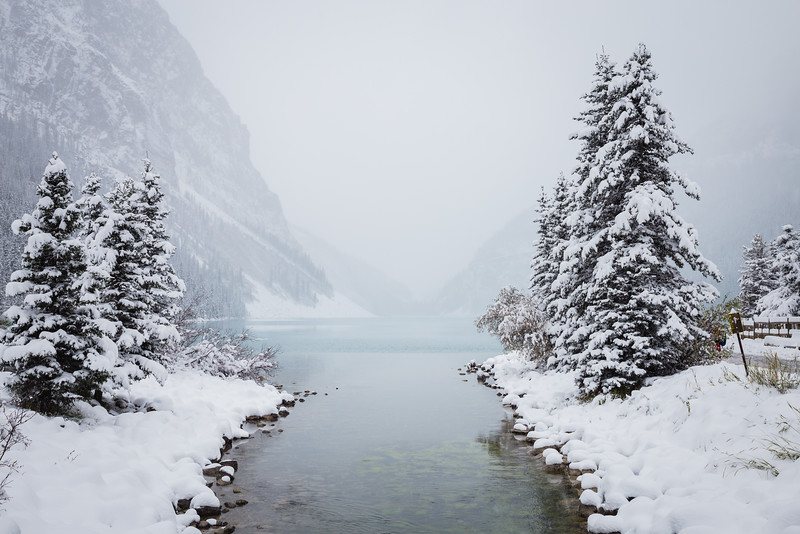
November is the last month of Autumn, but in many places, it will already feel as if it’s been winter for a long time.
If you’re after low prices and small crowds, then there isn’t a better time to visit Canada than in November.
The weather is bound to be unpredictable and in many places, it’s going to be snowing already.
You can catch early deals at ski resorts if there’s been enough snowfall. Or you can enjoy the best of Canada’s cities, and make the most of the museums and galleries while soaking up the culture in Toronto, Vancouver or Montreal.
Canada Winter Months

Winter is the time for snowsports across Canada because this is a country that gets very cold between December and February.
The ski resorts will be full over winter, with peak season falling over Christmas and through to the New Year.
December in Canada
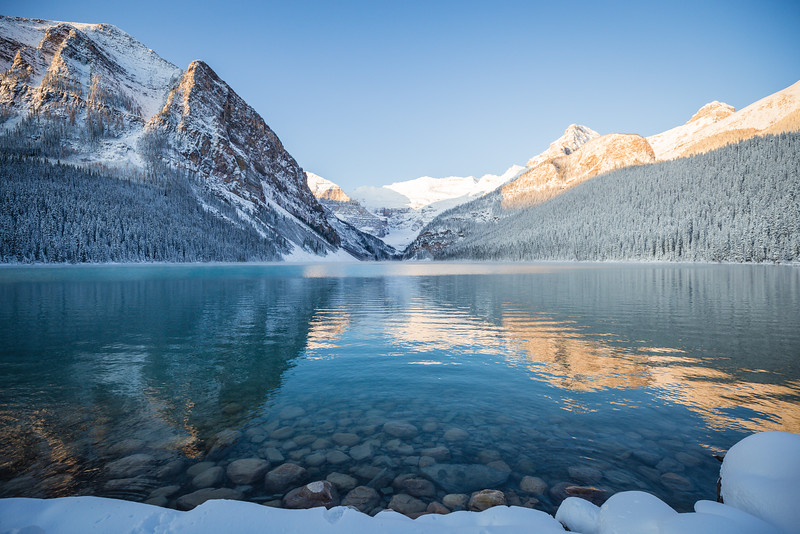
In December, it’s the real start of the ski season in popular destinations such as Whistler and Banff. With lots of snowfall and the Christmas holidays, this is a great time to be in Canada if you love festivities and snow sports.
If you want to go skiing though, then make sure that you book in advance, because this is peak season.
The cities hold Christmas events all through December, and with all the museums still open through winter, it’s a great chance to escape the cold and to explore urban Canada.
January in Canada

January is a cold time of the year to be in Canada, and you need to be prepared for the icy chill of the Canadian winter wherever you are.
After the Christmas rush, things slow down, so this is a good time to get a few good deals at the ski resorts, or least to hit the slopes without so many other tourists around.
If you are looking for a unique experience, then why not consider heading into the Arctic Circle?
The remote north of Canada is becoming more popular and more accessible, even in winter, and there are endless opportunities for dog sledding, husky safaris and seeing the colorful Northern Lights in the night sky.
Travel can be unpredictable in January, due to the weather, but heading north is well worth the effort if you have the time and patience.
February in Canada
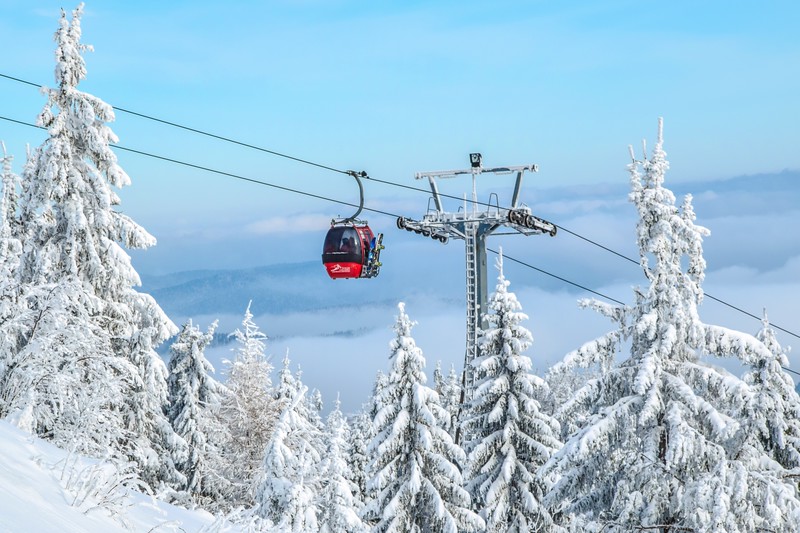
February is a great time for skiing in Canada, as the ski slopes will be in great shape by now.
It’s never too busy either, except on the weekends, and you’ll be able to get low season prices on both hotels and flights.
If skiing isn’t your thing though, then you can head north into the Arctic Circle to search for the Northern Lights.
Or you can stick to the cities and enjoy the warmth of Canada’s many great museums, bars, galleries, and restaurants instead of braving the chilly outdoors.
Canada Spring Months
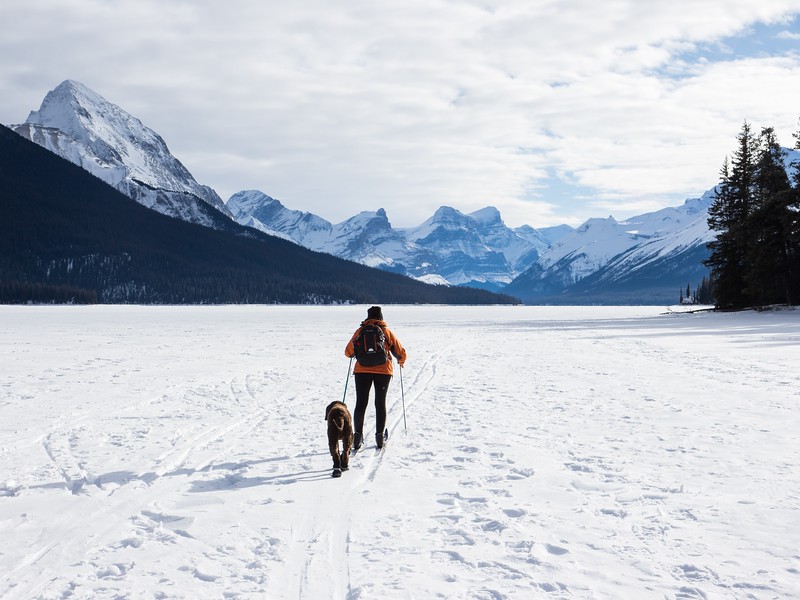
Spring is a slow starter in Canada, and winter can linger for a long time, particularly if you head further north.
The weather can be unpredictable, and it’s not a good time for hiking as many of the trails are still closed.
Life is returning to Canada though after a tough winter, and it can be a beautiful time for wildlife spotting.
March in Canada

March is a slow month when it comes to travel, but that does mean you can take full advantage of low prices and small crowds.
This is the start of spring, but it will still feel a lot like winter in many places, particularly if you travel further north.
Warmer locations such as Vancouver are beginning to bloom into life, while the national parks will have plenty of wildlife sightings as bears and other animals begin to slowly emerge.
April in Canada

April can be quiet, although there will be a mini-high season over the Easter Holidays.
The weather is unpredictable, but expect it to be cold in most locations, with the odd sunny day as summer begins to arrive – slowly.
April is quite often the last month of the ski season, so head to Whistler or the Rockies for more snowsport action before summer arrives and the snow melts.
May in Canada
May is when the weather will finally begin to turn for the better across Canada, and this can be a fantastic time to explore the country.
If you love your snowsports, then some ski resorts will still be open, and you can find some end of season deals.
If you love national parks, then many of the hiking trails and campsites are beginning to open – although this varies each year, so check in advance.
The best thing is, you miss the summer crowds in May and get those great low season prices!
Our Top Recommended Tours:
- Canadian Rockies Encompassed with G Adventures – 19 days
- Vancouver Island & Northern Rockies with G Adventures – 11 days
- Canadian Rockies Express with G Adventures – 8 days
- Discover the Canadian Rockies Westbound with National Geographic Journeys -12 days
- Canadian Rockies: National Parks Eastbound with G Adventures – 14 days
More on Canada:
- Kayaking Vancouver Island: 4 Days on the Clayoquot Sound
- 13 Epic Things to Do in Tofino BC
- 15 Epic Things to do in Squamish BC + Planning Guide
- Sea to Sky Highway Road Trip: Best Stops from Vancouver to Whistler
- 25 Incredible Things to Do in Banff National Park
- Best Time to Visit Banff: Month by Month Breakdown
- Bow Valley Parkway Road Trip: Best Stops from Banff to Lake Louise
- 20 Epic Things to Do in Lake Louise, Canada
- Icefields Parkway Road Trip Guide: Best stops from Banff to Jasper
- 18 EPIC Things to do in Jasper National Park
- Moraine Lake: Complete Planning Guide
- 9 Unreal Northern Lights Tours
Did you like this story? Share it!
Travel planning resources, about david stock.
I have always been an outdoorsman so becoming an adventure traveler was just the next natural step. I love nature, I love to get off the beaten path and I like to explore. I enjoy scuba diving and cars. And yes, Lina and I have a naked dog.
Leave a Comment Cancel reply

When to visit Canada: the best festivals, activities, and weather through the year

Feb 23, 2022 • 6 min read
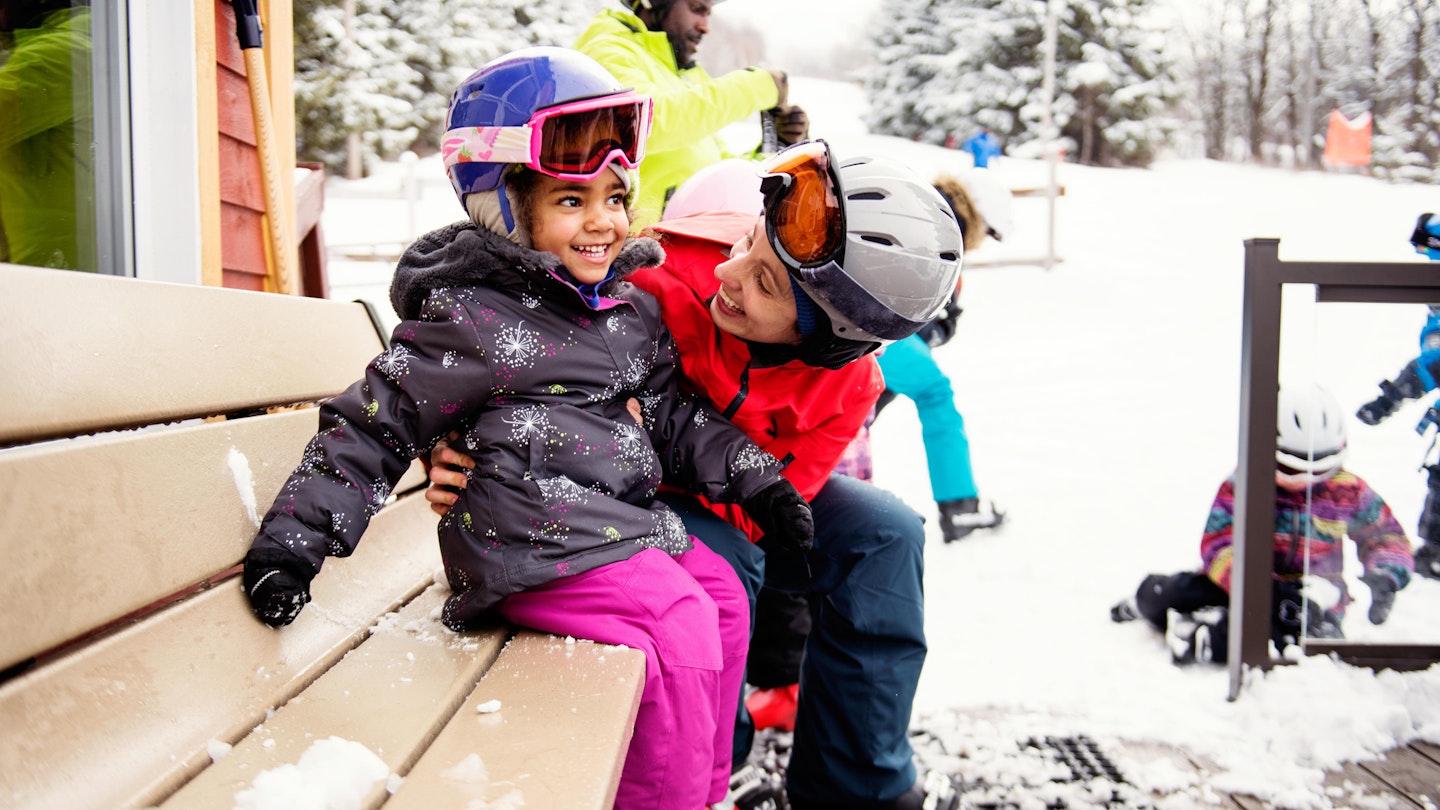
Whether you're planning a family ski break or to make the most of the summer months, this guide to what's happening in Canada can help you plan the perfect trip © manonallard / Getty Images
Canada is primarily a summer destination: the country gets three times more foreign visitors in July than January. In a land of seriously frigid winter temperatures and – in the far north – little daylight, summer is a welcome respite when you can unlock the pleasures of 48 national parks , enjoy an abundance of festivals and dine alfresco in a host of cosmopolitan cities. There are even beaches to explore and a burgeoning wine culture to savor.
For those not averse to a little winter chill, the snow-accustomed Canadians offer an alternative winter culture. Whistler is North America’s largest ski resort, Ottawa ’s Rideau Canal hosts the world’s biggest skating rink, and Quebec City ’s February carnival is one of the planet’s most renowned winter festivals.
Here's our month-by-month guide to what's happening in Canada.

High season sunshine in June to August attracts many tourists
In common with most northern hemisphere countries, June to August is Canada’s bonanza season, or to be more specific, Victoria Day (late May) to Labour Day (first weekend in September). Sunny weather, snow-free landscapes, and long hours of daylight (the sun barely sets in the far north) conspire to pull in foreign tourists and huge domestic crowds. Satisfying the demand, everything is open, from museums to hiking trails to wildlife excursions. Even winter ski resorts convert themselves into summer hiking and biking destinations. Summer caveats include higher prices (count on paying 30% more), busier facilities, and more limited availability. Book ahead and come armed with a variety of options.
Shoulder season of May, September, and October may mean some cheaper deals area available
Savvy travelers visit Canada in September. While prices and crowds fall after the Labour Day weekend, good weather usually holds until the end of the month meaning you can still hike at high altitudes, kayak in ice-free waters, and visit the beach. Early October remains snow-free in many regions and is the height of the surfing season on the Pacific coast. Fall foliage turns rust-red and sandy-brown towards the end of October and is particularly impressive in the eastern provinces: Ontario and Prince Edward Island are favorites. May is often relatively warm but snow can still linger at higher altitudes, especially in the Rocky Mountains . The Victoria Day weekend (Monday preceding May 25) usually marks the start of the summer season. From here on you can wave goodbye to any deals or discounts until September.
Low season runs November to April, but it's prime time for snow sports
Days are dark and temperatures are cold – really cold in the territories, the prairies, and parts of Québec . However, there is a silver lining: skiing and other associated winter sports usually kick off in late November/early December and keep going until early April depending on the weather. While prices drop in most regions, ski resorts ramp up their costs for a mini-high season, especially in the peak months of January and February. Elsewhere, November and April are the best months for all-round bargains.
Get more travel inspiration, tips and exclusive offers sent straight to your inbox with our weekly newsletter .

January is ideal for ice skating and skiing
Frozen lakes and rivers provide skating opportunities; ski resorts get big dumps of snow – some offer floodlit skiing and cozy warming huts to light up dark evenings. Key events: Ice wine festivals in Ontario and BC.
February has winter festivals
As the freeze prevails, the Canadians put on plenty of winter festivals to keep warm. The Family Day weekend (third weekend in February) can see a mass rush to the ski slopes. Key events: Yukon Quest , Quebec City’s Winter Carnival , Winterlude in Ottawa.
March means less snow, more hiking, and whale watching from the shore
The clocks spring forward in mid-March lengthening the evenings; Spring break (last two weeks of March) sees many Canadians flee abroad to warmer climes. In national parks and wilderness areas people start swapping their snowshoes for hiking boots. The Pacific Rim Whale Festival on the west coast of Vancouver Island celebrates all marine life. You may even be able to see gray whales from land as they pass near the coast on their northerly migration to their summer feeding grounds. Key event: Pacific Rim Whale Festival .
April marks the end of the ski season
The ski season peters out as mountain resorts begin transitioning to the summer season in late April. Hikers and bikers hit lower altitude trails. In cities, bars and restaurants start to open their outdoor patios. Key events: Stratford Festival , World Ski & Snowboard Festival .
May is great for white water rafting
Bears are awake, the snow is melting in the mountains, and rugged rivers experience choppier currents – a perfect time to go white water rafting. Key events: Canadian Tulip Festival, Manito Ahbee .

June marks the start of summer
Canadian schools break up in late June heralding a full-on family exodus to the countryside. Hockey’s Stanley Cup Finals can have the whole country on tenterhooks. Trails are mostly snow-free but can still be wet and muddy. The LGBTIQ+ community celebrates across the country. Key events: Montreal Jazz Festival, Pride Toronto , Alianait Arts Festival.
July is peak tourist time in Canada
The peak month for visitors with sunny weather, long days, an abundance of festivals and pretty much everything open for business. Spectacular wildflowers carpet alpine meadows in late July. Key events: Canada Day, Calgary Stampede , Winnipeg Fringe Festival, Just for Laughs Festival.
Summer festivities continue through August
A continuation of July with only a minor drop in visitor numbers. The last of the snow melts in the mountains as wildlife and mosquitos come out to play. Bring bear spray and insect repellent! Key events: Edmonton Fringe Festival, Festival Acadien , Royal St John’s Regatta.

September is a little cooler
While temperatures cool slightly, the weather remains relatively reliable for most of September. Some outdoor facilities close after Labour Day, but many trails, lakes, and campgrounds stay accessible until early October. Key events: Toronto International Film Festival, PEI Fall Flavours .
October is the best time for surfers in British Colombia
Warmer weather can persist on the coast in early October, while the prairies and territories get an early dusting of snow. Good swells and tepid seas make this the best all-round surfing month in British Columbia. Key events: Dark Sky Festival, Celtic Colours .
Catch the last of the fall foliage in November
In the east, fall foliage can last well into November while, in the west, wet and windy weather has led to a growing interest in storm-watching, particularly on Vancouver Island. Key event: Niagara Festival of Lights.
December means more visitors to the ski resorts
By early December, most ski resorts are firing on all cylinders. This is also peak season for migratory eagle spotting in British Columbia. Big cities host Christmas markets. Key events: Vancouver Festival of Lights, Christmas.
You might also like: The 15 most incredible places to visit in Canada Explore Canada's great outdoors on these 11 hiking trails 21 epic experiences to supercharge your Canadian adventure
This article was first published March 2021 and updated February 2022
Explore related stories

Destination Practicalities
Apr 26, 2024 • 6 min read
Plan your visit to Saskatoon, the largest city in the Canadian province of Saskatchewan, with our first-timer's guide.
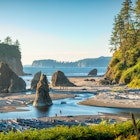
Apr 16, 2024 • 8 min read

Apr 13, 2024 • 8 min read
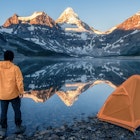
Apr 12, 2024 • 7 min read

Apr 11, 2024 • 6 min read
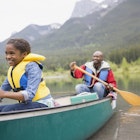
Apr 11, 2024 • 10 min read

Mar 30, 2024 • 4 min read
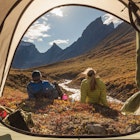
Mar 24, 2024 • 7 min read
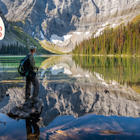
Mar 19, 2024 • 6 min read
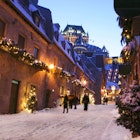
Feb 24, 2024 • 6 min read
The Best Time to Visit Canada
TripSavvy / Michela Buttignol
There are pros and cons to traveling in each of Canada's four seasons .
The best time to visit Canada is during the fall months, from September through November. The weather has cooled down but is still comfortable, the summer crowds have left, prices drop, and changing fall foliage provides a beautiful backdrop for a vacation. Also, fall celebrations such as pumpkin, apple, and wine festivals are in full swing and give visitors a chance to visit slightly out of the way farms and orchards.
Generally, the summer months are the most popular time to visit, but no matter when you choose to travel to Canada there will be some advantages (perhaps cheaper flights and hotels, fewer crowds) and some disadvantages (cold weather, fewer hotel options).
Of course, Canada is a wide-ranging country with vastly different economic and climate conditions. Be sure to understand that any month in Vancouver is quite a different experience than the same month in Toronto or Montreal.
The Weather in Canada
Don't assume all of Canada has the same weather. For example, Vancouver in winter rarely gets a lot of snow or sub-zero temperatures, whereas Montreal is freezing cold beginning in December, with multiple massive snowstorms throughout the winter season.
Winter usually spans December through February but can last well into April in some parts. Winters are cold and long through much of the country, except for the coastline of British Columbia. Elsewhere, such as Eastern Canada, below-zero temperatures and snowstorms with snowfall greater than eight inches are not uncommon.
On the west coast, spring arrives by the end of February, ringing in the last of the freezing temperatures. Snowfall can continue at the higher elevations, especially at ski resorts like Banff or Whistler, through May.
By June, summer's arrived, bringing with it high humidity and hot weather, especially in the central and eastern parts of the country. The summers on the West coast are typically much cooler. In the far reaches of Canada's north, many cities, like Whitehorse or Edmonton, see daylight for 17 to 20 hours. Be sure to bring insect repellant in the summer months, too.
Fall weather throughout Canada showcases cooler temperatures and less humidity than the hotter days of the summer months. Vancouver, which can be quite wet throughout most of the year, experiences its driest month in September.
Peak Season in Canada
Peak season in Canada typically takes place during the summer, especially late June through September, when the weather is warm, and schools are out of session. While more rural parts of Canada still see fewer crowds, be sure to book your visit early if you're heading to popular tourist destinations like Vancouver, Montreal, or Toronto. Additionally, many of the country's national parks experience swells of crowds during summertime holidays, and rates for accommodation and travel rise accordingly.
Key Events and Festivals
Canada's sheer size and diversity mean that the country hosts unique and lively holidays and festivals throughout the year. Some popular events include the Québec Winter Carnival , a two-and-a-half-week long celebration of winter; Winterlude, held in Ottawa, where guests can skate along the world's largest ice skating rink ; and Calgary Stampede , a rodeo that got its start as a quaint agricultural fair and now draws in competitors from around the world. On the West Coast, don't miss the Pacific Rim Whale Festival , a celebration of the more than 20,000 whales that migrate along Canada's coastline each year.
All of the country is cold during January, but it doesn't make it any less of a popular time to visit. Head to Ottawa where you can glide along the Skateway, the world's largest natural ice rink.
Events to check out:
- The Niagara Falls Winter Festival of Lights in Ontario kicks off in November but runs through January. This spectacular light show includes a three-mile route of lighted displays, plus fireworks over the falls.
- Each year, Toronto hosts Winterlicious , a restaurant festival where some of the city's best chefs serve affordable prix-fixe menus.
February , on average, is the coldest month in Canada, but winter festivals—and ski season—are still in full swing. If you can brave a little chill, it's an excellent month to score discounts on lodging and travel.
- Festival du Voyageur celebrates Saint-Boniface's French-Canadian heritage. This 10-day February festival includes snow sculptures, dog-sledding, and skating.
- Since 1894, locals and visitors alike have flocked to celebrate the area's cold, snowy winters at Québec's Winter Carnival in February.
March is still cold, and thus, a slow season for travel— except for spring break, which usually occurs toward the end of the month. Many visitors to Canada during March come to ski or visit one of the country's famed sugar shacks for maple syrup tasting.
- Spring arrives earlier along the West Coast, and Vancouver holds its annual cherry blossom festival each year in March.
- When temperatures begin to rise, maple syrup production ramps up. Quebec and Ontario host celebrations of this sweet treat.
April is both a warm and wallet-friendly time to visit. Ski season is still going strong on Canada's highest mountains, but the rest of the country is beginning to experience spring, along with its colorful blooms. Weather can be unpredictable, so pack a rain jacket.
- Every April, Toronto hosts Hot Docs International Documentary Film Festival . The celebration of more than 100 documentaries is North America's largest festival of its kind.
- If you feel like going for a run, join the Vancouver Sun Run . This 10-kilometer race is Canada's largest, and the second-largest in North America.
By May, tulips and daffodils are entirely in bloom and weather has stabilized. Luckily, there are still plenty of great travel deals to be had before summertime's rush! Some rain is a possibility, but it's still easy to enjoy plenty of time outdoors.
- Victoria Day is a national holiday in Canada that falls on the Monday before May 25. Expect governmental agencies, schools, and banks to be closed. There's usually a small swell in domestic travel at this time as well.
- The Canadian Tulip Festival is held over two weeks in Ottawa. Activities include a tulip market, art exhibitions, and more.
June is warm in Canada, but not yet super humid. Popular tourist destinations and national parks will begin to get more crowded. If you're camping or staying at a cottage, bring plenty of bug spray, as pesky black flies are everywhere throughout Canada in the early summer.
- The Banff Summer Arts Festival brings music, film, theater, and dance performances to Banff, Alberta, every summer.
- At the end of June, the Festival International de Jazz de Montreal brings thousands of jazz enthusiasts from around the globe for a week-and-a-half.
July is popular, and hotel and flight prices will reflect that. Despite the hot and humid weather, expect national parks and other city attractions to be extremely crowded. July is also a popular month for some of Canada's biggest festivals and events.
- July 1 is Canada Day, a celebration similar to July 4 in the U.S. Expect fireworks and other patriotic festivities.
- Grab your cowboy hat and spurs and head on over to the Calgary Stampede, also called the Greatest Outdoor Show on Earth . Each year, more than a million people visit Calgary to partake in this 10-day rodeo and celebration of the ranching heritage held every July.
August in Canada is much like July. The calendar is still packed with cultural events and festivals, while the weather is still hot and muggy, and vacationers are still visiting en masse. (The one exception to the heat: Vancouver is usually much cooler than the rest of Canada during this time.)
- From its humble beginnings in 1980, the Edmonton Folk Festival has grown to be one of the world's premier folk festivals. Held each August, the festival's lineup is always outstanding and ticket prices stay reasonable.
Temperatures cool down in September as stunning fall foliage starts creeping in, making the month a great time to visit. Labour Day weekend, held on the same weekend as the U.S. equivalent, is a popular travel weekend so expect higher rates and heavier crowds then.
- The Vancouver Fringe , held every September, celebrates theatre of all kind. The Fringe presents live, unjuried performances and artists receive 100 percent of regular box office revenues generated during the festival.
- The Toronto International Film Festival takes place in September, screening more than 375 films and hosting nearly 500,000 people.
Fall foliage peaks in early October. October is also the month of Canadian Thanksgiving, which is celebrated but not nearly to the extent of its American counterpart.
- Oktoberfest, the equivalent to the famed German festival, runs for two weeks in Kitchener-Waterloo, Ontario.
The weather cools down significantly in November, but it's still possible to spend some time outdoors. Ski season also ramps up in November. This is a great month to find low-season travel deals.
- Most of Canada's major cities host Santa Claus Parades in November. These family-friendly parades showcase holiday floats and usually have activities for children.
The weather is cold and there will probably be snow, but if you're prepared, you can still enjoy Canada's cities and lots of outdoor activities come December. Before and just after Christmas offers visitors some of the best opportunities for airfare and hotel bargains—especially if you like to ski.
- December 26 is Boxing Day, a popular government holiday that is also one of the biggest shopping days in Canada.
Canada experiences four seasons, with each one having its own travel highlights. That said, if you visit during the months of September through November, crowds are low, rates are cheap, and the fall foliage is spectacular.
Summer is typically the best season in Canada, given its northerly climate. However, if you visit during this season, expect crowds at the major attractions and higher airfare and lodging rates.
February is the coldest month, country-wide, in Canada. Expect a high of 48° Fahrenheit and a low of 6° Fahrenheit, with an average daily temperature of 27° Fahrenheit.
How to See Canada's Fall Foliage at Its Peak
The Best Time to Visit Boston
The Best Time to Visit Japan
The Best Time to Visit the Dominican Republic
The Best Time to Visit Spain
The Best Time to Visit the Bahamas
August in Canada: Weather, What to Pack, and What to See
February in Canada: Weather, What to Pack, and What to See
The Best Time to Visit Calgary, Canada
Christmas Traditions and Customs in Canada
March in Canada: Weather, What to Pack, and What to See
Canada in July: Weather, What to Pack, and What to See
18 Top Things to Do in Winter in Canada
Weather in Canada: Climate, Seasons, and Average Monthly Temperature
April in Canada: Weather, What to Pack, and What to See
Canada in June: Weather, What to Pack, and What to See
Chasing Chanelle
When is The Best Time to Visit Canada? The Complete Guide (From a Local)

Canada is a beautiful country which should be on everyone’s travel bucket list. But when is the best time to visit Canada?
This will vary based on where in Canada you’re looking to visit, what you want to do here, and what your travel priorities are. To help you figure out when you should visit Canada, I have put together everything you need to know about the climate, seasonal attractions and activities, high and low tourist seasons, and more.
How do I know all of this? I’ve lived in Canada since 2018 and have travelled extensively to different parts of the country at different times of year. So I know when the best time to visit Canada is, and what times are best to suit different interests.
When is the Best Time to Visit Canada?
With every season offering something different, there’s really no bad time to visit Canada!
But, as a vast and diverse country, the best time to visit Canada depends on where you plan to go and what you want to experience. As not all activities and attractions are accessible throughout the entire year. So, to save yourself from disappointment, it’s important that you choose the right time to suit your interests.
Generally, summer (in particular July and August) is the most popular time to visit Canada. There are plenty of outdoor activities to do, the cities come alive during this time, and the weather is warm and sunny.
However, if you love the snow and are into skiing or snowboarding, visiting during the winter months (December to February) will be ideal.

Fall offers milder temperatures and stunning foliage, especially in September and October. This is actually my favourite time of year to explore Canada’s vast wilderness, with beautiful conditions for activities like hiking and canoeing .
And spring is the best time to avoid the crowds and witness the landscape come back to life following the winter.
But it’s not as simple as just choosing your preferred season to find your ideal time to visit Canada. The climate and conditions, timing for key attractions, crowds and prices can vary a lot from month to month.
So, for a more specific guide to the best time to visit Canada, here is a breakdown of each season, including why and when to visit during these times.
Summer (June to September)
Canada truly comes alive in the summer with plenty of outdoor activities, festivals, and beautiful wilderness, parks and coastline to explore.
Summer in Canada is generally considered to be from June to August. Although, officially, it starts on June 20th and ends on September 22nd.
July and August are the height of summer and are the most popular months to visit Canada. However, they are also the busiest and most expensive months.
But this shouldn’t deter you from visiting during this time, as Canada is a big enough country that you can still avoid the crowds, even during the peak tourist season. And you can keep costs down by doing free or cheap outdoor activities like hiking and camping.

➡️ BOOK: Top Things to do in Canada in Summer
Climate and Conditions in Summer
Due to Canada’s size, the climate varies a lot across the country in summer. In the more southern provinces, such as BC, Alberta, Ontario and Quebec, you can expect warm temperatures ranging from 20 to 30°C (68 to 86°F).
These areas also tend to be quite dry in the summer, making it an ideal time for outdoor activities. However, they are also prone to wildfires, which typically are at their worst from June to July.
And, the backcountry isn’t always completely accessible until a bit later in the summer due to snow. At higher altitudes the snow usually melts by mid-July. So there’s a chance that certain backcountry areas won’t be accessible for hiking and camping until then.
Although snowfall in the mountains can be unpredictable, most of the trails in the mountains remains accessible until around mid-September, when snow will commonly start to fall more frequently again.
It’s also worth keeping in mind that Canada’s lakes are still very cold early in the summer, since most of them freeze during the winter, and usually only finish melting in May or early June. And the turquoise blue colour of Canada’s iconic glacial lakes isn’t usually at its brightest until July.
In Canada’s more northern regions, especially near the Arctic Circle, the summer can be much shorter and cooler, with unpredictable weather. You can expect average daytime temperatures to range from around 5 to 15°C (41 to 59°F) in places like the Yukon and Northwest Territories.

When and Where to Visit in Summer?
June is the quietest of the summer months in Canada. So it’s a great time to visit if you’re looking to avoid the crowds and high-season prices, but still experience the best of the Canadian summer.
The beginning of June can be a little unpredictable in Canada. But, by the end of June, summer is usually in full swing. From my experience, I’ve had some really hot and sunny weather in Canada in June. But I’ve also had years with a lot of rain and cooler spring-like temperatures throughout the month.
Canada’s urban areas are buzzing in June with sidewalk patios, festivals, events and outdoor activities . This is a particularly great time to explore cities like Toronto , Vancouver and Montreal . It’s also one of the best times to see Niagara Falls , before the peak summer crowds arrive.
Although June is overall a great time to visit Canada, it isn’t the best month to explore Canada’s wilderness. The weather can be good for hiking, camping and canoeing and kayaking , but June is also the height of Canada’s bug season, which can make these activities less pleasant.
And, while most of the provincial and national parks on the east coast can be visited throughout June, parts of the backcountry on the west coast won’t be fully accessible or open until the end of the month.
Note – see more about June below under When and Where to Visit in Spring .
➡️ BOOK: Activities & Tours in Canada in June
July to August
July and August is a great time to visit anywhere in Canada. However, this is peak season, so you should expect the key tourist sites and cities to be busier, and prices to be at their most expensive.
July and August are generally considered the best months to experience Canada’s West Coast, northern and mountainous regions. Unless there are extreme weather conditions – such as late spring snowfall or wildfires – all of the national and provincial parks will be accessible during this time.
Therefore, this is the best (and most predictable) time for hiking and backpacking in Canada . And it’s when Canada’s turquoise blue glacial lakes are at their brightest. So it’s a particularly great time to see the iconic lakes Lake Louise and Moraine Lake in Banff , as well as other famously vibrant Canadian lakes like Garibaldi Lake and Joffre Lakes in BC .

Another great destination in Canada for July and August is Vancouver Island . Located just west of Vancouver, the island has 3,400 kilometres (2,112 miles) of coastline to explore, with beautiful beaches and old-growth rainforests, as well as the historic city of Victoria .
Or, for a coastal destination on the East Coast, Price Edward Island and Nova Scotia are also best visited in the July and August. July and August are also the prime time for whale watching in Canada’s coastal regions . (Although you can see whales throughout the entire summer, as they’re active here from May to September.)
There are also some fantastic events in Canada in July and August. July 1 is Canada Day , which the whole country celebrates. Across the country you will come across outdoor celebrations, including parades, concerts and fireworks.
In early July there’s the Montreal International Jazz Festival , and at the end of the month Montreal hosts the Just For Laughs comedy festival. In mid-July the famous Calgary Stampede takes place, which is the world’s largest outdoor rodeo and is definitely worth experiencing if you can fit it in. And in August, the CNE (Canadian National Exhibition) takes place in Toronto.
➡️ TIP: Book Hotels in Canada for the summer well in Advance!
September is the transition month from summer to fall and, in my opinion, is the best time to visit Canada. The days are still long and warm, but the temperatures are milder than during the height of summer. And bug season is well and truly over, making it the most comfortable time for outdoor activities and exploration.
In the mountainous regions, the first half of September is still prime hiking and backpacking season. Snow often arrives at higher altitudes in the second half of the month, which can make mountain passes inaccessible. But generally, September is still a great time for day hiking.
At lower altitudes, the entire month of September is ideal for exploring Canada’s wilderness. In particular, September is the best time of year for hiking and paddling in Ontario and Quebec, with warm days, prime wildlife spotting opportunities, and vibrant autumn hues starting to appear.
Plus, the peak tourist season is over by September. So it’s a great time to enjoy summer activities with fewer crowds.

Fall (September to December)
One of the best times to visit Canada is the fall. It’s a great time for outdoor activities, sightseeing, and exploring the cities . Plus, you get to see the landscapes at their most beautiful, lit up with vibrant fall colours.
Fall in Canada is officially from September 22nd until December 20th. However, a lot changes in this time, and the start of fall is very different from the end. It’s almost as though you experience several seasons in one. But, even with the season’s unpredictable nature, I would highly recommend visiting Canada in the fall.
It’s one of the quieter and cheaper times to visit Canada, the weather is usually pleasant for most of the season, and there are some great perks to visiting at this time.
There’s stunning fall foliage across the country, and you don’t even have to leave the city to see it. It’s also harvest season so there are plenty of farmers markets and excellent produce. This makes it a great time to explore the local food scene and sample seasonal treats, like pumpkin spice lattes. You can even visit a pumpkin patch, or go apple picking.

And, in October, you can experience Halloween and Thanksgiving in Canada.
Fall is also an excellent time for outdoor activities, as national and provincial parks are quieter, trails are surrounded by vibrant autumn colours, the weather is milder and there are no bugs!
Plus fall is prime wildlife viewing time, as many Canadian animals are most active during the fall. In particular, September and October is rutting season for moose and elk, and the Salmon run is at its peak. So it’s the best time to try and see bears feasting on salmon by the rivers.
Climate and Conditions in Fall
Fall in Canada brings a mix of weather conditions, and the climate can vary drastically throughout the season and across different parts of the country.
At the beginning of fall (late September and early October), temperatures are generally mild to warm in the southern regions, typically between 10 to 20°C (50 to 68°F). However, there can also be sporadic hot days during this time. I’ve experienced temperatures as hot as 30°C (86°F) as late as the first week of October!
As fall progresses, temperatures gradually cool down. In late October and November, you can expect temperatures to range from 0 to 15°C (32 to 59°F) in southern areas. Whereas in northern Canada, temperatures will already be as cold as -10 to -15°C (14 to 5°F).
In December, true winter conditions usually start to set in, with most of the country seeing temperatures close to zero or sub-zero.
Fall is also often associated with increased rainfall in Canada. In particular, Western Canada tends to get a lot of precipitation during fall – but rain in the town means snow on the mountains!
Personally, in Eastern Canada, I usually find the weather to be very pleasant and mostly dry until the end of October. From my experience, it’s November and December that bring more rain (and the first snow).

When and Where to Visit in Fall?
September can still fee like summer in a lot of southern Canada. Whereas it’s already peak fall season in the north!
If you’re looking to do outdoor activities, September is a really beautiful time to visit the East Coast. Many of Ontario and Quebec’s provincial parks are best experienced at this time of year for comfortable conditions and early signs of autumn, as the foliage starts to change colour. Algonquin Provincial Park , Killarney Provincial Park and La Mauricie National Park are some of the best parks to hike or paddle in September.
Or, if you want to experience larch season , you should visit the Rocky Mountains in September.
Larch season is a brief time each year when the larches (a type of deciduous conifer tree which flourishes in cooler temperatures), turns bright yellow before losing its needles for the winter. It’s a truly spectacular sight to see, when entire landscapes turn into a sea of gold. In particular, Banff National Park has some of the best hiking trails to see golden larches.
Plus, September is a great time to visit the region’s other popular sites, such as Lake Louise , Jasper, the Icefields Parkway and the Athabasca Glacier . And it’s also prime wildlife spotting time, including grizzly bears!
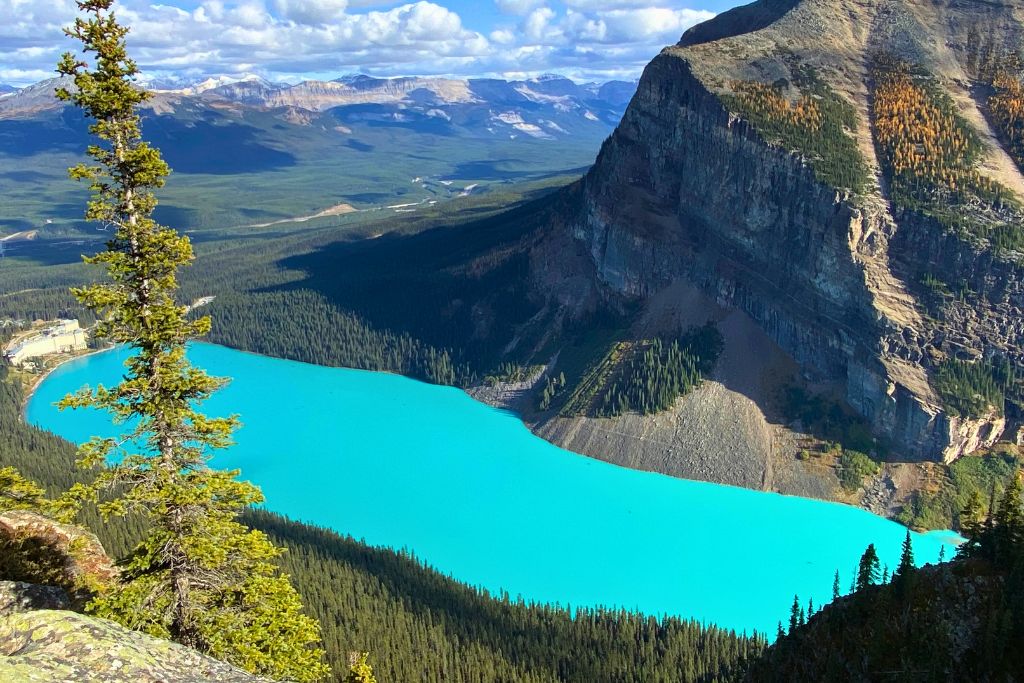
➡️ BOOK: Banff & Jasper Tours & Activities in September
If you’re looking to see Canada’s spectacular autumn colours, then I recommend visiting eastern Canada in October. This is peak fall foliage time, when you can witness the most vibrant hues of red, orange and gold.
Some of the best places to see fall colours in October are Ontario’s Niagara region and Algonquin Provincial Park , the Charlevoix region in Quebec, Gros Morne National Park in Newfoundland and Labrador, Prince Edward Island , and The Cabot Trail in Cape Breton , Nova Scotia.
But don’t feel restricted to only visiting these areas. If you’re here at the right time, you’ll see beautiful fall foliage all across Canada’s eastern provinces, no matter whether you’re exploring provincial parks, or staying in the city. In fact, some of the best autumn colours I’ve seen in Canada have been in Toronto !
Plus, October is a great time to explore Canada’s cities , as there are fewer crowds, cheaper prices and milder temperatures. Plus, if you do get unlucky with wet or cooler conditions, the major cities are all full of museums, entertainment venues and excellent dining options, so you will still be able to make the most of your stay.

➡️ BOOK: Hotels in Canada in October
November to December
While Canada is a great country to visit at any time of year, November and early December wouldn’t be my top pick. It’s very much a transitional time in Canada, following the peak fall season and before the snow arrives. Therefore, most places in Canada are quite cold and wet during this time.
But this period does have the benefit of being one of the cheapest and quietest times to visit Canada! And if you’re specifically looking to experience culture, arts, food and urban attractions, it can actually be one of the best times to visit.
Cities like Toronto, Montreal, Victoria, Vancouver and Calgary all have tons of museums , theatres, music venues and shopping malls, as well as excellent restaurants bars and clubs, to experience the best of Canada’s culinary scene and nightlife.
With fewer visitors, you shouldn’t struggle to get tickets for shows and restaurant reservations in November. And you can enjoy visiting key attractions and museums without the crowds. Plus, most of Canada’s cities have Christmas events and markets which start as early as mid-November.
Winter (December to March)
Winter in Canada officially starts on December 21st and ends on March 19th.
The biggest reason to visit Canada during winter is of course for skiing and snowboarding. Canada is home to 295 ski resorts, including some of the world’s top ski areas such as Whistler Blackcomb in British Columbia .
And even if you’re not into skiing or snowboarding, many of Canada’s ski resorts are still worth visiting for a wide range of other winter activities , excellent dining and nightlife, and to experience a true winter wonderland.
Across Canada you will find activities like snowmobiling , Nordic skiing, ice skating, tubing, snowshoeing , dog sledding, and ice fishing, for an unforgettable winter experience. And Canada’s Northwest Territories is one of the best places in the world to see the Northern Lights !

Winter can also be a great time to visit some of Canada’s cities. All of the country’s major cities have plenty of indoor infrastructure and activities to keep locals and visitors busy during the colder months. In fact, Montreal and Toronto both have underground pedestrian networks (Montreal’s Underground City and Toronto’s PATH ) to help you avoid the cold weather outside.
And some cities are even best visited in winter! In particular, Quebec City (although extremely cold) is exceptionally charming when covered in snow. And Canada’s capital, Ottawa , comes to life during winter with ice skating on the Rideau Canal, festivals, and various snow sports.
Plus, winter is also the best time to catch a hockey match in Canada, as the NHL season runs from October to April.
Climate and Conditions in Winter
Winters everywhere in Canada are COLD! Of course, some regions are colder than others, with northern and central regions getting temperatures as cold as -30°C (-22°F). Whereas the coastal regions, especially BC, tend to have milder weather.
Two of the warmest places in winter are Victoria and Vancouver in western Canada, with daytime averages around 7 to 9°C (45 to 48°F). But milder temperatures mean that these cities don’t get much snow, instead experiencing a lot of rain throughout the colder months.
In Canada’s southeastern provinces the weather isn’t as extreme as the central and norther regions. Temperatures are mostly below 0°C (32°F) in winter in Ontario and Quebec. But this can vary a lot, and it’s not uncommon to experience temperatures closer to -20°C (-4°F) at times.
The coldest I’ve ever experienced in Toronto was -35°C (-31°F) with the wind chill, in January a few years ago. But mostly winter temperatures tend to be quite comfortable, between 0 to -10°C (32 to 14°F).
In the mountainous regions, such as the Rockies, you can expect lots of snowfall and temperatures anywhere from 0 to -20°C (32 to -4°C).

It’s also worth noting that a lot of Canada’s fresh water freezes during the winter. This means that there are often opportunities to ice skate on frozen lakes, or go ice fishing, which are particularly memorable winter experiences.
On the downside, black ice and winter storms, such as blizzards, do occur in Canada in the winter. Therefore, it’s important to be prepared for such weather conditions, especially if you plan on driving during the cold months.
When and Where to Visit in Winter?
December to january.
The end of December and beginning of January is the festive season. Therefore, it’s also one of the busiest and most expensive times to visit Canada.
But, if you’re willing to absorb the cost, and you book your trip well in advance, this can be a truly magical time to visit Canada!
Although the slopes do get very busy at this time, the ski resorts are the best places to visit if you’re hoping to experience a white Christmas in Canada.
Ski villages are usually blanketed in snow and lit up with fairy lights, reminiscent of a snow globe. And there’s something special about wandering through snow-lined streets, sitting by a warm fire and sipping on a hot drink in a snowy setting at Christmas time.
Then, once the holiday buzz is over, the rest of January is the best time for skiing and snowboarding in Canada . Usually there are fewer crowds, off-peak prices and the most fresh snowfall of the season.
If you prefer to stick to an urban setting during the holidays, you will also find plenty of festive activities to do in Canada’s cities, such as Christmas markets, festivals of light, and concerts and performances. And, in January-February, Quebec City hosts the Quebec Winter Carnival , which includes parades, musical performances and snow sculptures.

➡️ BOOK: Ski & Snowboard Vacations in Canada
February to March
February and March are also great months for skiing and snowboarding in Canada . February’s weather is similar to January, but temperatures start to warm up in March, with warmer sunny days to enjoy the slopes.
One downside is that February and March tend to be a bit busier and more expensive for skiing than January. In mid-February, Canada’s Family Day statutory holiday brings a brief surge in tourism, and again in mid-March for mid-winter break.
As for cities, Ottawa is a particularly great place to visit in February. The city hosts its annual winter celebration – Winterlude , which highlights Canada’s artistic and cultural diversity and celebrates everything winter, with snow sports, festivities and special events.
➡️ BOOK: Hotels in Canada in February & March
Spring (March to June)
Spring is a quieter in-between season in Canada, officially from March 19th until June 20th. However, June is usually considered more of a summer month in Canada.
Other than making the most of the tail end of the ski season, spring isn’t a great time for outdoor activities in Canada. Most of the ski resorts close in April, as the snow melts. But there’s still too much ice and snow for many summer outdoor activities.
With the right equipment and experience, you can go hiking at lower elevation in Canada in spring. Plus, there’s something special about witnessing the first signs of blooming flowers and greenery after winter.
And you can start to see more wildlife activity as many animals emerge from hibernation. Whereas others, including migratory birds, become more active as they prepare for the breeding season.
But if your main attraction to Canada is to explore the parks and wilderness, I would suggest postponing your trip to the summer or fall, when you will be able to do a much wider range of outdoor activities, and see a lot more.
However, spring can be a great time for a city break in Canada , as you can beat the summer crowds and prices.

Climate and Conditions in Spring
Spring in Canada is a season of renewal and transition, marked by a gradual shift from the cold winter temperatures to milder and more pleasant weather.
In the southern and central regions, temperatures can range from around 5 to 15°C (41 to 59°F) in early spring, gradually warming up as the season progresses. Whereas in the north, temperatures are still very much reminiscent of winter.
In many areas, spring marks the melting of snow accumulated during the winter. This leads to rising water levels of rivers, and the the transition from white to green landscapes. And in many areas, you can see bursts of colour as spring flowers start to bloom.
Spring weather can be variable and unpredictable across Canada. There are often warm sunny days, and even the occasional heat wave. But there can also be cold weather, rain, and even the odd snowfall. Especially closer to the Arctic Circle, snow may persist into late spring or even early summer.
So, if you’re planning to visit Canada in the spring, it’s a good idea to be prepared for all types of weather conditions!
When and Where to Visit in Spring?
March to april.
March and April are the end of the ski season in Canada. This is a great time for spring skiing and snowboarding , with warmer and sunny weather. Plus, there can still be some good snowfall at this time of year.
Asides from the ski resorts, I would recommend visiting the coastal regions in British Columbia in Spring, like Vancouver and Victoria . These areas tend to experience milder weather and an earlier start to spring compared to the interior and northern parts of the country.
Plus, in March or April you can witness the cherry blossoms come to life in Vancouver. The pink tree-lined streets are a beautiful sight to see in the city. And there’s even an annual cherry blossom festival, with various events, usually held throughout April.

➡️ BOOK: Activities & Tours in Vancouver and Victoria
May to June
In May and June you can expect to see greenery and colourful flowers popping up across the rest of Canada.
Although some areas will still be inaccessible during this time due to snow, this can be a great time to hit the trails and start exploring Canada’s provincial and national parks again. Although keep in mind that bug season starts in June.
And usually by the end of May the lakes will have finished thawing out, so you can hit the water again for boating and paddling. (Although with caution, as the water will be VERY cold!)
Some of the best places to visit in Canada in late spring include the west coast, for early season hiking at lower altitudes. In Newfoundland and Labrador you can see whales and icebergs in ‘Iceberg Alley’. And the Annapolis Valley in Nova Scotia is the best place to see colourful flowers in full bloom (and experience the Annapolis Apple Blossom Festival).
Note – see more about June above under When and Where to Visit in Summer .
Final Thoughts – The Best Time to Visit Canada
In my opinion, there is no bad time to travel to Canada, with every season offering something different. Therefore, the best time to visit Canada will really depend on what your priorities are and what you’re looking to do here.
Hopefully this breakdown of the different months has helped to give you an idea of when and where to visit in Canada based on your interests and budget, so you can start planning your Canadian adventure.
7 Best Ski Resorts in British Columbia: Everything You Need to Know
13 Best Places For Canoeing & Kayaking in Canada
25 Best Things to Do in Toronto in Winter (From a Local)
Best Backpacking in Canada: 19 Scenic Trips & Multi-Day Hikes
Niagara Day Tour: 10 Best Niagara Falls Tours From Toronto
21 BEST Things To Do On Vancouver Island: Unique & Fun Experiences
Chanelle Rosenbaum is the founder and author of Chasing Chanelle, a blog that aims to help travellers and expats navigate new destinations and take on more outdoor adventures. She has lived in Canada, Europe, the UK, Australia, and South America, which has given her a local’s perspective of the places she writes about. She is also an avid hiker, camper, runner, paddler, skier, and snowboarder, and is passionate about sharing her hobbies with others through her blog.

Change location
- Call us today until 6pm 01993 838 925 01993 838 700 or
- REQUEST A QUOTE
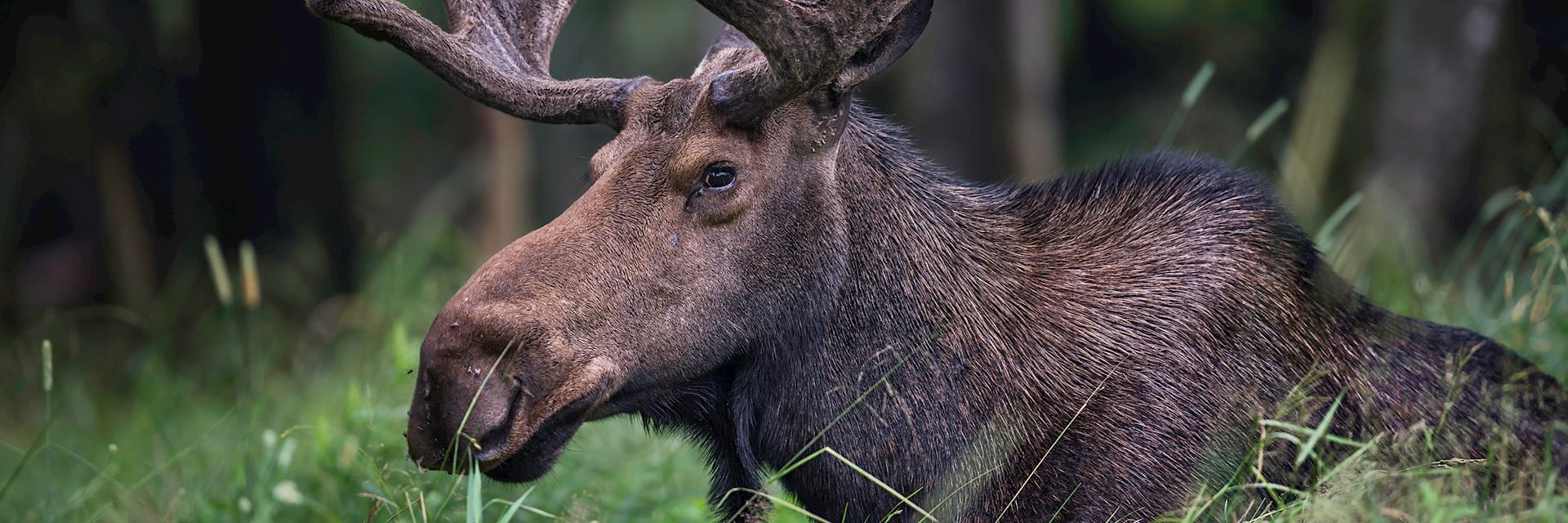
When is the best time to visit Canada?
- Month-by-month
The best time to visit Canada is during the summer months, when sunny days and pleasant temperatures are the norm. Despite Canada’s size, weather patterns are largely the same across the country, with defined seasons similar to those in Europe. Coastal regions are usually more temperate than prairie provinces, and mountain ranges attract higher rainfall and snow in some areas than others. However, it’s cold everywhere in winter and warm in most locations in summer.
Springtime, which starts in late April through to early June, can also be a delightful time of year to visit. Gradual snow melt reveals forests and wildflowers, while Canadian wildlife re-emerges from the long winter hibernation.
September is considered the peak of the salmon run, attracting large numbers of bears. It also marks the start of autumn, with spectacular fall foliage lasting into October.
- Make an enquiry
- Request a brochure
Month-by-month guide for travelling in Canada

Visiting Canada in January - March
The weather is unquestionably cold at the start of the year, but if you're prepared and have packed appropriately you can enjoy the many activities and festivals that take place during the Canadian winter. There are popular cultural and sporting events and some incredible wildlife experiences, but perhaps best of all is the amazing phenomenon illuminating the dark winter skies known of course as the northern lights.
Events & Festivals
- Québec Winter Festival (last weekend of January to February): Lasting 14 nights, this is the world’s largest winter carnival, notable for incredible ice and snow sculptures. A great opportunity to combine with exploring Québec.
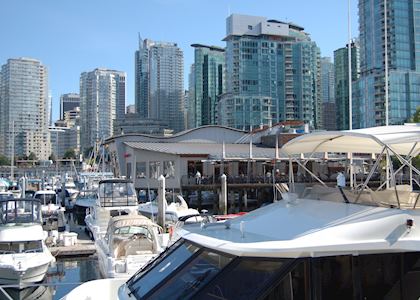
Visiting Canada in April
A good time to travel to Canada, with improving weather and longer days. Vancouver and the west coast in particular feel more pleasant. High up in the Rockies, the ski season is at its best with sunny days and blue skies. Elsewhere in the country, the chill of winter starts to disappear but weather can be unpredictable — be prepared for a variety of conditions.
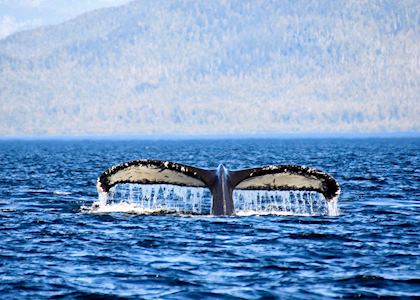
Visiting Canada in May
Warmer weather, fewer crowds and lower costs make May a good time to visit Canada. There's still some chill in the air, but with the snow largely gone and spring flowers blooming many lodges start to reopen and national parks become more accessible, allowing visitors a chance to explore in relative solitude before the peak season starts. This time of year is also perfect for whale watching on the Atlantic coast, with humpbacks, minkes and belugas frequently sighted.
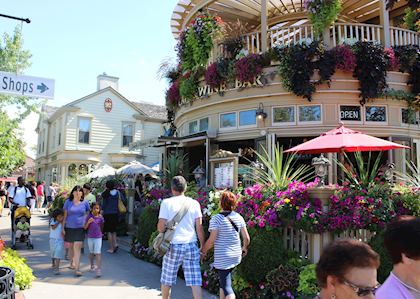
Visiting Canada in June
June is, for many, the ideal time to visit Canada. The full peak summer season hasn’t quite started, but the days are warm and long. Hiking trails are open, the lakes and rivers have thawed and wildlife is increasingly active. In the north of the country, parts of the Yukon, Nunavut and Northwest Territories that have previously been inaccessible because of snow open up to uncover mountain ranges, forest valleys, lakes and glaciers waiting to be explored.
- Festival de Jazz de Montréal (June and July): The largest event of its kind, the festival attracts thousands of global jazz artists and features hundreds of concerts, with many events free of charge.

Visiting Canada in July - August
The long summer days offer opportunities to enjoy the great outdoors through the wonderful hiking, boating, camping and fishing opportunities available across the country. Summer festivals, including Canada Day and the Calgary Stampede, take place, and outdoor dining is popular in towns and cities. Summer is also a great time to view orca on the west coast of Canada as they follow migrating salmon on their long journey.
- Calgary Stampede (July): An annual rodeo and festival celebrating cowboy culture. The ten-day event is highly recommended and very popular. Often referred to as the ‘Greatest Outdoor Show on Earth’ and well worth combining with a more in-depth exploration of Calgary.
- The salmon run (late August to November): One of nature’s great events; salmon return from the ocean in huge numbers, travelling into the river systems of the west coast for spawning and attracting hundreds of bears and other predators.
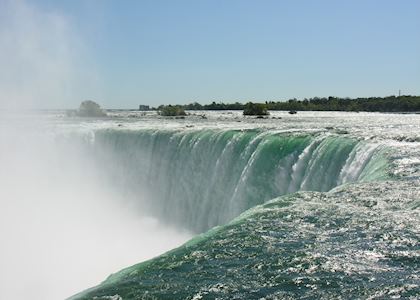
Visiting Canada in September - October
The weather is comfortable in autumn, and the changing colours of the fall foliage is spectacular. Most outdoor activities can be enjoyed and temperatures, though cooler, are still pleasant. It is a great time to visit Niagara Falls in particular; with fewer crowds and the stunning autumn colours along the Niagara Gorge. September also sees the start of the salmon run and is consequently a good month to witness bears fishing for migrating salmon. October starts to get colder still, but offers the chance to spot polar bears as they make their way back from their summertime habitat.
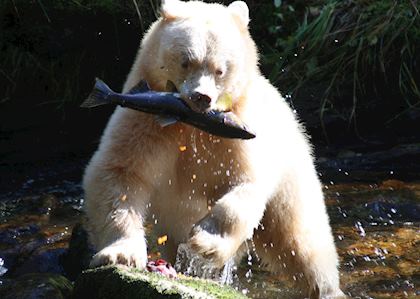
Visiting Canada in November - December
The days are darker, snow may have started falling and the temperatures drop with the onset of winter. Despite this, November and December are still lively months, with holiday season festivals and the re-opening of ice skating rinks making for great family entertainment.
- Toronto Santa Claus Parade (mid-November): A festive parade of decorative floats and costumes. It is now one of the largest parades in North America, attracting over half a million spectators each year.
Canada Climate Guide
Why travel with audley.
- 100% tailor-made tours
- Fully protected travel
- Established for over 25 years
- 98% of our clients would recommend us

Travel advice
Practical tips for travelling to Canada, from social protocols to guidance on money matters, with a link to the latest FCDO travel advice.

Request our brochure
Covering all seven continents, The World Your Way shows you how you can see the world with us. It features trip ideas from our specialists alongside hand-picked stays and experiences, and introduces our approach to creating meaningful travel experiences.
Trip ideas and travel guides for exploring Canada
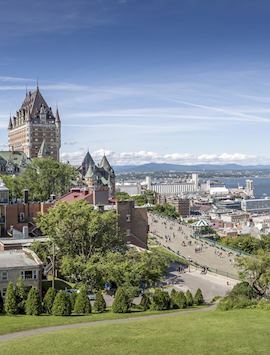
Canada's eastern cities by train
11 days from £3,485pp
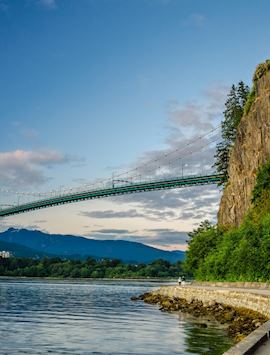
Jewels of western Canada self-drive tour
16 days from £4,785pp

Self-drive holidays in Canada

Family holidays to Canada
10 min read
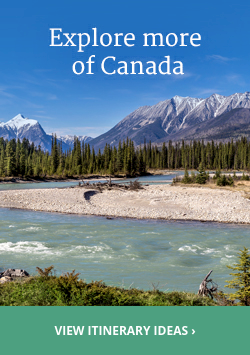
- Deutschland
Best Time To Visit Canada
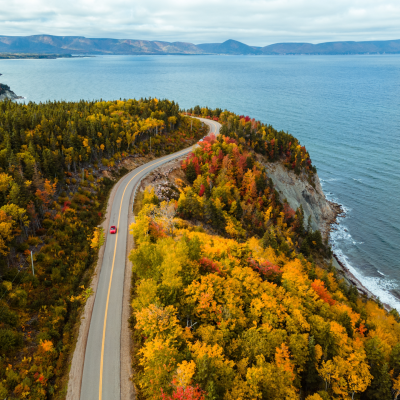
Experience the Great White North through the seasons
Canada is all about glorious summers and fairytale winters, sparkling lakes and majestic mountains, charming cities, and incredible outdoor adventures. Find the best times to visit Canada so you can experience this stunning country to its fullest.
The summer months, typically from late June – early September, offer some of the best weather conditions to travel to Canada. The spring months from April to June are also a wonderful time to witness the change in seasons as the trees start to bud and flowers start to bloom (especially on the West Coast where spring can arrive much earlier than other parts of Canada). Fall, which runs from September to October, is also a picture-perfect time of year.
Best Time To Visit
We recommend.
- Travel to Whistler Blackcomb, Canada’s winter playground on the West Coast, for top level skiing and many more outdoor activities and fun
- Art aficionados, head to the Royal Ontario Museum in Toronto
- Witness surreal snow-covered landscapes as you take a sleigh ride in Banff National Park
- Night parades, snow sculptures and more are part of the Quebec Winter Festival
- For some of the best maple syrup tastings and festivals, head to Quebec
- Walk amongst giant trees at the Cathedral Grove in Vancouver Island
- Vancouver takes on a pink hue as the city celebrates the Cherry Blossom festival
- Experience a riot of colors at the Butchart Gardens on Vancouver Island
- Welcome spring at the VanDusen Botanical Gardens in Vancouver
- Ride the Jasper Sky Tram and walk over the Glacier Skywalk to witness the beauty of Jasper National Park
- For sweeping views of Montreal, climb to the top of Mount Royal
- Take a water taxi and enjoy one of the many hip restaurants and galleries on Granville Island in Vancouver
- Spend time discovering the charming neighborhood of old Quebec, a UNESCO World Heritage site
- Walk along the shores of Lake Moraine in Banff for stunning views of the surrounding mountains and glaciers
- For the best views of Toronto, head to the observation deck at the CN Tower
- Take the Skyride up Grouse in North Vancouver
- Take a boat cruise over the crystal clear waters of the Maligne Lake in Jasper
- Wander the cobblestone alleys of old Montreal
- Head out on a whale-watching excursion in Victoria on Vancouver Island, to see some of the resident killer whale pods
- It’s salmon spawning season in British Columbia
- Walk or cycle along the Seawall at Stanley Park in Vancouver
- Take a boat tour around the Toronto Harbour and Islands for a picturesque view of the city
- Marvel at star-studded skies at the Dark Sky Festival in Jasper
- Take the train from Toronto to Montreal to view the beautiful array of colors through the countryside
- Enjoy a trail ride in Vancouver
- Take a gondola ride up the Sulphur Mountain in Banff for incredible views of the majestic Rocky Mountains
- The indoor St.Lawrence Market in Toronto is the perfect place for a gastronomic tour
- Revel in the festive spirit at Quebec’s Christmas markets
- Visit the impressive Notre-Dame Basilica of Montreal
- Ski the slopes of Mont Tremblant in Quebec or snowshoe one of the local mountains in Vancouver
Best time to visit Canada by season
The most popular time to visit Canada is during the summer months from June to August. Cities in Eastern Canada, such as Toronto and Montreal, experience summers that are hot and humid. In contrast, Victoria or Vancouver, on the West coast, see more moderate temperatures and little humidity. As soon as the sun begins to shine, everyone heads outdoors.
The autumn months of September and October see leaves changing colors, particularly in the Eastern part of the country. Temperatures drop into the mid-50s to mid-60s, and you may encounter some rain.
Winter sets in by November and can extend all the way up to March or even early April. Temperatures dip below freezing across the country with most parts blanketed in white snow. Some areas can experience more extreme cold with temperature falling well below freezing and gusts of cold winds. The only exception to this are the coastal cities of British Columbia where winters are generally mild with very little snow and much more rain in the cities. It’s a great time to visit Canada if you are up for some winter sports and fun.
While the West coast experiences spring-like weather as early as February, many other parts see temperatures only begin to warm by April. It’s an unpredictable time of year with some rainfall, cold evenings, and chilly winds, so best to dress for the weather to enjoy the experience.
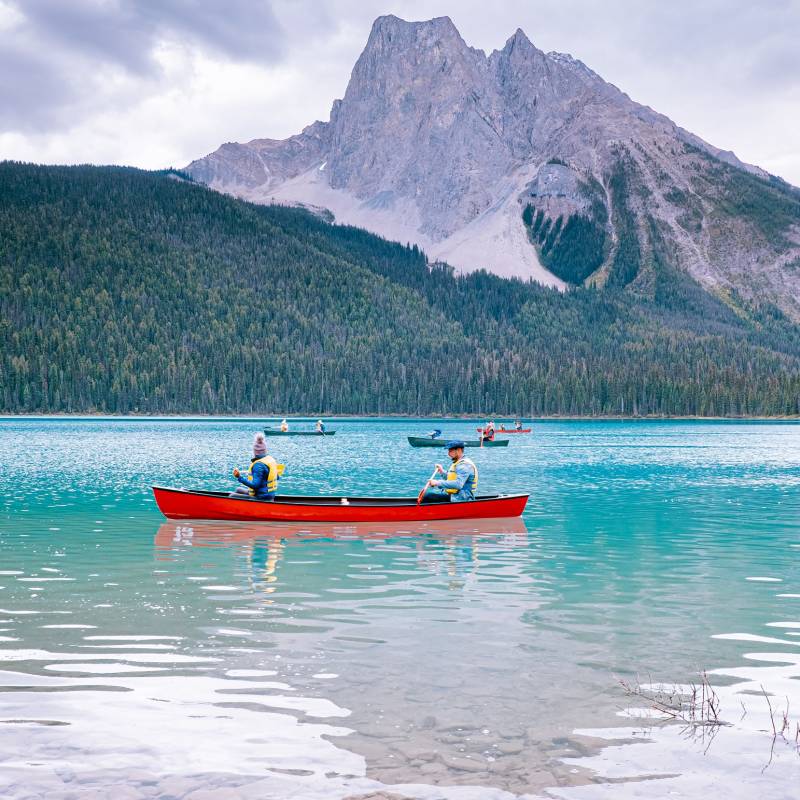
What to pack for a trip to Canada?
Canada experiences four distinct seasons, so what you pack for your trip to Canada depends on when you are visiting the country.
Summers on the east coast can get hot and humid, so it’s best to pack airy, breathable clothing. Shorts, breezy tops and casual dresses work well for summer. There are plenty of outdoor activities to participate in during these months. If you are planning on hiking, pack a good pair of walking/trekking shoes. It’s the perfect time for swimming in the country’s many lakes, so do pack a swimsuit.
Spring and fall seasons can be quite unpredictable, so pack light layers that you can add or remove depending on weather conditions. A windcheater or a light jacket is also recommended as nights can get quite chilly.
Winters in Canada call for your warmest jackets and protective winter gear, including gloves, winter hats (toques as referred to by Canadians), thermals, and woolen socks. No matter when you are visiting Canada, it’s best to pack protective rain gear – a raincoat or an umbrella, to keep you dry from a sudden shower.
Speak to our travel experts to discover what would be the best time to visit Canada for you. With our tailor-made itineraries you can be sure you will truly experience the best of what this spectacular country has to offer.
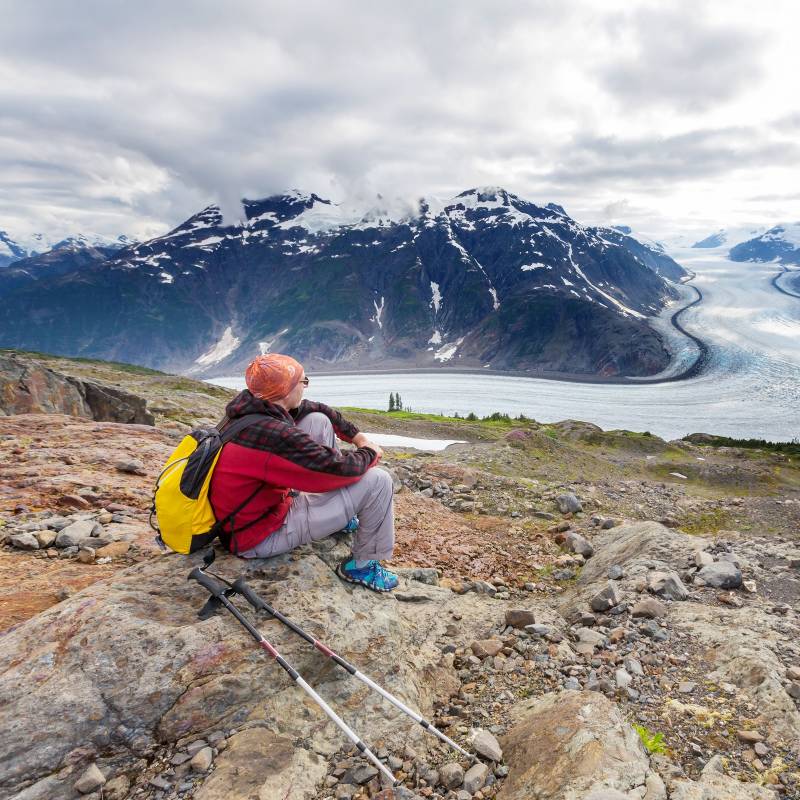
Popular Trips to Canada
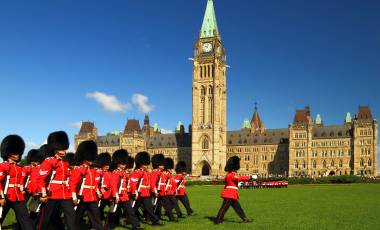
Highlights of Eastern Canada
You might think you are in Europe as you gaze at the Notre Dame Basilica in Montreal, and catch sight of the ceremonial guard in their red uniforms in Ottawa. But East Canada has a delightful charm of its own, which you will love exploring over the course of nine lovely days. Marvel at the…

Signature Rocky Mountaineer Experience
Enjoy lovely landscapes and memorable experiences as you wind your way through one of Canada’s most beautiful regions. Savor the assorted charms of Vancouver and learn about the First Nations people before boarding the iconic Rocky Mountaineer train. Keep your camera handy and enjoy the on-board service as it journeys through the interior of British…

Northwest Passage: In the Footsteps of Franklin
From glacier-filled bays and fascinating wildlife to quaint towns and Inuit villages, each day of this Canadian Arctic experience promises to be a memorable one. Prepare to be mesmerized by the magnificence of the Northwest Passage, with its glaciers, fjords, icebergs and mighty ice-covered mountains. Your expert guides will help you spot polar bears, seals,…
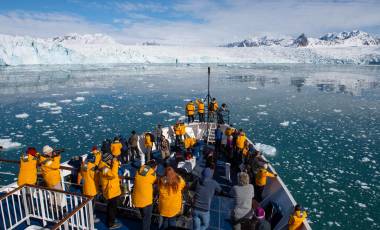
Arctic Express Canada: The Heart of the Northwest Passage
Dreaming of an Arctic adventure? This nine-day tour of the Arctic Circle is filled with some of the most immersive experiences – helicopter rides over the icy tundra, Zodiac cruises, exciting wildlife encounters and opportunities to delve deep into the unforgiving region’s history, culture and ways of life. Contrast this adventure with a city break…
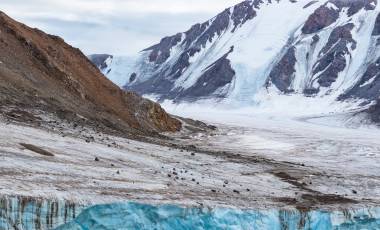
Canadian Arctic: Northwest Passage to Ellesmere and Axel Heiberg
Marvel at the sheer beauty of the Canadian Arctic as you head out on an adventure like no other and explore its waters and lands. Step aboard your expedition ship and follow in the footsteps of the daring adventurers who first discovered this remote and untouched region. Stand on top of the world, literally and…
From the Blog
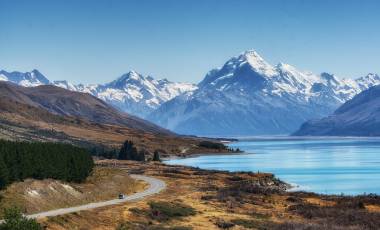
Here is Your Guide to the Best Road Trips Around the World
From fairy-tale castles to sparkling lochs, amazing wildlife and stunning natural scenery, embark on a truly immersive experience!

Exploring Indigenous Culture in Canada
Discover the deep cultural history of Canada’s first inhabitants.

Rewind and Unwind with 6 Vintage Travel Experiences
Do you have a desire to step back in time to an era where travel is as much about enjoying the simple pleasures and experiences? Our travels can be technology-free – where we don’t feel the need to check the number of kilometers journeyed on our GPS app, respond to an email on our Smartphone…
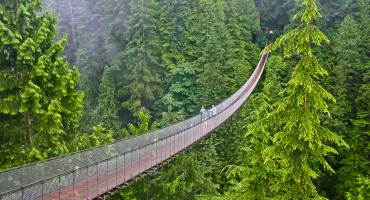
Canada Travel Guide
Best places to visit.
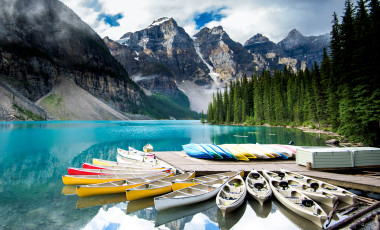
A resort town in the heart of the Rocky Mountains and part of Canada’s oldest national park, Banff is an outdoor enthusiast’s haven. One of the various ways that you can travel through the region is onboard the Rocky Mountaineer Train.
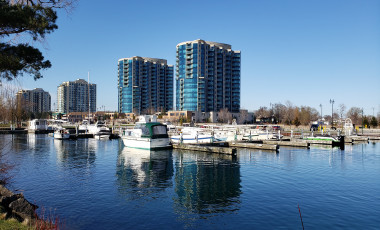
Barrie, located on the banks of Lake Simcoe, lures you in with its natural beauty as well as contemporary cityscape. Its waterfront is as pretty as it gets with lively beaches and beautiful parks lined with cafes, restaurants, water sports and boat cruises.
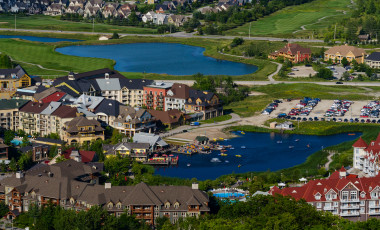
Blue Mountains is a town in southwestern Ontario, popular as a year-round destination for both leisure and adventure travelers. The town is picturesquely located at the confluence of the Beaver River and Nottawasaga Bay.
Blue Mountains
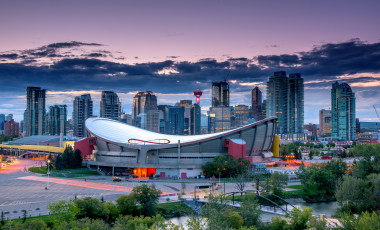
An ever-evolving and dynamic cosmopolitan city, Calgary still maintains the tranquility of the Rockies. It is fairly easy to take a gondola ride or hike along a trail to reach a secluded spot in the mountains beside a lake, capture panoramic views and get back to the city in a few hours.
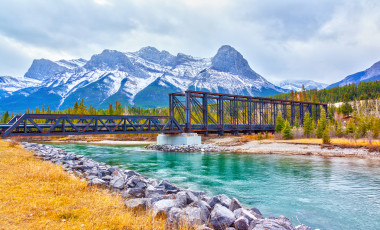
Connect with nature at Canmore, a stunning mountain town within the Canadian Rockies in Alberta, Canada. Situated on the fringes of Banff National Park, Canmore welcomes you with superb alpine scenery, and outdoor adventures aplenty.
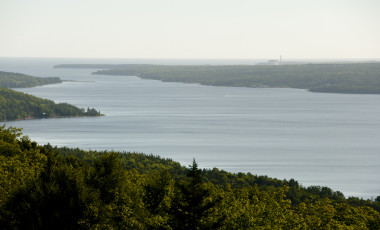
Cape Breton Island lies off the northeastern coast of Nova Scotia. Miles of coastline and stunning scenery place it among the top island destinations in the world.
Cape Breton Island/West Bay
The enchanting difference, authentic & unique.
Our award-winning, licensed local guides provide incredible insights and exclusive experiences for you.
Personalized & Private
Our experts completely customize your private tour to match your interests and preferences.
High-Quality Experiences
All our accommodations and services are personally tested by our team.
Fully Supported Travel
You’ll have a personal and dedicated trip coordinator, backed by 24/7 support in case of emergencies while you’re traveling.
Financial Protection & Flexibility
Your booking is flexible and completely secure with us.
Safe & Secure
Your safety and well-being are our top priorities.
Do you have a vacation in mind? Personalize your itinerary with our Trip Builder.
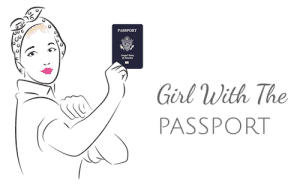
Local’s Epic Guide to the Best Time to Visit Canada
By: Author Girl with the Passport
Posted on Last updated: February 24, 2024
Categories North America
Planning a next-level awesome trip to Canada but unsure about when is the best time to visit Canada is for you?
If so then this giant guide on when to visit Canada is totally for you. Not only does it contain secret expert tips from a real local who was actually born here, but it breaks down the best time to visit Canada depending on where you want to go and what you want to do during your visit.
Additionally, you’ll receive detailed info on what the weather is like based on the month and the region you are visiting – something that makes trip planning a whole lot easier.
So, stop guessing and start creating the Canada itinerary of your dreams with this massive guide on when to visit Canada.
This post may contain affiliate links. Please see my disclosure for more information. As an Amazon Associate, I earn a small commission from qualifying purchases.
When is the Best Time to Visit Canada?
Truth be told, most Canadians will say it’s always a great time to visit! In general, though, the best time to visit Canada is between June through October. After all, during this time visitors will experience the best weather.
Because during the summer, from June to the end of August, the temperatures are warm and the sun is shining. Plus, all seasonal businesses and attractions are open. Then in the fall, from September through October, temperatures are still comfortable and the bugs of summer are long gone.
However, for those looking to ski and snowboard, the best time to visit Canada is in the winter months.
Canada in the Winter – December through March
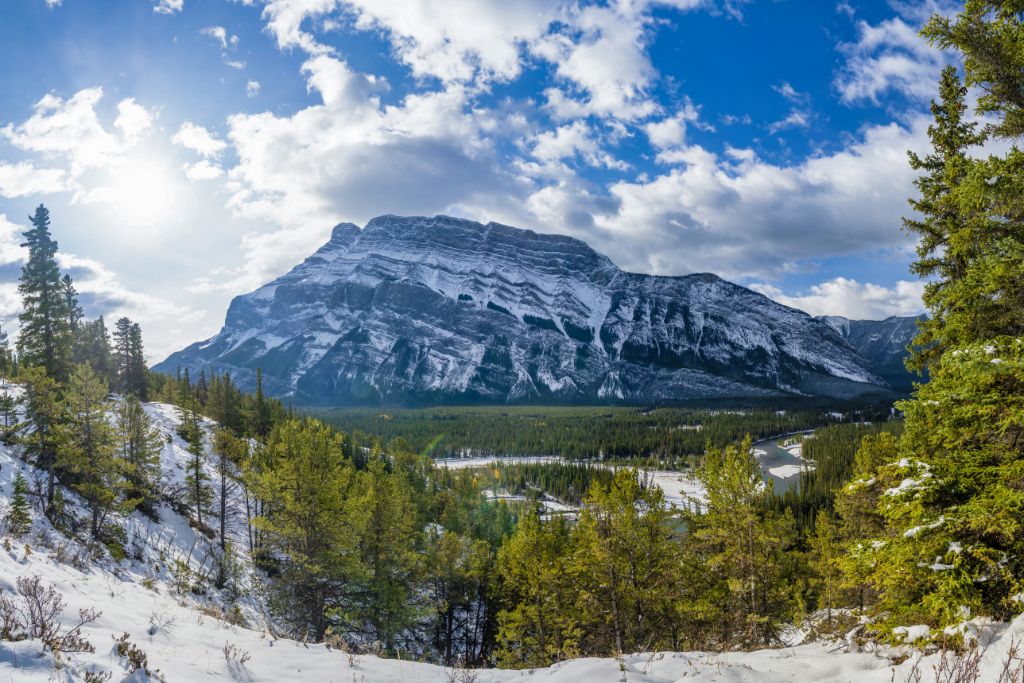
Spring in Canada can be a beautiful time to visit. However, it can also be one of the wettest times to go!
Plus, some regions in Canada can get light snow right through into May. And then with the winter thaw, the ground can get super mudday.
With that said, spring is a great time to visit and is easily the best time to visit Canada for many reasons!
See, for many provinces in Canada , the snow is starting to melt or is completely gone. For example, spring usually arrives earlier on the west coast, as do the flowers.
Therefore, visitors can enjoy average temperatures above 32°F. Plus, you’ll be beating the summer crowds and high-ticket prices.
There are aksi a ton of fun things to do in the spring in Canada! Because as the old saying goes, with all those showers, you’ll find plenty of flowers!
As a result, flower festivals spring up (pun intended) all across the country in the spring. And one of the best spring festivals in Canada is the Vancouver Cherry Blossom Festival.
The event takes place every year from the end of March through the middle of April. So, throughout the city, you’ll find a variety of activities like musical shows, workshops, and plenty of cherry blossoms in full bloom!
Additionally, another top attraction that makes spring the best time to visit Canada is the Canadian Tulip Festival in Ottawa!
See, every May in Canada’s capital that are millions of tulips planted! As a result, this incredible festival boasts a wealth of colorful blooms that spread out across the city and that are perfectly complemented by food trucks, walking tours, and other pop-up events.
Additionally, spring is the time of year when that sweet gold (aka maple syrup) that Canada is best known for starts a-flowin’!
So, if you’re looking to taste maple syrup in all its forms then visit one of the many maple syrup festivals that take place throughout Ontario and Quebec. Many are home to a wide assortment of fun activities like wagon rides, maple taffy tastings, and more!
Canada in the Summer – June through August
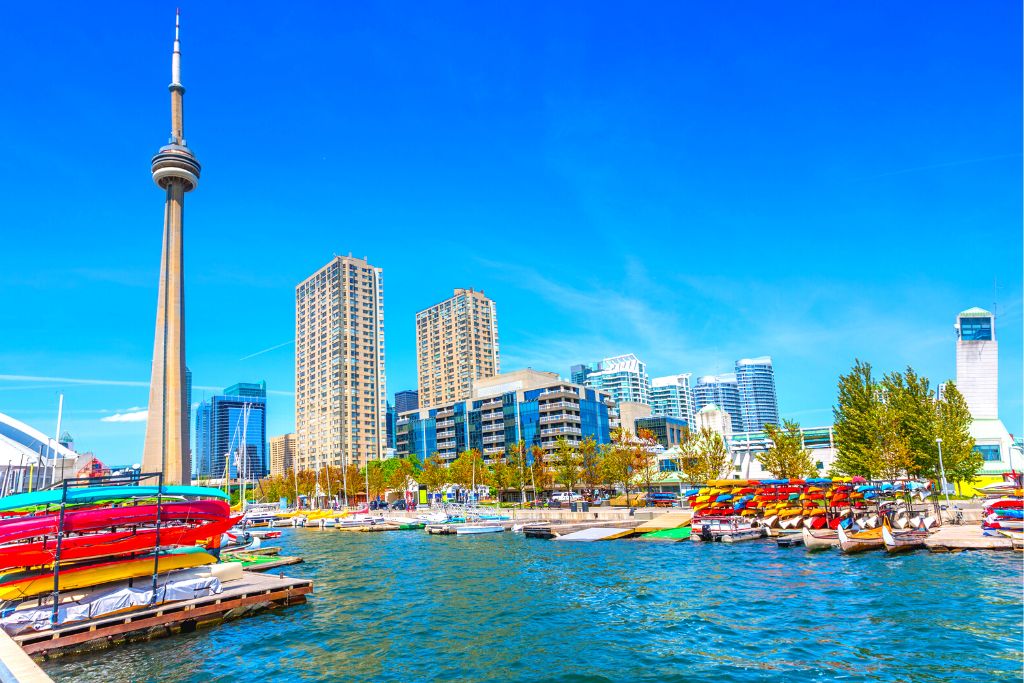
Summer in Canada is one of the best times to visit! There’s heat, sun, fun, and a ton of things to do!
In fact, many people travel to Canada in the summer for the epic hiking trails, incredible camping spots, beautiful lakes, and endless Quebec road trip possibilities!
And that’s mainly because Canada’s weather from June through August is pretty dang ideal. So, on both the east and west coasts expect average temperatures in the low 70s °F.
Then in the Prairies, Ontario, and Quebec it’s much warmer and averages between 77°F and 86°F. Though, it can occasionally rise to 104 °F – perfect weather for the beach!
Plus, added bonus? The summer months in Canada are filled with exciting festivals and events!
And one of the biggest celebrations of the year is July 1st, aka Canada Day! Therefore, across the country, you’ll find a bunch of events taking place during this long weekend, including epic fireworks displays.
However, a few top cities to celebrate Canada Day in include Toronto , Ottawa, Montreal, and Vancouver.
Plus, this is the time of year when the world’s largest jazz festival takes place in Montreal, Quebec!
In fact, between June and July over 3,000 musicians from across the world descend on the city. Accordingly, most of the streets in downtown Montreal become pedestrian-only to welcome millions of visitors to the metropolis.
Then in Calgary, Alberta, another top event in Canada takes place every July. Yup, The Calgary Stampede is a beautiful combination of fair and rodeo! The event also features plenty of fun things to do including concerts, parades, agricultural exhibitions, rides, and more!
Yet another summer tradition in Canada that makes summer the best time to visit Canada is folk festivals!
A few famous ones can be found in Orillia, Winnipeg, Vancouver, and Newfoundland! Most of these artsy festivals showcase a variety of musicians across numerous stages as well as artisan markets and food trucks.
Canada in the Fall – September through November
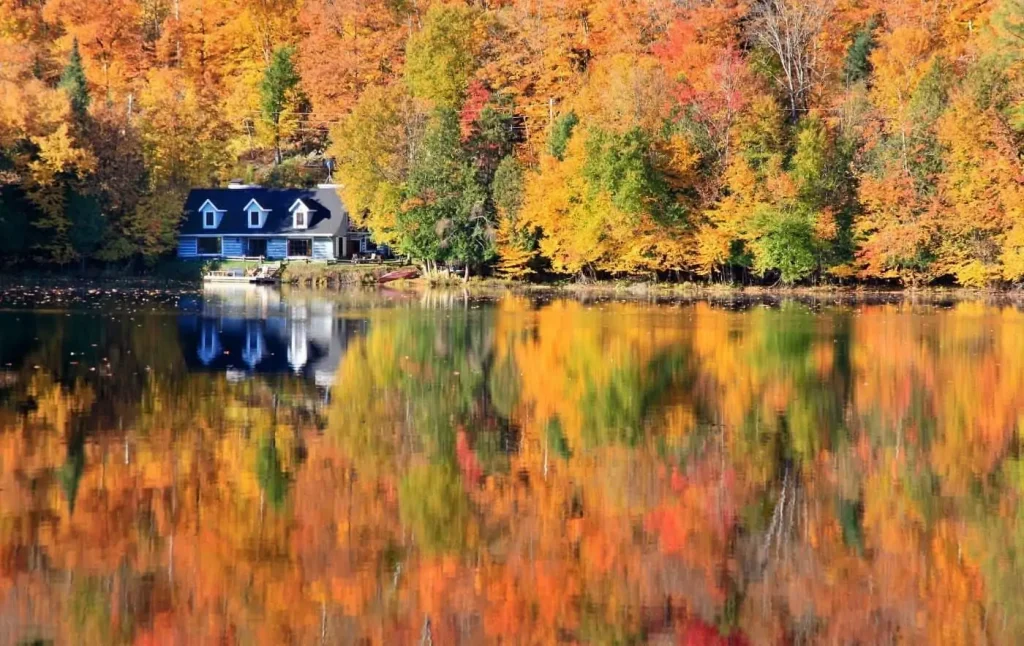
Many say summer is the best time to visit Canada. However, many others say it’s in the fall!
In fact, autumn in Canada extends from September through to the end of November. It’s also a great season for budget travelers looking to avoid peak season prices and large hordes of tourists.
Just be aware that temperatures vary greatly depending on where you are in the country. But, average daily temperatures are generally between 40°F to 70°F.
So, while it’s a bit cooler than the summer months, fall in Canada means fewer thunderstorms and much fewer bugs. However, snow can start as early as October in many areas, so be prepared.
And the top attraction in Canada in the fall is the incredible fall foliage! So, many people travel to Canada for the chance to experience the color change seen across the trees in the autumn.
So, a few top places to see fall colors during the best time to visit Canada include Ontario’s Muskoka region, Alberta’s Rocky Mountains, Cape Breton, and the Laurentian Mountains in Quebec.
Plus, one of the best fall festivals of them all takes place in BC’s Okanagan Valley. Yeah, The Okanagan Wine Festival is held every October and is perfect for anyone looking to enjoy some of the best wines in the country, in addition to supremely scenic views.
Plus, autumn in British Columbia means that many people come to see the Salmon Run! In fact, this incredible event is when millions of sockeye salmon collectively swim up river to spawn.
It’s truly a sight to see! and a couple of great places to witness this natural phenomenon are Vancouver, Victoria, and Port Alberni.
And then any movie buffs out there will love to visit Toronto in September! Because every year stars descend upon the city for the annual Toronto International Film Festival.
So, expect a ton of red carpet film premieres as well as talks with casts, and workshops that spring up all across the city.
When to Visit Canada for Good Weather?
For the best weather in Canada, you’ll want to visit between June and August. This is peak season and filled with warm and sunny days. Temperatures can hit 85°F, making it perfect for visiting beaches and enjoying outdoor adventures.
And while summer provides visitors with the best weather, it’s also peak tourist season. So, you’ll want to keep that in mind when planning your trip. Plus, summer also means plenty of bugs and humidity, depending on where you go!
However, in September and October, you’ll generally find nice weather too! It all just depends on your comfort and what you want to do. Because comfortable temperatures fall temperatures are perfect for hiking and include plenty of sunny days with no bugs!
Best Time to Visit Canada – British Columbia Weather

British Columbia has the most consistent weather when compared to other regions of Canada. Although, you’ll definitely get weather extremes that result in some of the wettest and driest places in Canada.
And that’s mainly because the climate here is influenced by both the Pacific Ocean and nearby mountain ranges.
In particular, the southern coast of BC is mild throughout the year. So, daytime temperatures average around 68°F. Plus, this area is known for having the mildest winters in Canada since it seldom gets below freezing here.
In contrast, the interior of British Columbia sees much warmer daily highs that can reach 86°F in the summer months. Then in the winter daily highs can easily dip below -4°F.
Additionally, many areas of BC, like Vancouver, don’t see much snow but instead get lots of rain throughout the winter. Though, the further north you go the more snow you’ll see.
Best Time to Visit Canada – Alberta Weather
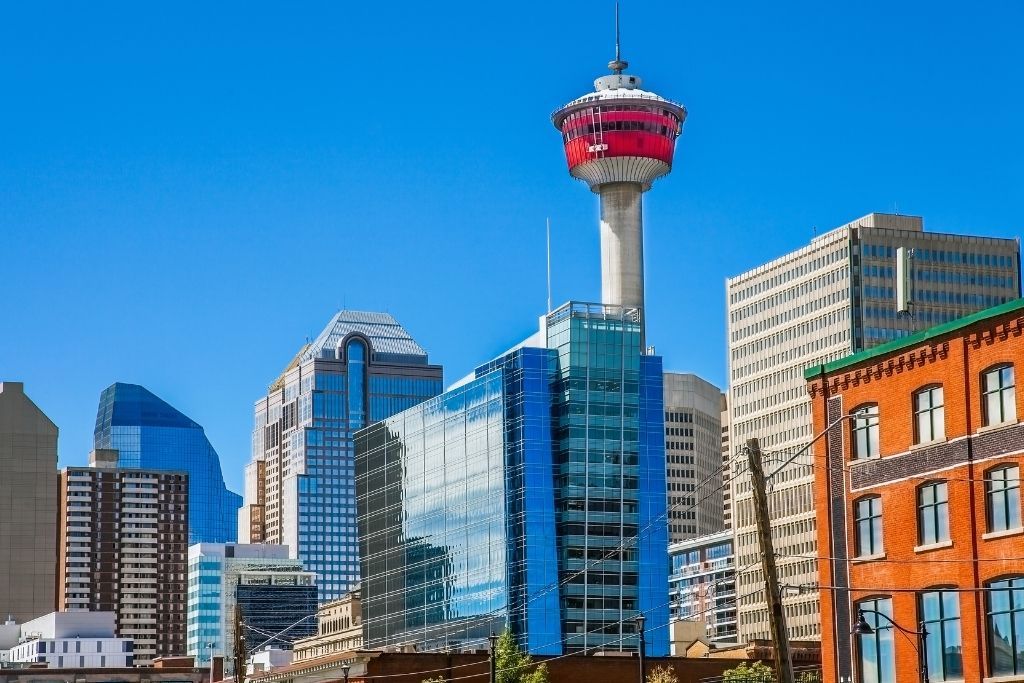
This may surprise you but Alberta lays claim to the most days of sun out of any other province in Canada. It’s also known for having extremely hot summers and brutally cold winters.
In particular, Calgary sees comfortable temperatures in the summer. However, their winters are long, snowy, and extremely cold. Therefore, temperatures can vary greatly between 12°F to 75°F.
And the coldest month in Alberta is January, which has daily average temperatures of around 21°F. However, it can easily fall below -4°F, or colder! You’ll also find plenty of snow in the mountainous regions of Alberta. Though, much of the rest of the province stays mostly dry in the winter.
Another thing to note is that Alberta is home to the Chinook winds. And what this means is that the dry air from the Pacific Ocean drops down across the Rockies’ eastern slopes and causes the temperatures to rise by 40 °F very quickly.
Best Time to Visit Canada – The Prairies (Saskatchewan and Manitoba) Weather
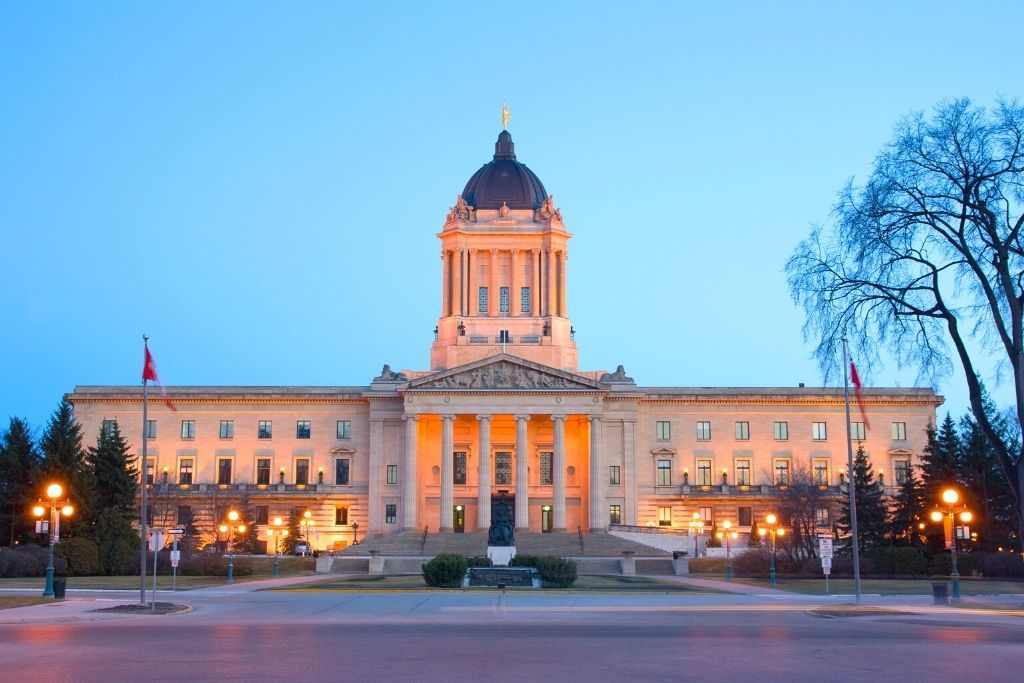
Weather is all about extremes in the Canadian Prairies! Because thanks to massive amount of Arctic air, the Prairies are considered one of the coldest places in Canada in the winter.
The Prairies also have dry semi-arid climates that result in average precipitation of between 12 to 15 inches annually. However, most is in the form of rain in the spring and summer.
In contrast, summers are usually quite warm in the Prairies, with temperatures between 60 and 95°F.
In particuliar, Saskatchewan is said to see the most sunshine in the region. However, do note that summer nights are usually cooler when compared to daytime highs. Therefore, do pack a jacket even when traveling here in the summer.
Conversely, winters in Saskatchewan and Manitoba are brutally cold! So, starting in November, temperatures will begin to sit below freezing.
In fact, Winnipeg – aka “Winterpeg” – is one of the coldest cities on the planet! Temperatures here can regularly drop below -6°F!
Although, this doesn’t stop residents from embracing the cold with a variety of fun winter activities!
Best Time to Visit Canada – Ontario and Quebec Weather
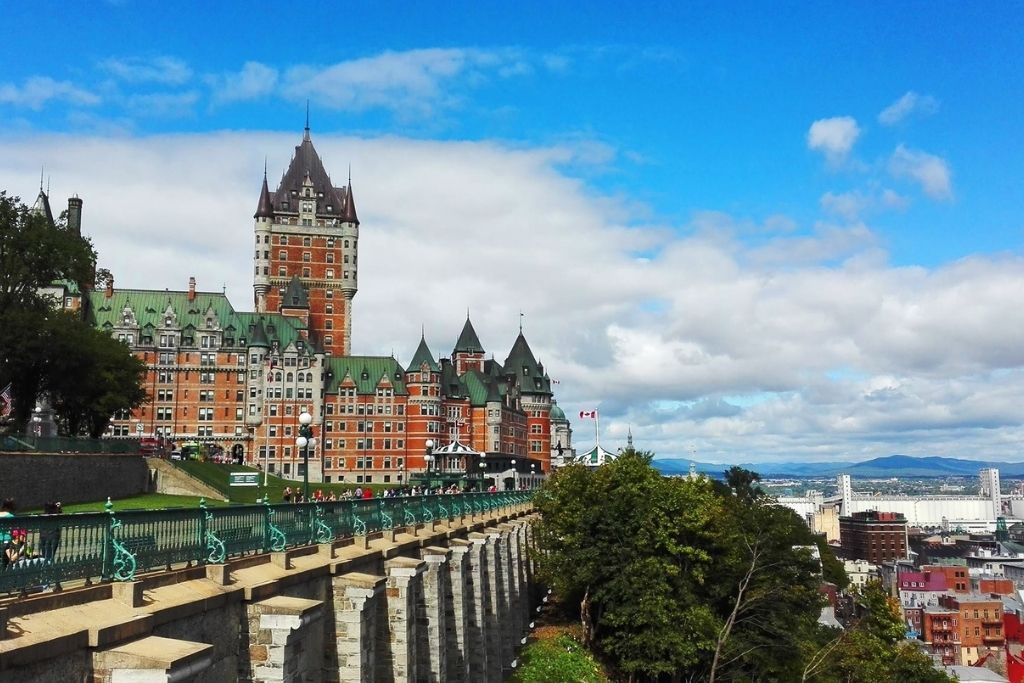
Ontario and Quebec are much like the Prairies when it comes to extremes of hot and cold. And with four distinct seasons annually, weather fluctuates throughout the year.
So, summers are hot and humid, while winters are cold and snowy. And then spring and fall are a mixed bag of snow and rain as well as cool and comfortable temperatures.
However, one of the warmest regions in all of Canada is Ontario. Therefore, between June and September, temperatures range from 68 to 77°F.
Although, they can often rise in southern Ontario to 86°F, with the addition of humidity too – something that happens in Southern Quebec too.
Also know that both provinces are massive and that weather varies depending on how far north or south you travel.
Therefore, the further north you travel, the more comfortable the summer weather will be. Although, winters can see average snowfalls that total upwards of 7 feet. So, be prepared!
Best Time to Visit Canada – Maritimes Weather (Nova Scotia, Prince Edward Island, New Brunswick, Newfoundland & Labrador)
Eastern Canada, known as the Maritimes, is a mix of a slightly continental and mostly coastal climates.
So, on average, the summers are short and mild, but wet. In the winter, though, many areas are cold and experience a lot of snow, in addition to incredibly strong winds.
Therefore, the best time to visit the Maritimes is between June and September. Not only will everything be open but you’ll experience lovely weather too.
However, do realize that there is no such thing as “normal” summer weather in Atlantic Canada. Yeah, thanks to the Atlantic Ocean visitors can expect crazy rain storms and then clear skies a few hours later.
In general though, average summer temperatures for the Atlantic provinces of Nova Scotia, Prince Edward Island, and New Brunswick are in the upper 70s.
Additionally, Newfoundland and Labrador are very similar climatically to the southern Maritime provinces, though they feature slightly cooler temperatures.
After all, summer temperatures hover near 61°F while winter temperatures are around 32°F. Also be aware that winters in Newfoundland and Labrador are much harsher than in the south.
Best Time to Visit Canada – Territories Weather (Yukon, Northwest Territories, Nunavut)
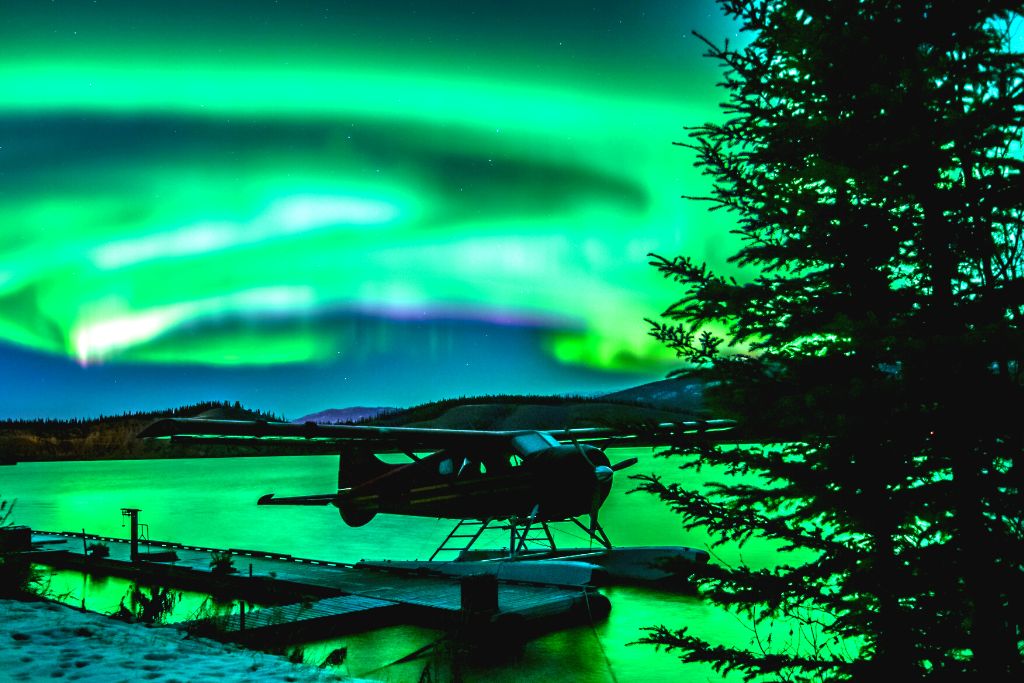
The Canadian Territories include anywhere in mainland Canada that is above latitude 60° north and west of Hudson Bay.
Plus, it includes all the islands north of the Canadian mainland from James Bay to Queen Elizabeth Islands.
As a result, The Yukon, Northwest Territories, and Nunavut see a big variation in temperatures because of their subarctic climate.
That means that they experience short, warm summers, with highs upwards of 68°F, and then experience a rapid drop in temperatures in the fall, with winter temperatures often around 40°F or cooler.
Now, for the Northwest Territories, July is the most favorable month for comfortable temperatures of between 68°F and 77°F.
In turn, January is the coldest month, with an average of -6°F, while April is the driest month.
In also worth noting that the coldest, and most remote part of this region is Nunavut. Summers can be mild, with average temperatures between 42 and 52°F, while winters are frigid and harsh, averaging between-17 and -26°F.
Fun Fact: Eureka, Nunavut is the coldest place in Canada, with temperatures averaging −3°F for the year!
When Can You Visit Canada on a Budget?
Budget travelers can visit Canada between January and March as well as between mid-September and November since this is considered the off season in Canada.
With that said, Canada is not a cheap place to travel to. So, for travelers on a budget, you can comfortably plan to spend between 55 and 75 USD a day.
However, to stay within this budget you’ll have to stay in hostels, use public transportation, and stick to free activities.
What is the cheapest time to visit Canada?
For those traveling by air, the cheapest month to fly into Canada is January. Usually, at the start of every new year, you’ll find plenty of deals on flights, in addition to various other travel discounts.
You’ll also love that January through the beginning of March is off season for Canadian travel, thanks to the harsh winter. weather So, many hotels will offer insanely discounted rates.
Therefore, is a little bit of cold and snow doesn’t scare you off, then the best time to visit Canada for you would be in January.
What month is the hottest in Canada?
The hottest month in Canada is July! During this peak summer month temperatures average 77°F for the high and 63°F for the low.
And while July is on average the hottest month, temperatures vary depending on where you travel.
It’s also worth noting that the hottest city in Canada is Toronto, with temperatures reaching daily highs of 86°F.
Plus, many other parts of Canada also experience high humidity during the summer months, making the temperatures feel even warmer.
How many Days do you Need in Canada?
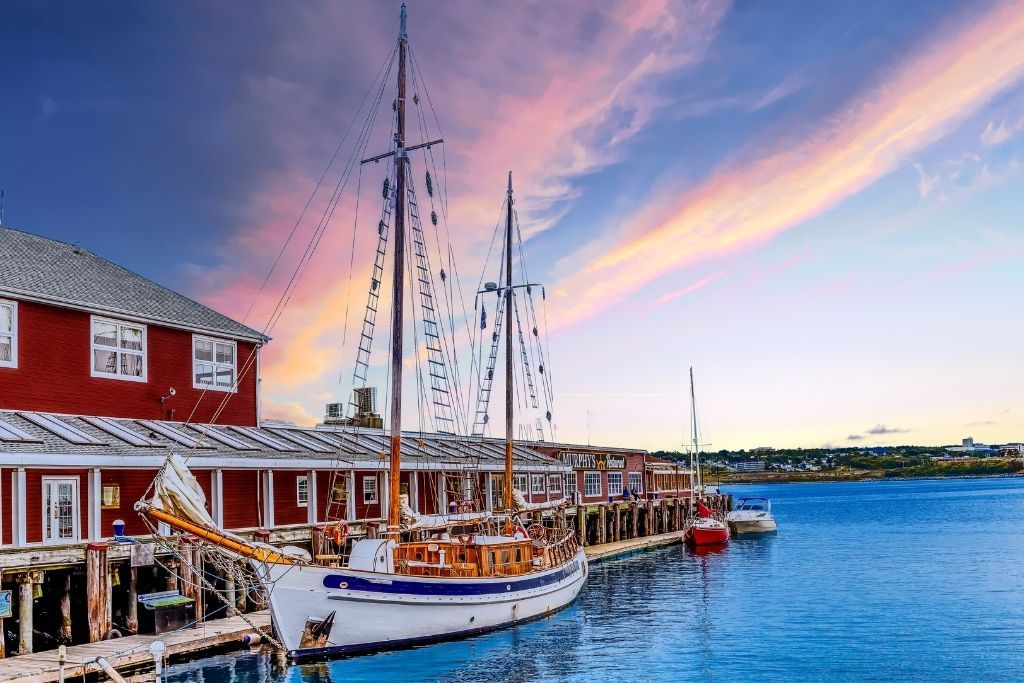
Most visitors to Canada can stay in the country for up to 6 months. However, most tourists have a limited amount of time to travel.
So, it’s best to choose one area to focus on during your trip since Canada is hella massive. Then, you can always return to visit another region or province that interests you.
Personally, I recommend that you spend a minimum of between 10 and 14 days in Canada. And while you’ll only be able to see a small portion of the country, it’s a good start!
And when you spend between 10 and 14 days in Canada, you’ll be able to focus on a particular area, like the East Coast or the Rockies.
One thing to note though is that for most Canadian itineraries you’ll need a vehicle. So, be sure to book your rental car far in advance of your road trip!
Is it good to visit Canada in May?
May is an ideal time to visit Canada! During May all the trees and flowers will start to bloom. The rain of early spring also starts to lessen and the days start to warm.
Therefore, the month of May is easily one of the best times to visit Canada in terms of weather. Plus, you’ll beat the summer crowds and prices will still be affordable.
Additionally, most seasonal hotels and attractions start to open in May. So, you’ll find plenty of things to do!
Plus, many festivals take place throughout May in Canada, like the always popular Canadian Tulip Festival in Ottawa.
And if you’re hoping to enjoy outdoor activities, May is perfect! It means comfortable weather, fewer insects, gushing waterfalls due to snow melt, and lots of open hiking trails.
Best Time to Go to Canada For Families
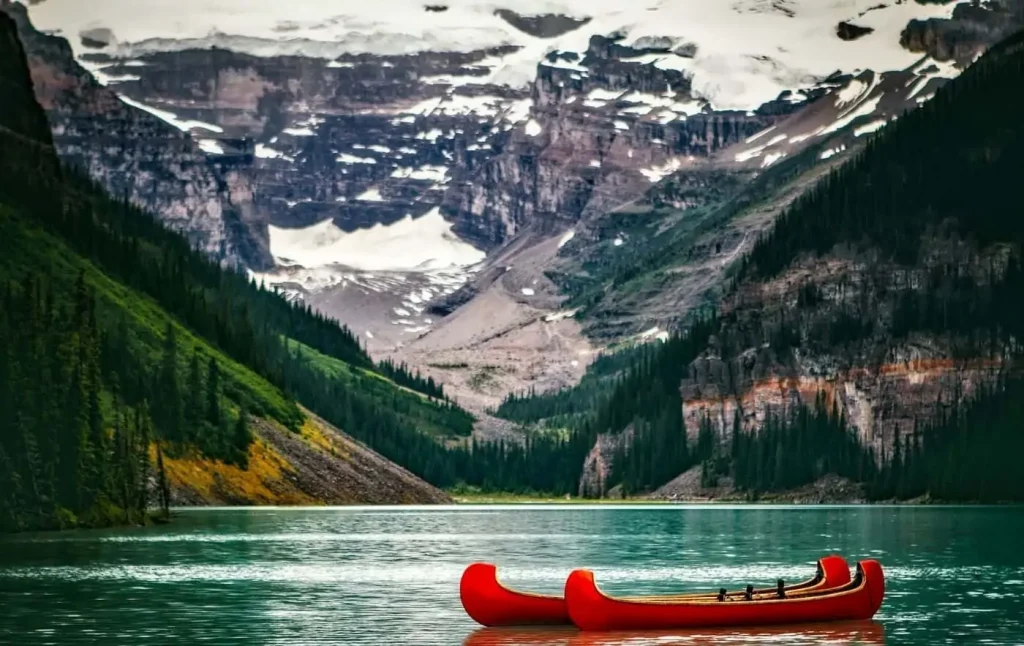
Most kids are off school for summer vacation from the end of June through August. So, the best time to go to Canada for families is during the summer.
After all, families can enjoy the optimal weather which includes plenty of sunshine and warm temperatures.
Plus, visiting during the summer means that everything, from top attractions to museums, is open!
However, summer is also the prime tourist season in Canada! So, you’ll want to book your holiday the year before you go. This will ensure you get the accommodation you want as well as cheaper flights for the entire family.
And while you’re at it, pack your patience since this is the best time to visit Canada that includes large crowds.
Best Time to Go to Canada to Avoid the Crowds
When traveling to Canada the best time to avoid crowds is either frim May to June or from September through October. Though, when you visit largely depends on what you want to do.
So, if you’re looking for warm temperatures, visit between mid-May and the end of June. This will help you beat peak tourist season and will ensure that all seasonal attractions are open.
But, for those looking for cooler temperatures, consider visiting between September and October. Most tourist attractions will still be open and with the kids back to school, you’ll avoid large summer crowds.
Additional Canada Resources You’ll Love
- Pros and Cons of Living in Canada
- Best Places to Live in Canada
- Best Brunch in Montreal
- Romantic Getaways in Nova Scotia
- Best Brunch in Vancouver
- Best Hikes in Vancouver
- Best Brunch in Toronto
- Best Souvenirs from Canada
There you have it! That just about wraps up this guide to the best time to visit Canada.
Tell me, when is your favorite time to visit canada, and if you found this post useful, don’t forget to join our email list before pinning this post now so that you can read it again later..
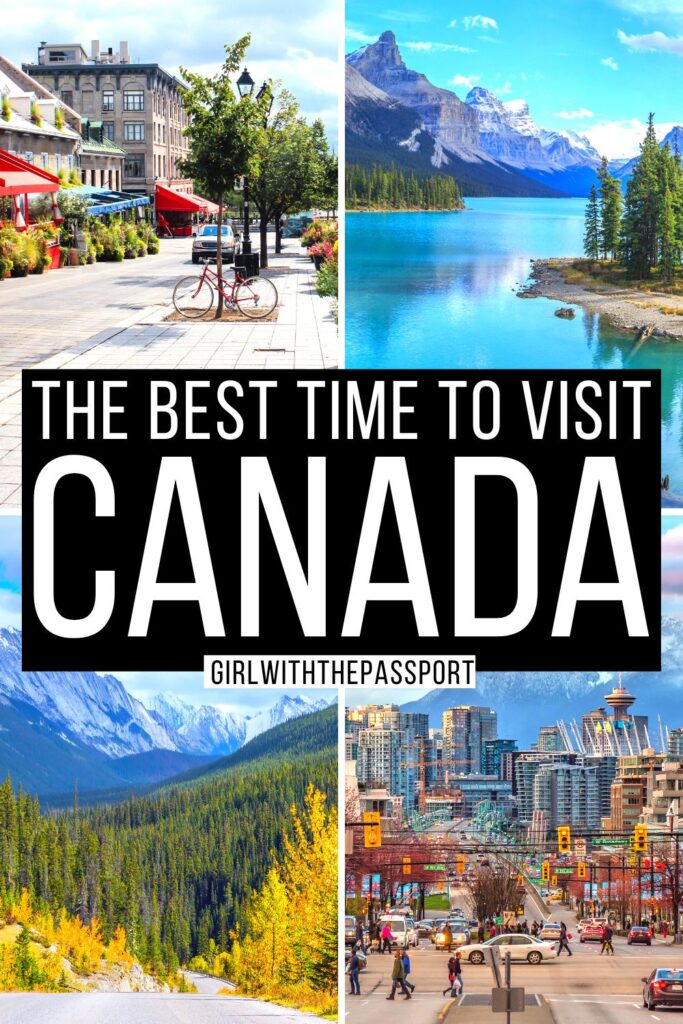
Privacy Overview
The Best Time to Visit Canada for Weather, Safety, & Tourism
The best times to visit Canada for ideal weather are
June 25th to September 9th
based on average temperature and humidity from NOAA (the National Oceanic and Atmospheric Administration). Read below for more weather and travel details.
Canada Travel Guide
Temperature.
- Perceived Temperature
- Rain and snow
- Humidity and wind
- The busiest and least popular months
- Overall travel experience by time of year
Other Canada Travel Info
Weather in canada.
Average temperatures in Canada vary drastically. Considering humidity, temperatures feel cold for most of the year with a very low chance of rain or snow throughout the year. The area is somewhat temperate — in the 44th percentile for pleasant weather — compared to tourist destinations worldwide. Weeks with ideal weather are listed above . If you’re looking for the very warmest time to visit Canada, the hottest months are July, August, and then June. See average monthly temperatures below. The warmest time of year is generally late July where highs are regularly around 72.1°F (22.3°C) with temperatures rarely dropping below 51.8°F (11°C) at night.
Canada Temperatures (Fahrenheit)
Canada temperatures (celsius), “feels-like” temperatures.
The way we experience weather isn’t all about temperature. Higher temperatures affect us much more at higher humidity, and colder temperatures feel piercing with high winds. Our perceived temperatures factor in humidity and wind chill to better represent how hot or cold the day feels to a person.
Canada Perceived Temperature (F)
Canada perceived temperature (c), average canada temperatures by month.
Daily highs (averaged for the month) usually give the best indication of the weather. A significantly lower mean and low generally just means it gets colder at night.
Show Fahrenheit
Show celsius, precipitation (rain or snow).
If dry weather is what you’re after, the months with the lowest chance of significant precipitation in Canada are February, March, and then January. Note that we define “significant precipitation” as .1 inches or more in this section. The lowest chance of rain or snow occurs around early February. For example, on the week of February 5th there is 1 day of precipitation on average. By contrast, it’s most likely to rain or snow in mid June with an average of 1 days of significant precipitation the week of June 18th.
Chance of Precipitation
The graph below shows the % chance of rainy and snowy days in Canada.
Snow on the Ground
The graph below shows the average snow on the ground in Canada (in).
Average Rain and Snow by Month
Show inches, show centimeters, humidity and wind.
Canada has some very humid months, with other comfortably humid months. The least humid month is May (56.9% relative humidity), and the most humid month is December (72.4%).
Wind in Canada is usually moderate . The windiest month is January, followed by November and April. January’s average wind speed of around 7.7 knots (8.8 MPH or 14.2 KPH) is considered “a gentle breeze.” Maximum sustained winds (the highest speed for the day lasting more than a few moments) are at their highest in early to mid March where average top sustained speeds reach 14.5 knots, which is considered a moderate breeze.
Relative Humidity (%)
The graph below shows the average % humidity by month in Canada.
The graph below shows wind speed (max and average) in knots.
Average Wind Speeds
Show wind speeds.
All wind speeds are in knots. 1 knot = 1.15 MPH or 1.85 KPH.
Show Relative Humidity by Month
Is it safe to travel to canada, the busiest and least crowded months.
The busiest month for tourism in Canada is July, followed by August and June. Prices for hotels and flights will be most expensive during these months, though you can save if you purchase well in advance. Tourists are unlikely to visit Canada in November. Those willing to visit at these times will likely find it the least expensive month.
Estimated Tourism by Month
Most popular months to visit, overall canada travel experience by season, spring (march through may).
Humidity and temperatures combine to make this season feel very cold. Highs range from 60.9°F (16.1°C) and 21.6°F (-5.8°C) with far warmer temperatures in the later months. Rain is rare with 3 to 4 days of significant precipitation per month. Spring is the second busiest for tourism, which makes it a good time for those looking for things to do.
Summer (June through August)
The middle-year months have comfortably cool weather with high temperatures that are comfortable. These months see the most precipitation with about 4 days of precipitation per month. June – August is the busiest season for tourism in Canada, so lodging and other accommodations may cost more than usual.
Fall (September through November)
Fall daily highs range from 65°F (18.3°C) and 27.2°F (-2.7°C), which will feel chilly given the humidity and wind. It rains or snows a normal amount: 3 to 4 days per month. Tourism is the slowest during these months due to the weather, so hotels may be affordably priced.
Winter (December through February)
Weather is far too cold this time of year in Canada to be enjoyable for warm weather travelers. The average high during this season is between 23°F (-5°C) and 17.6°F (-8°C). On average, it rains or snows a smalll amount: 2 to 4 times per month. These times of year are fairly slow with tourists.
Best Times to Travel › Canada
Similar Destinations
- Grand Marais, MN, US
- Lutsen, MN, US
- Tofte, MN, US
- Schroeder, MN, US
- Thunder Bay, ON, CA
- Silver Bay, MN, US
- Bayfield, WI, US
- Ashland, WI, US
- Ironwood, MI, US
- Hurley, WI, US
Popular Destinations
- Lisbon, Portugal
- Atlanta, GA, US
- Palermo, Italy
When is the best time to visit Canada?

The best time to visit Canada is from May to September. The summer (June to August) sees the warmest temperatures, but if you're looking to go off-peak, May and September will likely be quieter and have mild weather - perfect for exploring the Land of Maple Syrup.
For winter fun in Canada, the best snow is from December to March, although this can vary depending on the year’s predicted snowfall.
As the second-largest country in the world, Canada has no shortage of climate zones. Much of the country's northern region sits within the Arctic Circle , with the climate ranging from arctic to subarctic the further south you travel.
The Atlantic and Pacific-facing coasts both have an oceanic climate, however, the west has slightly warmer conditions and the east is affected by cold ocean currents. Most of Canada's interior is generally continental, except for areas like the Canadian Rocky Mountains .
Aside from the arctic areas that only experience two seasons – a long freezing winter and a short summer – the rest of the country has the usual four seasons.
Being so northern, it should be no surprise that the winters can last a little longer in Canada. Winter is typically in full swing by December and ends in March, although some ski resorts may still have favourable ski conditions until the middle of the year. Generally, March has the best snow.
Average winter temperatures are around -5ºC in places like Toronto and much of the country can get frequent snowstorms and frost. Summers can get quite hot in continental areas, reaching 40ºC. The warm months are also usually the rainiest.
If you're not much for skiing, snowboarding, winter hiking or snowshoeing , the warmest region in Canada is the Pacific West Coast, especially Vancouver where the average minimum temperature generally doesn't fall below 0ºC.
The best time to see the Northern Lights in Canada is during winter (November to March). However, in some areas, such as Alberta, Ontario and the Yukon, the lights may be visible in autumn (September to November).
Many factors affect Northern Lights sightings, but clear, dark nights between 10 pm and 2 am offer the best chance. See the Northern Lights at the Canadian Rockies from November to March on a guided small group trip.
Learn about the best time to visit the Canadian Rockies
Best for: dog sledding, snowshoeing, Banff Ice Magic Festival and Whistler Pride
Like other parts of the northern hemisphere, the start of the year is the peak of winter. In places like Ottowa, there's an average of 8 hours of sunlight so days can feel a little short –though the Canadians sure don’t let that get them down. There are many events and activities to enjoy including the Banff Ice Magic Festival and Whistler Pride.
January is primetime for snow days and rosy-cheeked fun. From dog sledding, snowshoeing, and glacier walks to s'mores by the bonfire and searching for the Northern Lights, a winter trip in Canada is definitely worth rugging up for.
Best for: Family Day, Winterlude and the Québec and Canmore winter carnivals
In other parts of the world, February is often the end of winter, but they don't call Canada the Great White North for nothing. Snowfall is heavy in February, so it's a great time to strap on those winter boots, put on a jacket (or two) and head outside for some snowy fun.
Just like January, February hosts several fun-for-all-ages events. From the famous Winterlude (home to the world’s largest skate rink) to the winter carnivals in Québec and Canmore, you’ll be spoilt for choice. For winter sports fans, enjoy Family Day weekend on the slopes.
Best for: cherry blossoms, maple syrup season and hiking
With whales breaching, cherry blossoms blooming and the sun shining, March kicks off the spring. You'll still find great skiing and quality snow as winter continues until the mid-year in far north and high-altitude areas of the country.
With up to 12 hours of sunlight in most of continental Canada, it's a great time to venture outdoors and see nature returning to life and animals waking up from hibernation. In some lower-lying regions, snowmelt causes impressive cascades of waterfalls.
March is also one of Canada's tapping months, or, as it's better known, maple syrup season. Go on the hunt to find your favourite maple-flavoured meal. How about maple bacon and french toast topped with syrup? Or for braver folk, perhaps traditional beans with maple syrup.
Best for: late-season skiing, warming temperatures and wildflowers
Some of the best skiing can be found in April, thanks to the clear and sunny spring skies. As temperatures rise and snow continues to melt, some areas may be a little muddy. The West Coast generally has the best weather for those keen to move into warmer (and likely greener) pastures. And by now, those pastures will likely be sprouting stunning wildflowers.
Because April is a shoulder season, the weather can be a little unpredictable, so it's best to pack warmly even if you're travelling to a snow-free location.
Best for: smaller crowds, Ottowa Tulip Festival, St Patrick's Day and exploring national parks
May is a perfect time to visit Canada before the summer crowds arrive. There's likely still snow in higher regions, but most of southern Canada is green by now. Activities like white water rafting, kayaking and canoeing are great from May onwards. You could also hike or bike through the beautiful Rocky Mountains where you may see mama bears and newborn wildlife .
During spring, you might even be lucky to see a floating iceberg or two along the East Coast. See this incredible sight on a Newfoundland adventure at the town of Twillingate, AKA the 'Iceberg Capital of the World'.
Events-wise, be sure to check out the Ottowa Tulip Festival and lively St Patrick's Day festivities.
Best for: National Indigenous History Month, Pride celebrations, wildlife spotting and great weather
June is a popular time to visit Canada and there’s no doubt as to why. The warm weather is ideal for wildlife enthusiasts with puffins on the Newfoundland coast , land mammals in the Canadian Rockies and aquatic wildlife in the Canadian Maritimes . Ski resorts turn into hiking havens, sun-lovers can soak it up at the beaches, and surfers can get in on the action on Vancouver Island.
National Indigenous History Month takes place in June, with 21 June being National Indigenous People’s Day. There are also summer solstice celebrations, Pride and events for Canada’s Multiculturalism Day on 27 June.
It's busy toward the end of the month, so if you'd like fewer crowds, consider travelling at the beginning of the month.
Best for: Calgary stampede, Canada Day, hiking and cycling
Summer fun continues in July, Yes, it's one of the busiest months, but it's great for adventures all around the country. Hit the trails in the Rockies , explore the Maritimes or maybe even voyage across the Arctic .
Although July can be a little rainy in places like Québec, there are about 16 hours of sunlight, so a spot of rain won't wash out your summer holiday. Just be sure to book well ahead if possible as it's a popular time of year for travellers and locals alike.
If you're around in July, consider checking out Canada Day festivities and the Calgary Stampede.
Best for: Vancouver's Celebration of Light, wildlife viewing and surfing
Canada is definitely a top 10 winter destination, but a summer holiday in Canada is also hard to beat. Like wildlife activity which peaks in August, many people are out and about in the national parks, enjoying the trails, campsites, lakes, valleys, glaciers and more. However, unlike the animals, human travellers can also soak in the odd hot spring or maybe indulge in a spot of tennis.
If you’re not much for seeing sites while working up a sweat, many big-name attractions have cable cars, sky trams and zip lines to help you get around! So, simply stand (or sit) back and take in the views.
Best for: the salmon run, Manitoba Ahbee Festival, fewer crowds and mild weather
North America sure puts on a phenomenal display of autumnal leaves during fall. And not only does Canada look like a kaleidoscope of colours from September to November, but you may even get to witness one of nature's most spectacular events: British Colombia's yearly salmon run. Watch hungry bears grab jumping chum, coho and chinook salmon in Goldstream River on Vancouver Island
As a shoulder month, temperatures start to cool down, so if your itinerary includes water sports, maybe try to get in at the start of the month. It's a quieter month than August as the school holidays end in mid-September.
Best for: Thanksgiving, autumn colours and moose rutting season
With autumn well underway, the days start getting cooler across Canada and there's an average of 10 hours of daylight. In most major cities, minimum temperatures creep toward zero and snow reappears in places like Calgary and Québec. November is also the wettest month in Vancouver.
There's less foot traffic in the national parks as the weather cools down. However, there are great opportunities for wildlife lovers with the ongoing moose rutting season, blue and humpback whale watching in the east, and even polar bear sightings in the arctic regions.
Best for: road trips, hot springs and the start of the northern lights
November will likely be a little nippy, but that means you can enjoy the country in new ways. Admire Canada's show-stopping scenery on scenic drive, a leisurely stroll or from a hot spring. Some of the best autumnal views can be found in the Rockies , Nova Scotia and New Brunswick .
Because November is a transition month between the seasons, it's often best to time an autumn trip for early November. You should also head south as winter arrives earlier in the central and northern regions.
The Northern Lights usually start appearing towards late November. Ski resorts also reopen with the arrival of snow.
Best for: Christmas markets, winter sports and New Year's celebrations
As a part arctic country, Canadians know how to handle the cold. December is a particularly great month for winter travel, with great skiing conditions and plenty of celebrations for Christmas and New Year. There are so many ways to enjoy winter in Canada , you'll be spoilt for choice.
For slightly warmer weather, consider Vancouver and the West Coast. But if you’re ready to layer up, enjoy winter sports like ice skating, ice hockey and ice fishing throughout the rest of the country. Just be mindful of reduced daylight hours; many parts of the country get an average of 7 to 9 hours.
Browse our frequently asked questions as we may already have the answer.
Let's create an exclusive trip for your group.
Why 2024 is the best year to see the northern lights
We run at dawn: Why I lace up in cities while travelling
5 ways to experience indigenous culture in the US and Canada
The top 8 destinations for travel in June 2024
Canada or Alaska? Which natural wonderland should you travel to?
4 of the best whale-watching spots in Nova Scotia
8 of the best hikes in the Canadian Rockies
8 incredible animals you’ll find in Canada
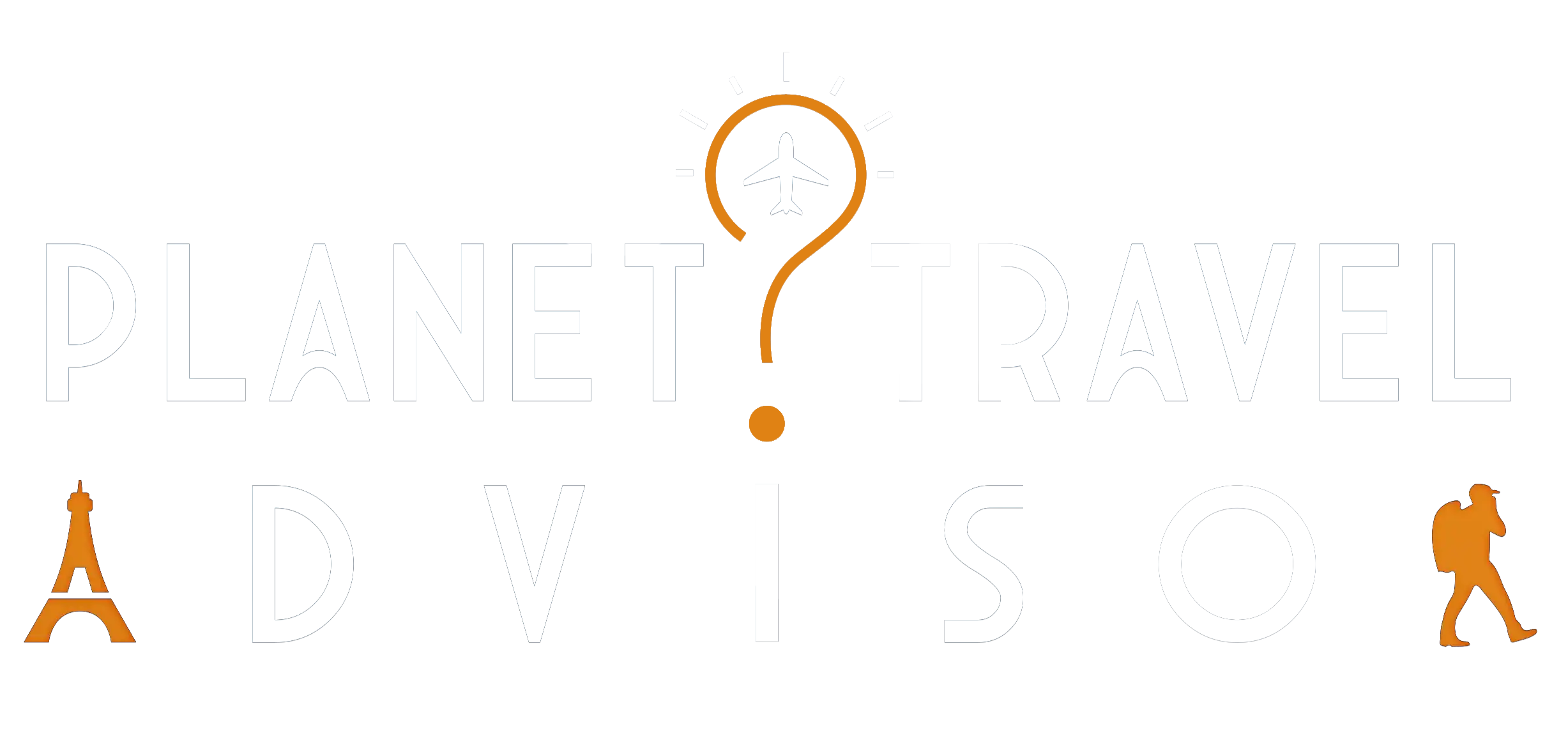
Best Time to Visit Canada in 2024
Discover the ideal times to visit Canada across seasons! Learn when to explore snowy wonderlands or bask in vibrant foliage, ensuring a perfect experience year-round.
- Canada's allure depends on the season, each offering unique experiences. Spring breathes life into the land, coaxing maple trees to blossom, while autumn showcases a breathtaking tapestry of reds, oranges, and golds.
- Summer (June-August) brings vibrant festivals and warm weather, perfect for city explorations. Autumn (September-October) offers scenic landscapes and stunning photo opportunities amidst foliage.
- From December to February, Canada transforms into a winter wonderland, ideal for skiing, snowboarding, and witnessing the mesmerizing Northern Lights.
- March to May marks a quieter yet beautiful time, with blossoming flowers and mild temperatures ideal for exploring parks and gardens.
- The best time for wildlife varies across regions, while snow enthusiasts will find ideal conditions from November to April in various parts of the country.
The best time to visit Canada 2024 is a whispered secret among seasoned travelers, a temporary window when the land awakens to a symphony of colors. As spring tiptoes in, the frost releases its icy grip on the landscape, coaxing the maple trees to unfurl their emerald leaves. The air, still crisp with lingering winter whispers, carries the promise of warmth. For those seeking solo adventures, Canada emerges as one of the best countries to travel alone , offering a diverse tapestry of safe experiences and inviting exploration amidst its breathtaking landscapes.
In the heart of this breathtaking country, where the echoes of history resonate through cobblestone streets and modern marvels, lies a tale spun by the ever-changing weather. From the rugged coasts of Newfoundland, where the Atlantic crashes against the cliffs in a fierce embrace, to the serene prairies of Alberta, where the wheat fields sway like a golden ocean under the vast sky, Canada is a patchwork quilt of climates and landscapes. Continue reading to unveil the secrets of the best time to visit Canada and immerse yourself in a captivating adventure unlike any other.
What is the Best Time to Visit Canada 2024?
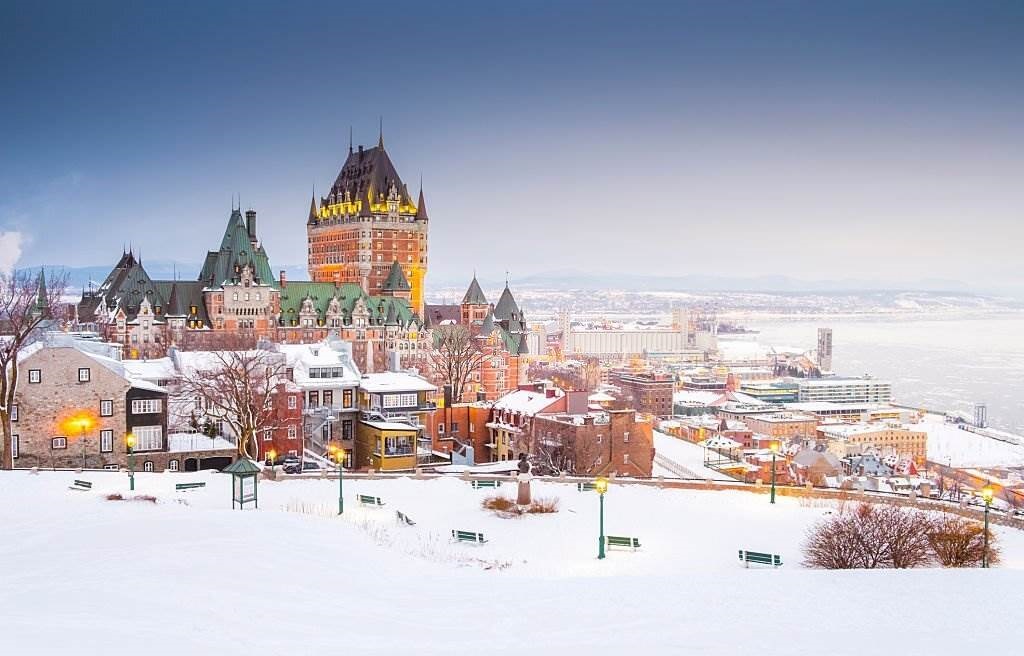
The best time to visit Canada 2024 largely depends on your preferences and the experiences you seek. Summer from June to August is ideal for those enchanted by vibrant festivals, bustling streets, and warm weather. This season unveils a Canada adorned with music festivals, outdoor events, and the chance to explore its diverse cities and natural wonders under the sun's embrace.
If you revel in the beauty of autumn foliage, September to October paints Canada in a breathtaking palette of reds, oranges, and gold. This period offers a scenic landscape perfect for hiking, road trips, and capturing stunning photographs.
Winter, from December to February, transforms Canada into a winter wonderland. Skiing, snowboarding, ice skating, and witnessing the mesmerizing Northern Lights have become enticing, especially in Alberta and Quebec regions.
From March to May, spring marks a quieter yet beautiful time as nature reawakens with blossoming flowers and mild temperatures, ideal for exploring parks and gardens.
Calling all solo travelers! Explore the best time to visit Ontario, Canada . Immerse yourself in the blossoming beauty of spring as it transforms this captivating province.
Reasons Why You Should Visit Canada in 2024
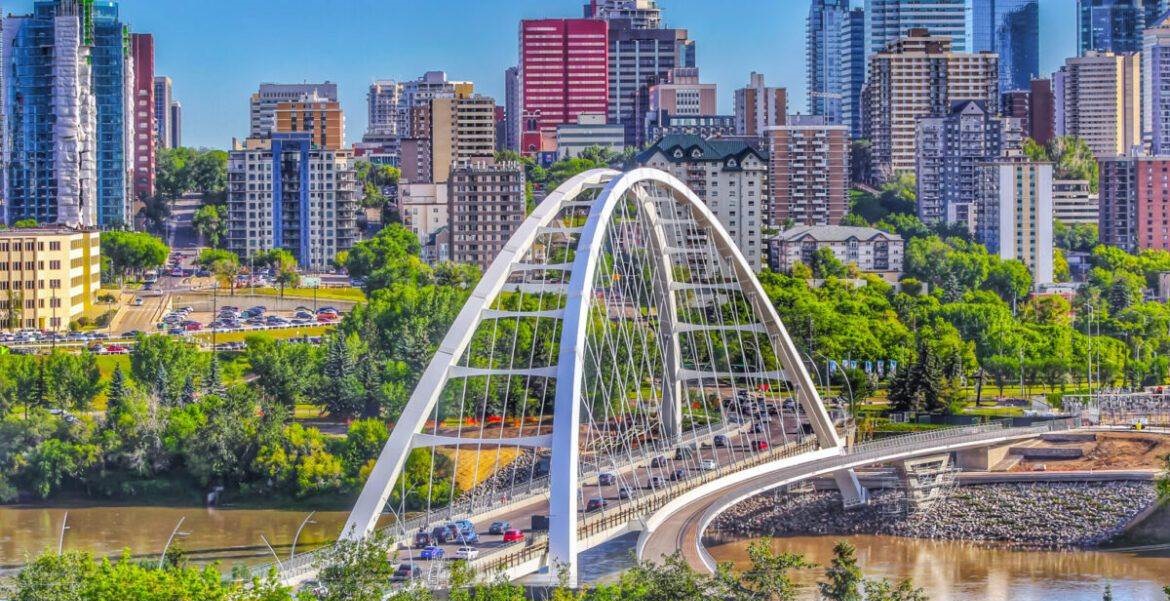
As a traveler who seeks to discover the world, Canada should be on your top list as the country has many reasons to make you visit and enjoy an unforgettable experience. The reasons below may not be enough to describe Canada, but we have picked the best ones:
- The country offers high-luxury hotels.
- Canada provides more than 45 natural national parks.
- Canada's educational systems and universities rank among the best in the world.
- Each season in Canada has a unique experience.
- Foods and drink culture are incredibly impressive.
- Fantastic festivals and public holidays.
- The country has the longest coastline on the globe.
- You can enjoy adventure wherever you go in Canada.
Canada in Winter
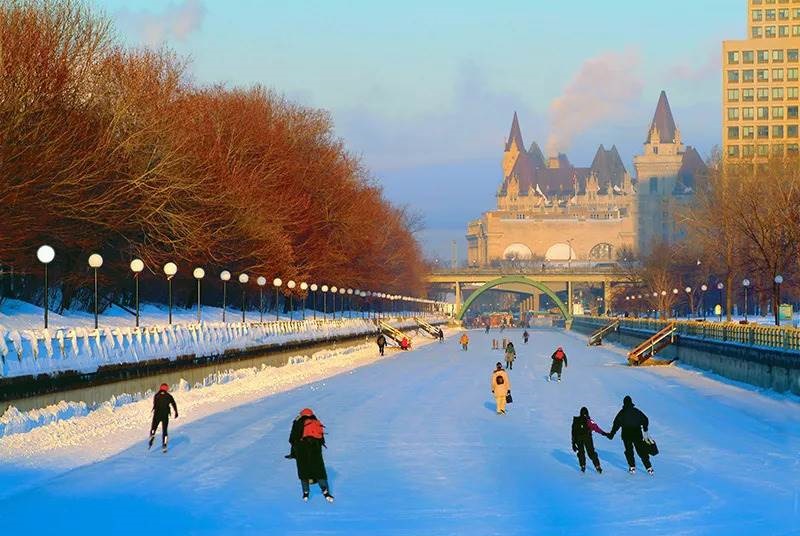
Winter in Canada begins on the 21st of December. The season ends on the 19th of March. It is easy to expect that winters are cold across the country. Also, the temperature in coastal cities like Vancouver is much more moderate. The temperature reaches 4 degrees. Celsius.
If you move to the northern regions and flatlands, the temperature reaches about 20 degrees Celsius. You will find skiing there, which will attract you to visit Canada in the winter. There, you will also enjoy the beauty of the northern lights. This lets you enjoy watching the phenomenon of many colors. If you are a winter lover and enjoy the ice, winter in Canada is the best choice.
Why Visiting Canada During Winter?
- Holiday Season.
- Winterlude Festival in Ottawa
- The temperature varies due to the vastness of the area.
- The temperature in a city like Vancouver is relatively mild in winter compared to other places where the temperature reaches minus 25 degrees Celsius.
- It's cold in winter across Canada during this season
- The winter season is characterized by your ability to perform winter sports and festivals.
- Skiing in private scenic
- Spots across the country.
- Visiting the vast mountain ranges.
- Watch the Northern Lights.
- Visiting your Canadian friends If you have a Canadian friend, this is their vacation time.
Do not forget: Take cumbersome winter clothes with you if you are going in the winter, and prepare well before visiting this picturesque area.
Canada in Autumn
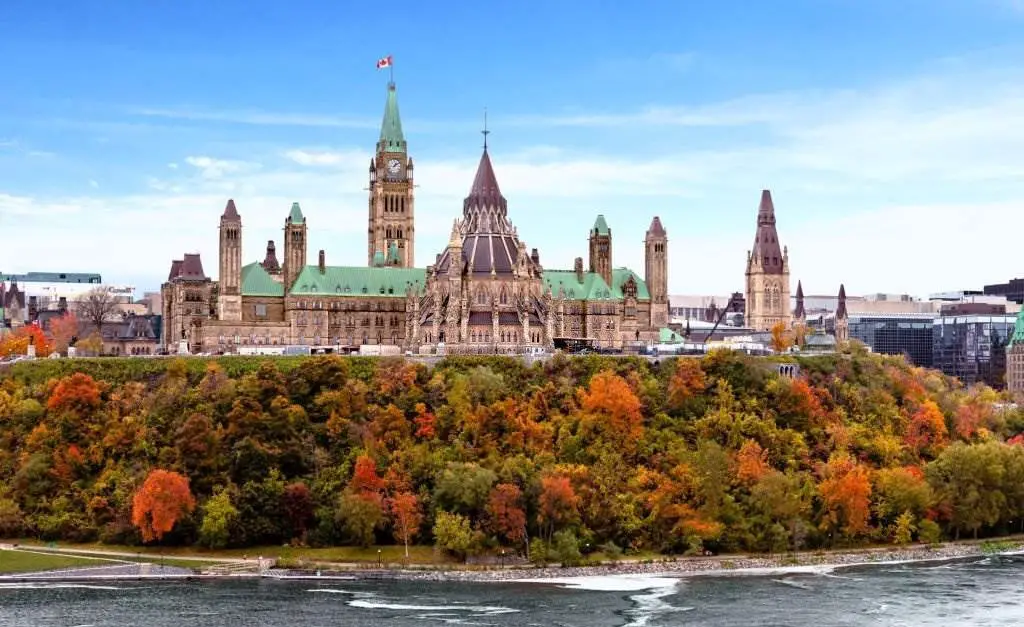
Autumn in Canada begins in September and ends in December. It is an exceptional season if you want to tour the local countries. To see all those historical sites and buildings. Or choose to do another activity as a kind of change, such as taking a tour of one of the nearby forests. The colors of the leaves will make you unwilling to take a deep breath.
You will see the beautiful green color inside the forests, the mixture of green with attractive yellow, orange, and red. You will certainly not get tired of seeing them. Those unparalleled activities and the presence of several people result in fewer visitors than in the summer. Enjoy the beautiful landscapes that you will not want to miss.
The Temperature During Canada in Autumn
As we said before, the temperatures will vary from one region to another due to the large area of Canada. However, it is far away from the winter season. But the temperature remains cold throughout the autumn. For example, in the city of Toronto, the temperature reaches. It was 16 degrees Celsius in September, about 10 degrees Celsius in October, and 4 degrees Celsius in November.
Why Visiting Canada During Autumn?
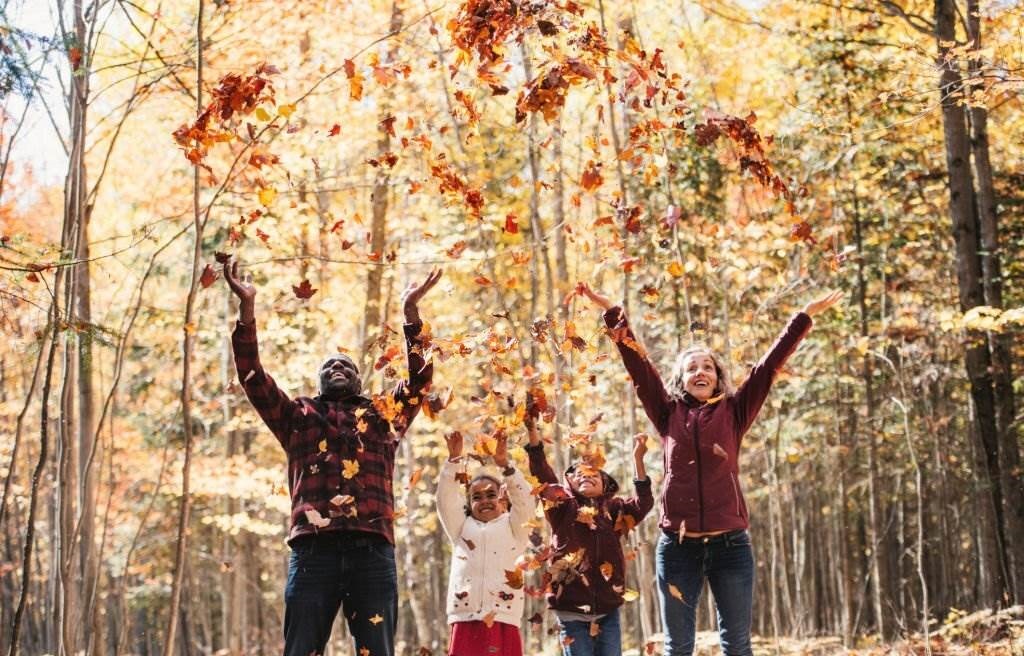
- Attend the season-changing celebration with Canadians.
- Attending the Tremblant Symbols of Colors celebration.
- Attending autumn festivals.
- There are fewer tourists.
- Enjoy calmer during this season.
- The weather tends to get a little warm, which allows you to stand at Niagara Falls.
- In this season, the temperature tends to cool down gradually.
Remember: Canada's season is far from the crowded summer season . So if you love calm, fall is the most suitable season. You can choose smaller cities because this will save you a lot of money and give you a unique and memorable trip to Canada.
Canada in Spring
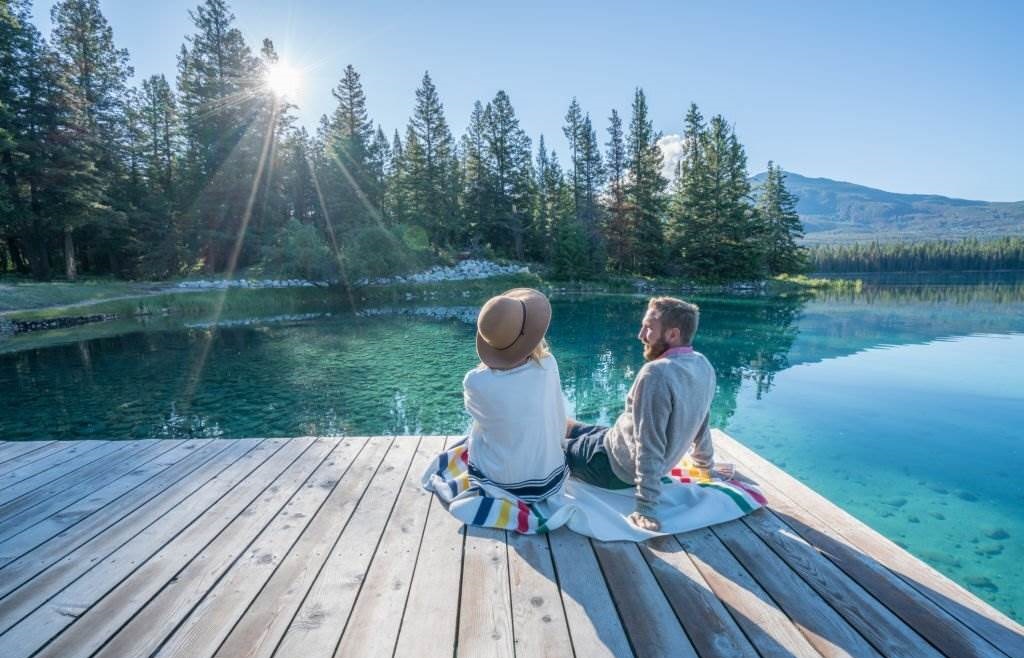
Spring starts on March 20 and ends on June 20 if you live in a reasonably warm country like Egypt and India. This season in Canada will be a bit cold for you. April is the rainiest month on the streets of Canada. It will be a unique experience for you. Be aware and well-prepared for such weather . The weather will be warm in May, and you will find fabulous, attractive flowers and green spaces thriving in the environment.
Some may consider May one of the best months to visit Canada because the weather is warm, and this month also has a unique feature: lower prices compared to the summer season. More similar to May is the month of June, which is the month directly before the month of congestion, as well as the number of its days is the longest throughout the year. What distinguishes the month of June is your ability to reach the parts North of the country to enjoy roaming through mountains, valleys, glaciers, and other lakes.
The Temperature During Spring in Canada
As we have mentioned over and over again. Because of the vastness of the area, the temperature varies from region to region. But it is essential to be aware that the temperature rises above zero during that period of the year. In some cities, the temperature reaches 12 degrees Celsius during the spring, but in other regions, it reaches less than zero degrees Celsius.
Why Visiting Canada in Spring?
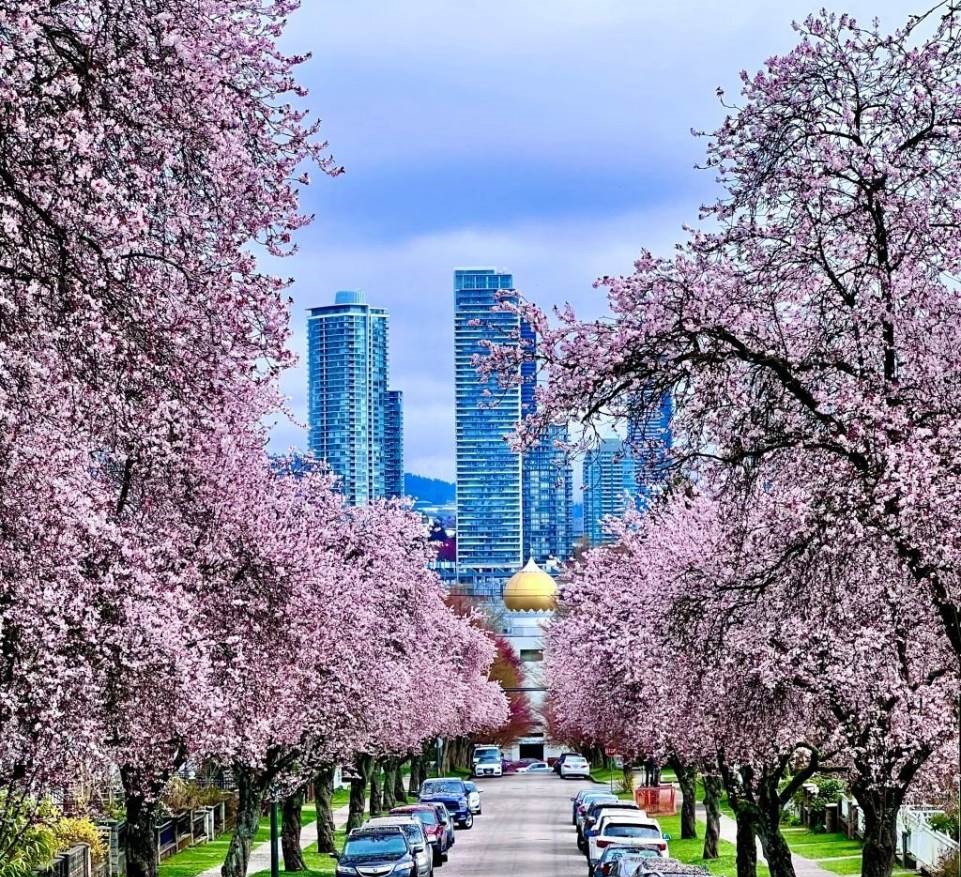
- Witness the renewal of the environment.
- Celebrating Spring Festivals with Canadians.
- Attend the Cherry Blossom Festival.
- Temperatures start low and then gradually rise during the spring period.
- The spring period is a period outside the tourism season, and therefore, you will find unparalleled prices for travel, roaming, and obtaining accommodation.
- You will have a chance to attend the spring festivals, which begin to grow flowers and complete their growth by the end of the spring season.
Remember to have umbrellas and shoes that protect you from the rain because this is the rainy season so that you can have unparalleled fun.
Canada in Summer
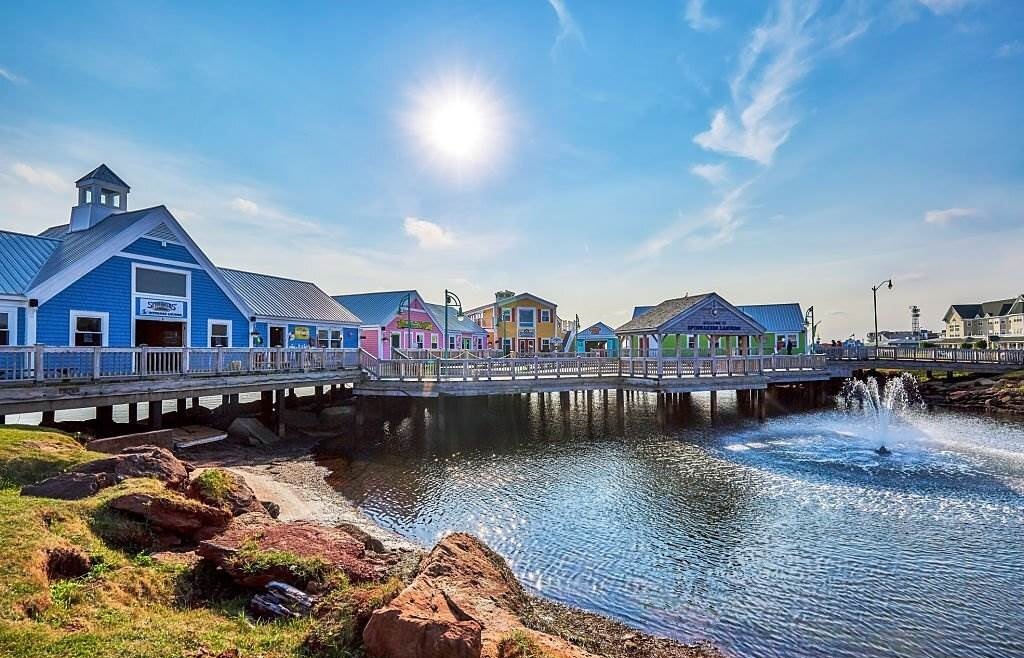
Summer is the high season in Canada. It is the busiest season in July and August, which is for the logical reason of being able to travel much more quickly. You can act like a cowboy in July and enjoy the Festival de Jazz de Montreal. During which you will enjoy jazz music. Nature is in this place; you have many places and sites to visit and explore in the summer.
The Temperature During Summer in Canada
There is no need to repeat the reason for the difference in temperatures from one region to another due to the significant expansion of the area, but it is expected that summer will be the warmest of the year. In all parts of the region, the temperature ranges from 20 to 35 degrees Celsius, while the lowest temperature that reaches some areas in Canada is 18 degrees Celsius.
Is Summer the Best Time to Visit Canada?

- It is the high season in Canada.
- The most crowded season with festivals.
- The Canadian National Gallery offers you great food during those festivals that take place in the summer.
- The seasons have the highest temperature during the year.
- Some consider it the best place to visit Canada, especially for lovers of crowds.
- Find all the tourist attractions available, such as parks and hiking trails.
- The warmest time of all seasons.
Don't Forget: Try to choose small areas and cities that are not crowded during this year's season so that you can enjoy great prices, a quiet tour, and a unique experience.
The Best Time to Visit Canada for Wildlife
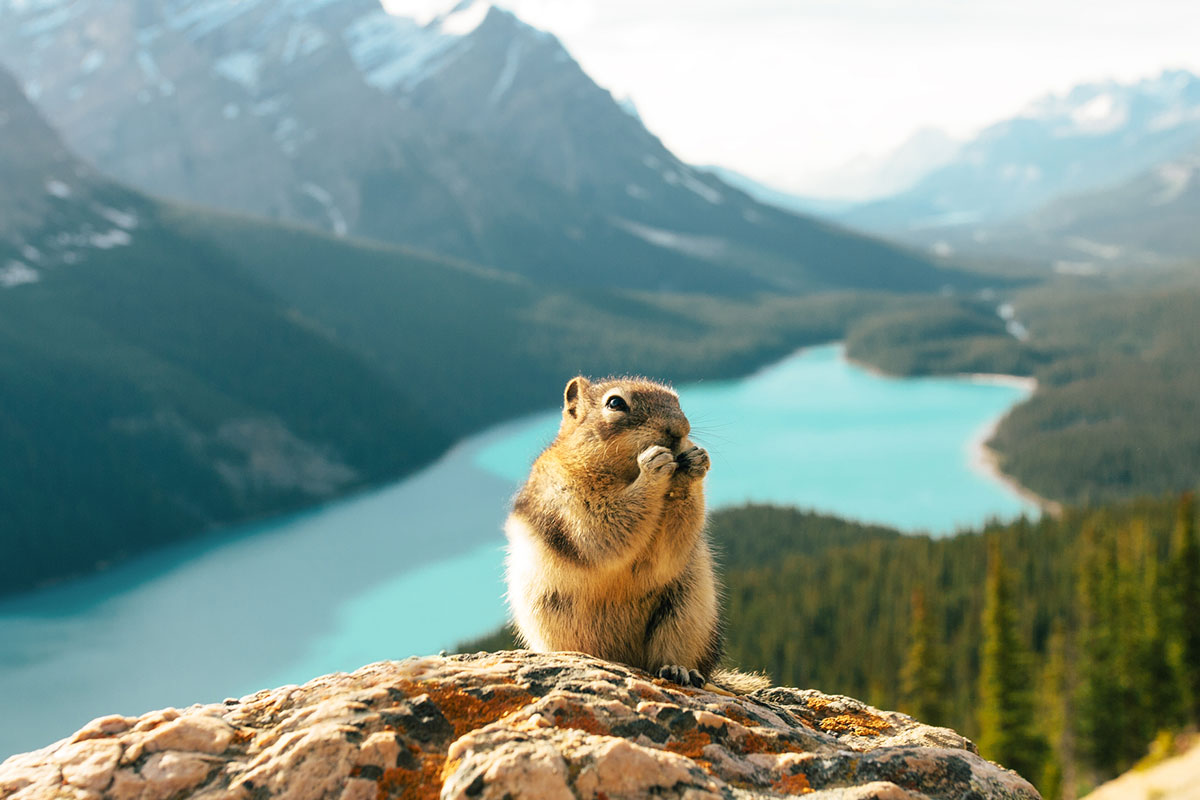
The Best Time to Visit Canada for Wildlife varies across its vast landscapes. In Western Canada, spring (April to June) marks the awakening of wildlife in British Columbia's coastal areas, with bears emerging from hibernation and whales migrating along the coast from May to October. Alberta's Rocky Mountains shine in summer (June to August), offering glimpses of elk, moose, and bighorn sheep.
Heading east, Ontario's Algonquin Park reveals its wildlife diversity amidst fall's (September to October) colorful foliage, with black bears, moose, and beavers appearing. Quebec's Gaspé Peninsula hosts thriving seabird colonies during summer (June to August), while the Atlantic provinces, like Newfoundland and Labrador, become havens for whale watching in the summer months, boasting humpback and minke whales.
Further north, in Yukon, Northwest Territories, and Nunavut, late spring to early fall (June to September) provides opportunities to witness polar bears, caribou, and Arctic wildlife, with summer being the peak season due to harsh winter conditions in other months.
The Best Time to Visit Canada for Snow
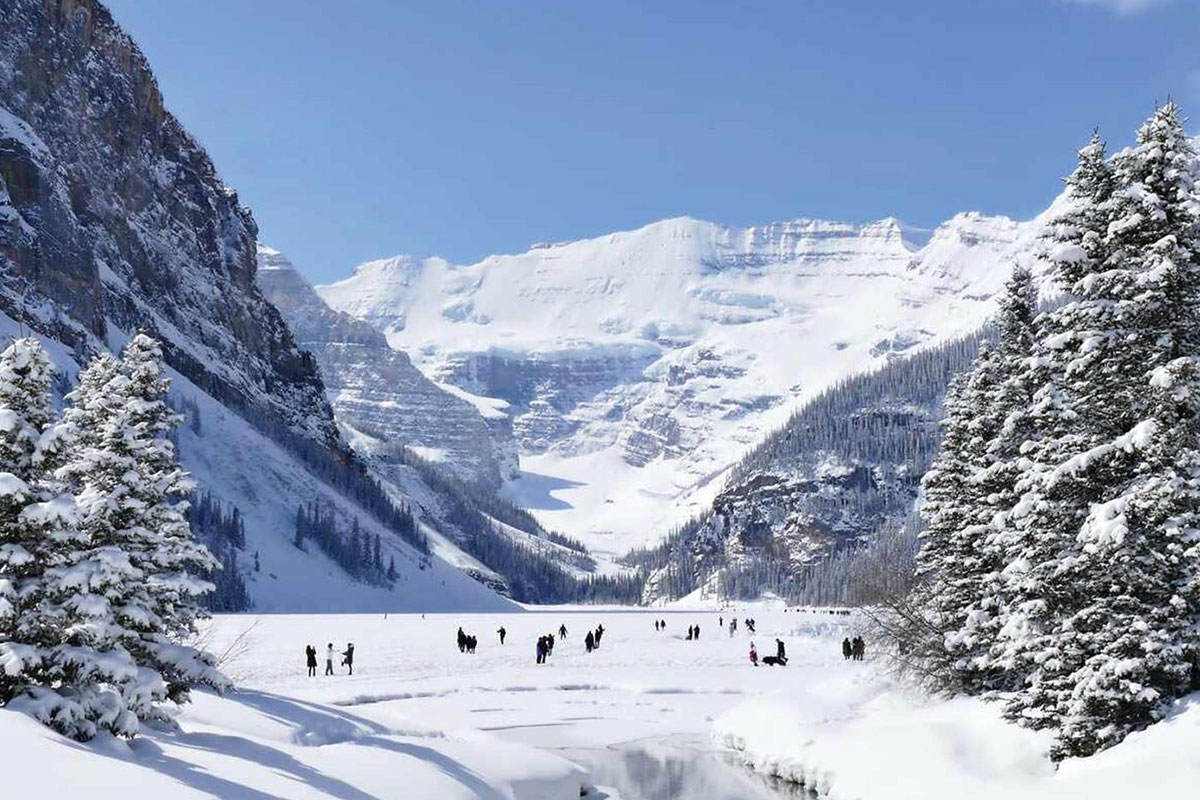
The best time to visit Canada for snow largely depends on the region you plan to explore and your preferred winter activities. Here's a breakdown of the ideal times:
- West Coast (British Columbia): In coastal regions like Vancouver, snowfall is infrequent and usually light. However, for skiing and snowboarding in places like Whistler Blackcomb, the prime time is from December to March when the mountains are blanketed with snow.
- Rocky Mountains (Alberta and British Columbia): Alberta's Banff, Jasper, BC's Kootenay, and Yoho National Parks see heavy snowfall from November to April. This period offers exceptional skiing, snowshoeing, and snowmobiling opportunities.
- Central Canada (Ontario and Quebec): Ontario's cities, like Toronto and Ottawa, receive moderate snowfall, usually from December to February. Meanwhile, Quebec's Quebec City and Montreal witness heavier snow, making them ideal for winter festivals and activities like ice skating and skiing, typically from December to March.
- Eastern Canada (Atlantic Provinces): The Maritime provinces like Nova Scotia and New Brunswick experience milder winters than central and western regions. Snow typically arrives from December to March, allowing cross-country skiing and snowshoeing activities.
- Northern Canada: Places like the Yukon, Northwest Territories, and Nunavut have long winters, with snowfall starting as early as October and lasting until April. These regions offer unique experiences like dog sledding and viewing the mesmerizing Northern Lights.

The Best Time to Visit Canada for Northern Lights
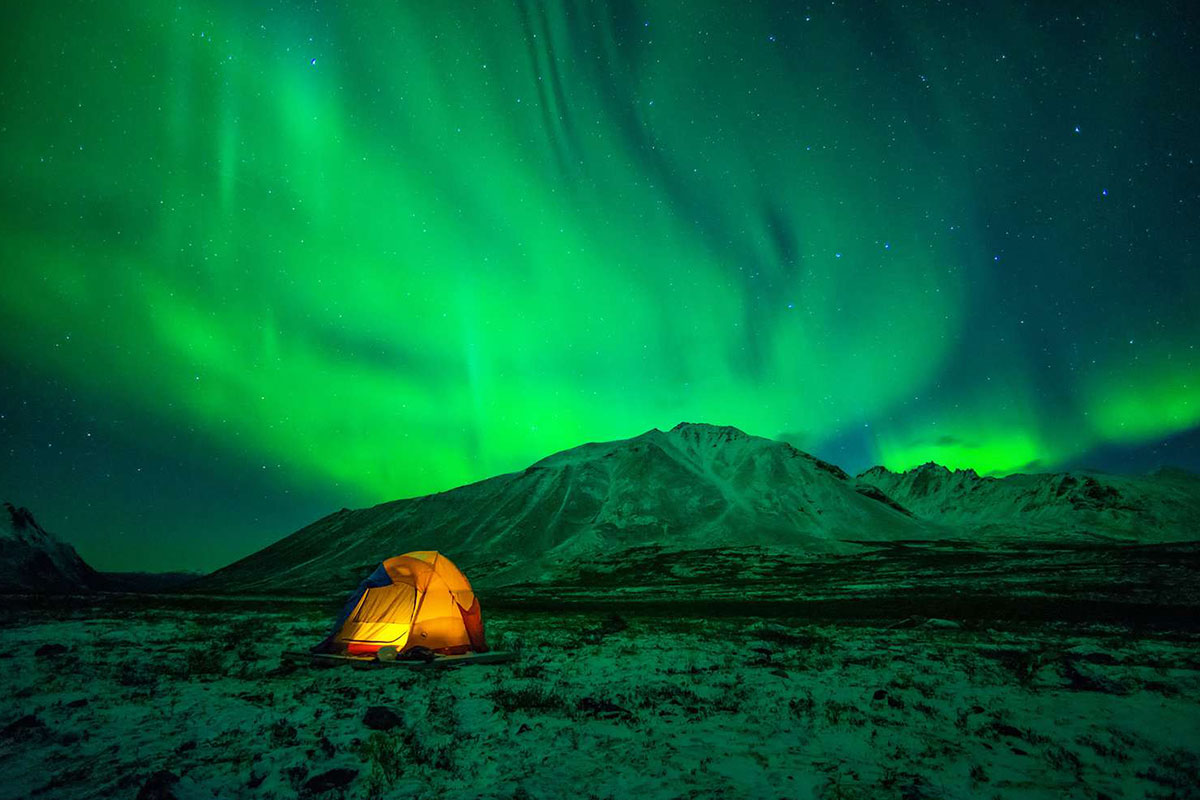
The best time to witness the spellbinding Northern Lights in Canada varies depending on the region and the unique dance of solar activity. For the most immersive experience of this ethereal phenomenon, the prime period spans from late August or early September to late April in the northern regions such as Yukon, Northwest Territories, and Nunavut. During these months, extended darkness and clearer skies create optimal conditions to marvel at the celestial spectacle.
Heading south into provinces like Alberta, British Columbia, Saskatchewan, and Manitoba, sightings are possible but less frequent due to increased light pollution and a more southerly location. Occasional displays might be observed during the fall and winter months when nights grow longer and darker, especially during heightened solar activity.
Even in the eastern provinces of Labrador and Newfoundland, glimpses of the Northern Lights can be caught, typically from November to March. However, sightings might be rarer compared to the northern regions.
The Best Time to Visit Canada for Hiking
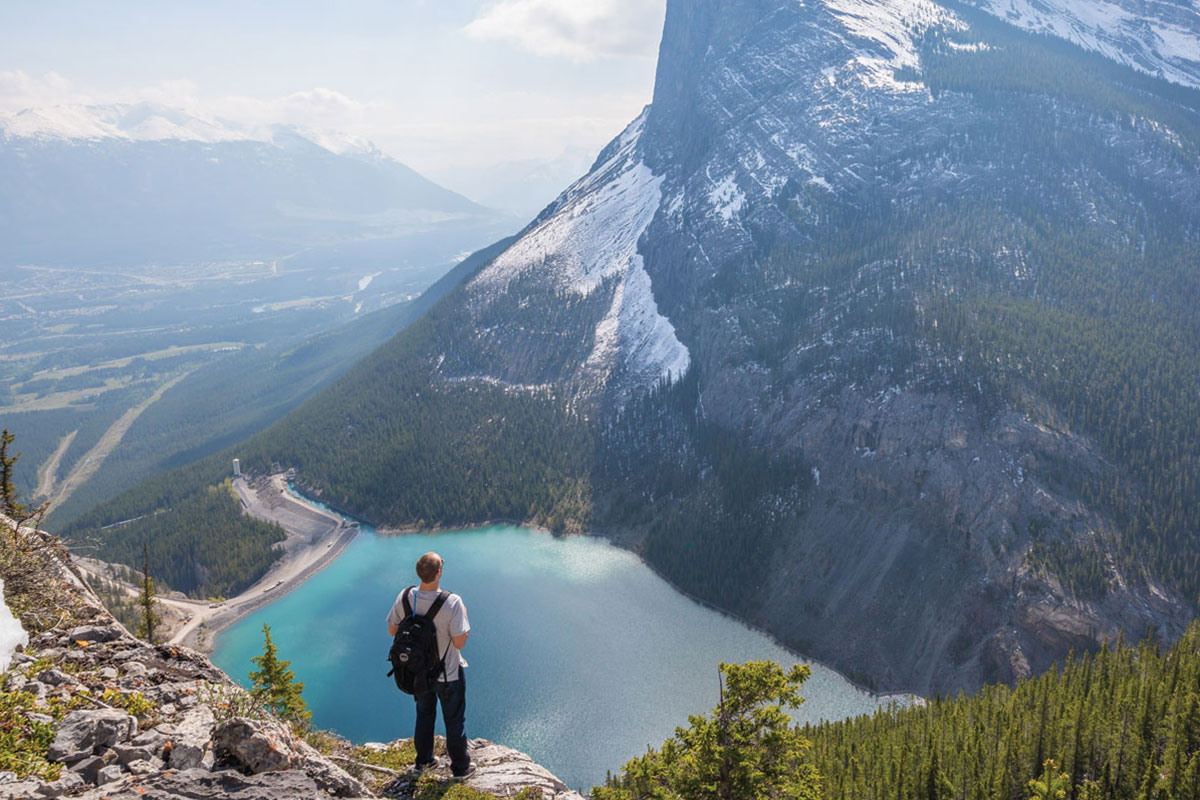
Determining the best time to hike in Canada depends mainly on the region and the type of hiking experience you're seeking:
- Spring (April to June): Springtime marks the awakening of nature in many parts of Canada. In regions like British Columbia, Alberta, and Ontario, trails open up as snow melts, unveiling stunning landscapes and blooming wildflowers. However, higher-elevation trails in mountainous areas might remain snow-covered until late spring.
- Summer (July to August): Generally, summer is the peak hiking season in Canada. From coast to coast, including places like Banff and Jasper in Alberta, Pacific Rim National Park in British Columbia, and trails in Quebec and Nova Scotia, the warmer weather and longer daylight hours allow for extensive hiking opportunities. The alpine trails become accessible, offering breathtaking views and many routes to explore.
- Fall (September to October): Fall brings vibrant foliage, creating a picturesque backdrop for hikes, especially in regions like Ontario's Algonquin Park or Quebec's Gatineau Park. The cooler temperatures and fewer crowds make it an attractive time for hiking.
- Winter (November to March): In certain regions, winter hiking is possible, particularly in areas accustomed to snow sports like snowshoeing or winter hiking in places such as the Rocky Mountains or specific trails in British Columbia. However, this period requires particular gear and precautions due to harsh weather conditions.
The Best Time to Visit Canada for Holidays & Tourism
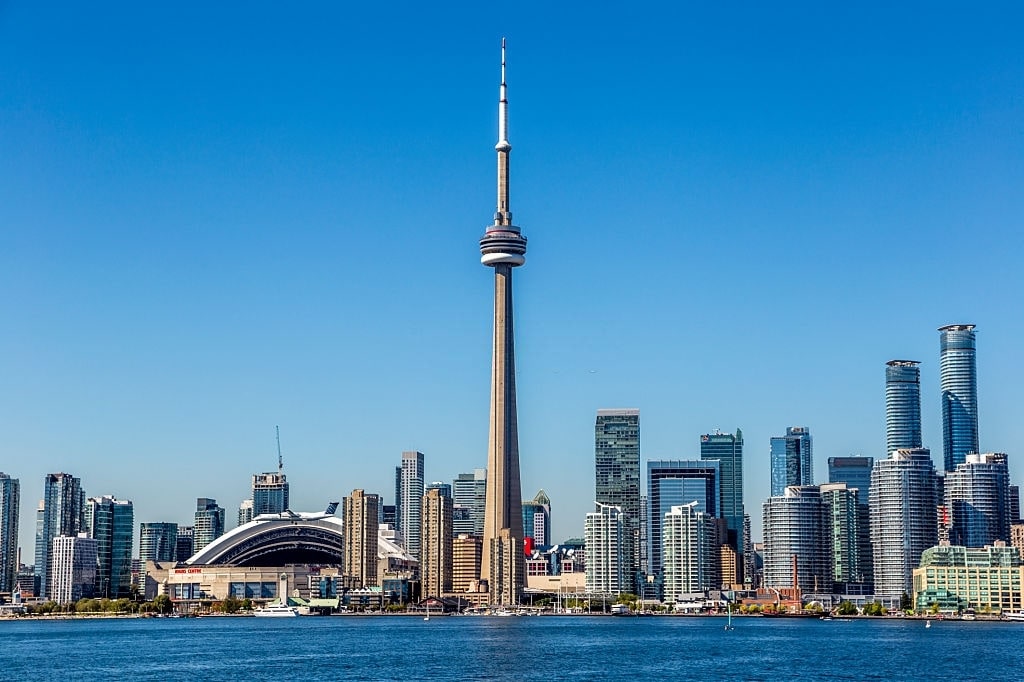
Determining the best time to experience Canada hinges on the diverse offerings across seasons. Summer ushers in the peak tourist season from June to August, perfect for outdoor adventures and exploring Canada's natural wonders. This period is ideal for hiking in Banff and Jasper National Parks or reveling in the vibrant festivals dotting the Atlantic coast. However, expect crowds and higher prices during this bustling time.
Alternatively, the fall season, spanning September to November, reveals a different allure. The landscape adorns itself with breathtaking foliage, particularly in Ontario and Quebec. As temperatures cool and tourist numbers dwindle, cities like Montreal, Toronto, and Vancouver beckon visitors to explore their charms without the bustling summer crowds. The crisp air and stunning colors paint an inviting picture for those seeking a quieter Canadian experience.
As the clock ticked toward 2024, Canada's landscapes whispered secrets of each season's enchantment. Winter draped its majestic blanket, inviting travelers to skate on frozen lakes under the Northern Lights' celestial dance. Spring unveiled a floral extravaganza, painting cities with bursts of color, while summer’s sun warmed the land, setting stages for lively festivals and wild adventures. Then, autumn emerged, splashing mountains and forests with vivid hues that seemed plucked from dreams. In this ever-changing canvas, 2024 beckoned explorers to embrace Canada's timeless allure, no season less beguiling than the other.
Source of Video: Discover Top 10 Places
Best Time to Visit Canada
- Spring (March-May): Great wildlife spotting opportunities, the best time to look at the flowers and cherry blossoms, and the temperature begins to warm up.
- Summer (June-August): Temperature peaks (in July), the best time to do outdoor recreational activities, and a good time to spot wildlife.
- Fall (September-November): The Northern Lights, the temperature begins to drop, and leaves turn a beautiful orange color.
- Winter (December-March): The Northern Lights, skating, skiing, snowshoeing, and snowboarding

Visiting Canada in Spring (March-May)

Visiting Canada in Summer (June-August)

Visiting Canada in Fall (September-November)
Visiting canada in winter (december-march), explore toronto weather in canada (toronto), best time to visit british columbia, best time to visit nova scotia , want to go.
- North America
Canada Travel Guide
- All Canada Trips
- Great Lakes
- Canada: From Sea to Sea
- Northwest Passage
- Atlantic Coast
- Niagara Falls
- Saint Lawrence River
- Quebec City
- British Columbia
- Canadian Maritimes
Favorite Canada All Trips
- Torngat Mountains Safari
- Chilko Experience Wilderness Lodge
- Narwhal & Polar Bear Safari
- High Arctic Muskoxen & Polar Bear Photography
- Arctic Char Fly Fishing
- Beluga Whale Photography
- Arctic Watch Discovery Experience
Top Canada Travel Destinations
- Baffin Island
- L'Anse aux Meadows
- Lake Ontario
- Lake Superior
- Newfoundland
- Newfoundland & Labrador
- Nova Scotia
- Pacific Northwest
- Vancouver, BC
Canada Trips by Departure Date
- 2024 Canada trips (77)
- 2025 Canada trips (61)
- 2026 Canada trips (6)
- May 2024 (9)
- June 2024 (12)
- July 2024 (17)
- August 2024 (30)
- September 2024 (25)
- October 2024 (10)
- August 2025 (22)
- September 2025 (25)
- October 2025 (9)
Top Experiences in Canada
- Canada Cruises (80)
- Canada Wildlife & Safari Exploration (40)
- Canada Luxury (28)
- Canada Land Tours (20)
- Canada Cultural (9)
- Canada Scheduled Group Tour (7)
- Canada Active (4)
- Canada Family (3)
Canada Trips by Duration
- 7 day trips (7)
- 8 day trips (14)
- 9 day trips (7)
- 11 day trips (7)
- 12 day trips (9)
- 13 day trips (14)
- 14 day trips (7)
- 15 day trips (5)
- 16 day trips (6)
- 17 day trips (9)
Canada Trips by Activity
- Canada wildlife viewing (85)
- Canada small ship cruises (48)
- Canada whale watching (47)
- Canada hiking (46)
- Canada village visits (37)
- Canada kayaking (32)
- Canada wilderness lodge exploration (14)
- Canada helicopter tours (8)
- Canada northern lights (7)
- Canada photography seminars (7)
- Canada adventure options (7)
- Canada archaeological site visits (5)
- Canada spa relaxation (5)
- Canada urban exploration (5)
- Canada local market visits (4)
- Canada biking (4)
- Canada land & sea exploration (4)
- Canada camping (3)
- Canada fishing (3)
- Canada fly cruises (3)
- Canada small ship sailing (3)
Why Travel With Adventure Life
Recognized by.


- Create an account / Login
When to visit Canada
Canada is a vast country, and the weather can be quite different in the East and in the West .
Here is a general guide to Canada's tourist seasons to know when is the best time to visit us:
WHEN TO VISIT IN SUMMER?
- Very Favourable
- Unfavourable
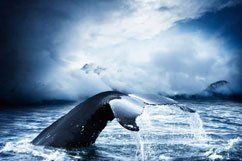
The best type of vacation in April is one that lets you explore some of the big cities, such as our " Wonders of the North " road trip.
Early May to the end of June Mid-May to late June is a great time to visit Canada! There are not a lot of tourists so prices are reasonable. The summer tourist season has officially begun, although the first two weeks of May are generally quiet (and many attractions are still closed). There are new leaves in the trees; nature is in full bloom.
July and August July-August is peak tourist season right across Canada, from Halifax to Vancouver, especially from mid-July to mid-August . For the most popular attractions and locations, you may need to book 6 to 9 months in advance to be sure of availability (and for better prices, as it is always more expensive to book at the last minute).
Cities and national parks are teeming with tourists from around the world. And naturally, prices at their highest.
Days can be very hot (see weather stats tables below).
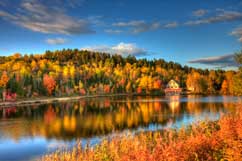
The weather is still very pleasant, especially in September, although evenings can be quite chilly. You might enjoy reading our " What to wear in summer in Canada? " section, which will help you plan what clothing to pack.
There are fewer tourists and prices are generally lower.
In short, it's the ideal time to take a Canadian vacation!
November Like April, November is not the best time for travel in Canada. It can be cold and rainy, and there are no more leaves in the trees.
The best type of vacation in November is one that lets you explore some of the big cities, such as our " Wonders of the North " road trip.
WHEN TO VISIT IN WINTER?
The Canadian winter lasts from mid-December to mid-March . It is a great time to enjoy exciting winter activities like snowmobiling and dog sledding.
Mid-December to early January The holiday season (December 20 to January 3) is a very busy time of year because of all the Christmas and New Year's festivities. It is best to book at least 6 months in advance.
The weather is pleasant (see weather stats table below) and snow conditions are generally good.
January The coldest month of the year. There are fewer tourists, making January the least expensive month for winter travel in Canada.
February The temperature starts to rise. Schools generally have their spring break in February. There are a lot of tourists and many families on vacation; prices are therefore higher. Book 6 months in advance if possible.
March The weather is almost spring-like with a lot more sunshine. Winter sports can still be enjoyed in early March. After that, there is no guarantee that there will be enough snow.
WHEN TO VISIT WESTERN CANADA?
When to visit eastern canada, related topics.
Suggestions for road trips by car
What to wear in summer in Canada ?
What to pack & Travel checklist
Taxes and tips
Driving in Canada
TOP 5 Canadian road trips
Western conquest, the west by rv, legendary landscapes, west with the family.

TRAVEL to CANADA – Tips and Information Guide (2024 Edition)
Everything you need to know about travel to Canada in our comprehensive 2024 Canada travel guide.
Have you ever wanted to see the Northern Lights? Or to explore the beautiful cities of Vancouver, Quebec or Calgary? What about venturing out into the world-renown national parks of British Columbia?
Unspoiled nature and incredibly vibrant urban areas create the perfect mixture of reasons to travel to Canada.
“The Great White North,” is a vast country that offers virtually unlimited opportunities for visitors of all kinds.
Whether searching for wildlife, landscapes, adventure activities or the culture of city life, travelling in Canada will give you a variety of experiences you are sure to remember.
There really is so much to do it can be overwhelming to plan to visit Canada. But getting started is not that difficult.
Read on to learn everything you need to plan for travel to Canada!
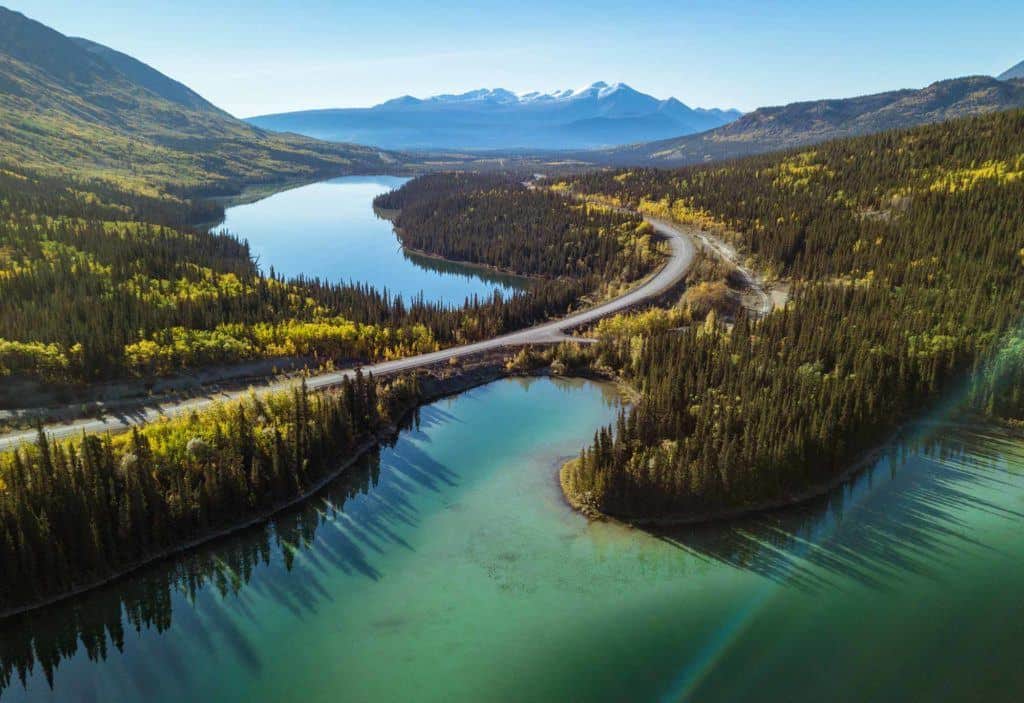
TRAVELLING IN CANADA: AT A GLANCE
Here are the basics of travel to Canada.
TOP 5 TRAVEL EXPERIENCES IN CANADA
With so much to see and do in Canada, it really is hard to pick the top experiences. We have written a comprehensive guide on the best things to do in Canada here.
However, we think that to truly appreciate Canada you need to plan to do these 5 activities during your visit.
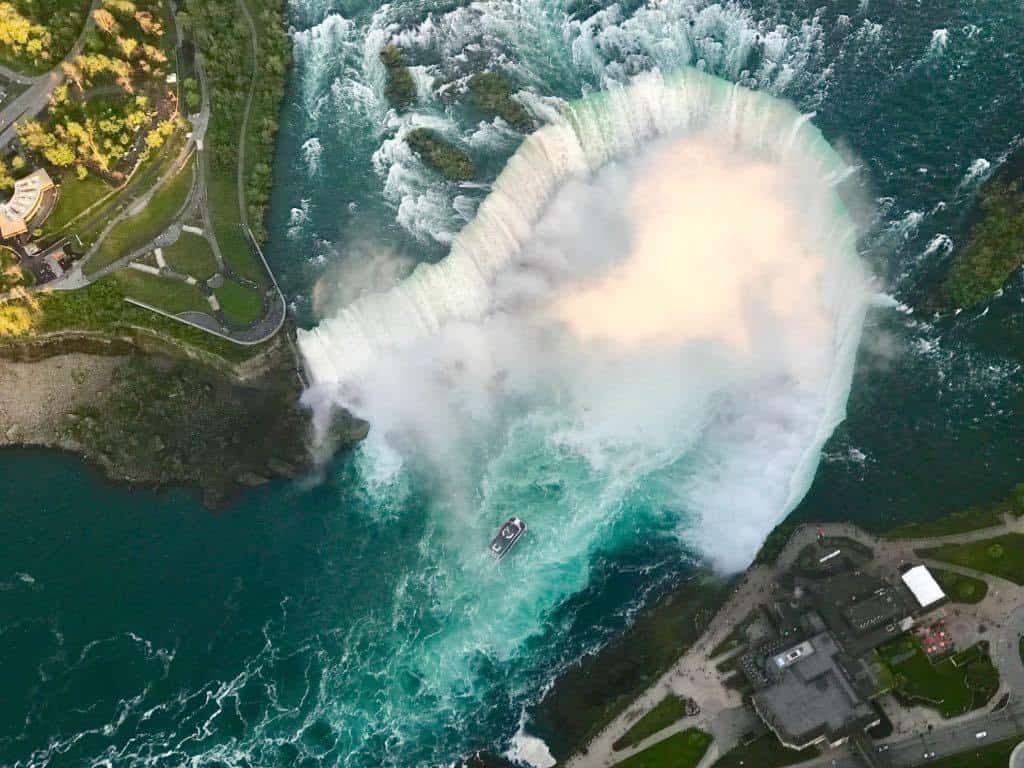
Check out Niagara Falls
Niagara Falls is one of the world’s most famous waterfalls and well worth a visit. Find yourself in awe watching the water tumble over the top of the falls. Or hop on a boat and cruise up to the falls from the river!
Read about all our favourite Niagara Falls attractions .
Explore the Canadian Rockies
From picturesque mountain peaks to stunningly blue glacial lakes, the Canadian Rockies in British Columbia have so much exploration to offer! This part of Canada could be a trip in itself!
Check out our ultimate guide to Hiking in Banff
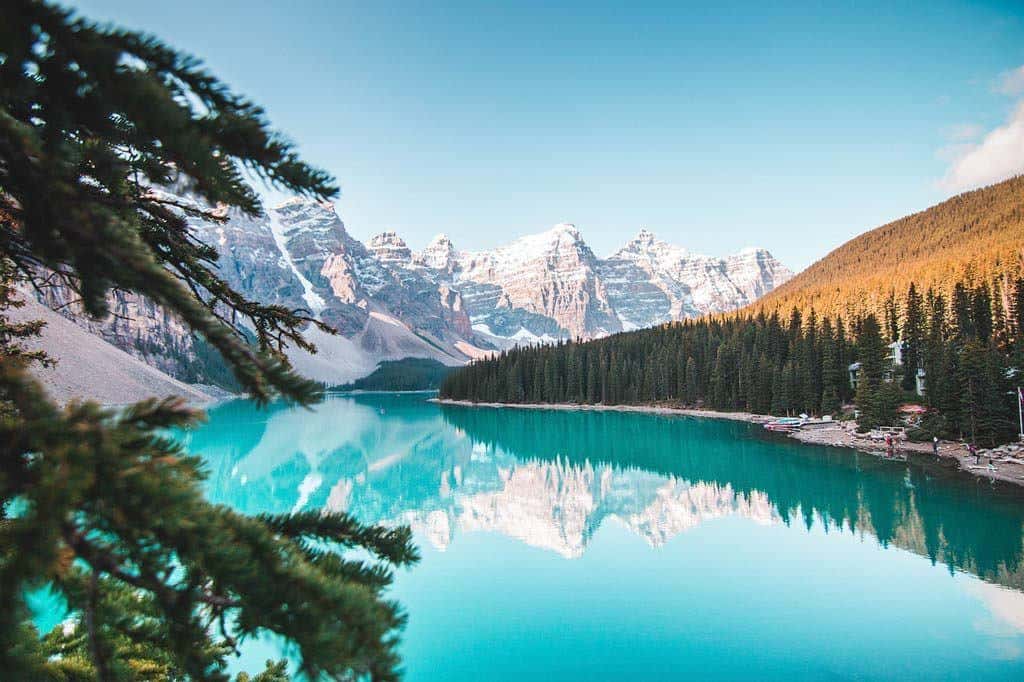
View The Northern Lights
Witnessing northern lights is one of the most amazing natural phenomena. The city of Whitehorse in the Yukon territory might be a perfect place for it! Your chances are highest between September and April since the nights aren’t dark enough during the summer.
Check out the Northern Lights in Whitehorse , Yukon Territory.
See Polar Bears
Churchill in northern Manitoba is known as the ‘Polar Bear Capital of the World’, making it an obvious choice to visit for travellers wanting to get close to the planet’s largest apex land predator.
See polar bears in Churchill, one of Canada’s best wildlife experiences .
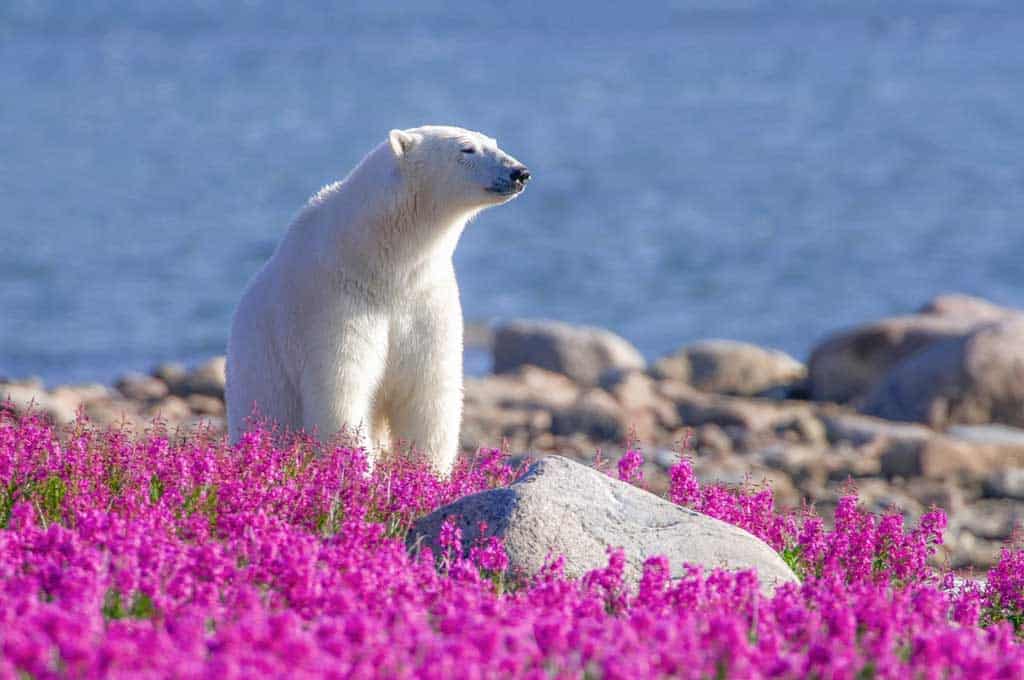
Drink the Sourtoe Cocktail
Taking a shot of alcohol with a frostbitten toe may not be on everyone’s bucket list. But if it’s on yours, you absolutely must try to Sourtoe Cocktail in Dawson City. It’s a strange, yet unique experience when you visit Canada.
Read more about the Sourtoe Cocktail and lots of other great things to do in Dawson City .
Other Things to do in Canada
Scale the CN Tower in Toronto. If you’re unafraid of heights, strap into a safety harness and walk around the top or just check out the views.
Visit Stanley Park in Vancouver. The world’s happiest city has much to offer . But most visitors start at this famous park downtown.
Take a drive on the Icefield Parkway. This incredible stretch of highway connects Banff and Jasper National Parks and is full of amazing landscapes and stunning wildlife!
Hang out with Polar Bears in Manitoba. View these dangerous, but remarkable, animals as they waltz around Churchill like they own the place.
Take a gondola ride in Banff. Situated in the heart of the Canadian Rockies, Banff boasts unrivaled beauty best seen by way of the gondola.
Eat poutine . A strictly Canadian plate, poutine is french fries and cheese curds covered in gravy. Try varieties all across the country!
Take a flight over glaciers in Kluane National Park. The only way to beat the spectacular views of driving or hiking the Canadian Rockies is to check them out from above !
Tour La Citadelle de Québec in Quebec City . One of the most visited cathedrals in Canada, you will feel lost in the grandeur of this sacred place.
Ride the Rocky Mountaineer train . The most relaxing way to enjoy the Canadian Rockies is touring them on this train ride from Vancouver to Banff .
Eat lobster in the Maritimes. Lobster doesn’t get much fresher than that caught and served up in New Brunswick and Nova Scotia.
Go dog sledding in the Yukon. Yes, there are humane ways to enjoy this absolutely incredible experience . Dress warm and enjoy the ride!
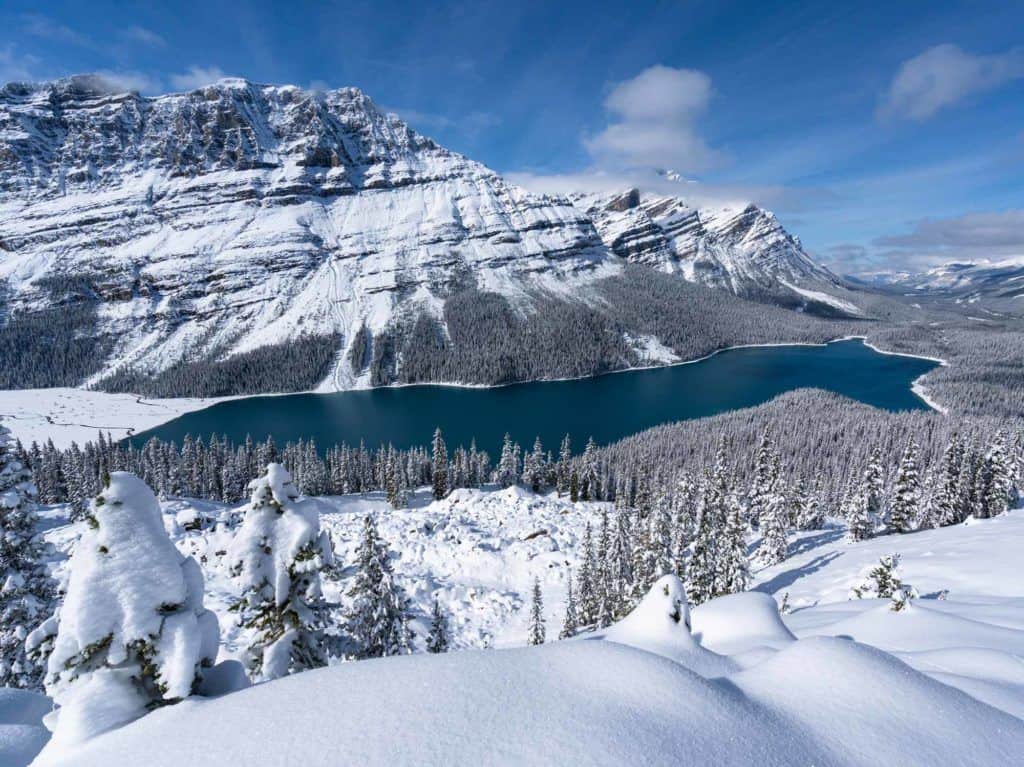
BEST PLACES TO VISIT IN CANADA
There are plenty of amazing places to visit in Canada. Depending on your interests, trip duration and time of year you will find plenty of things to do during any length of stay.
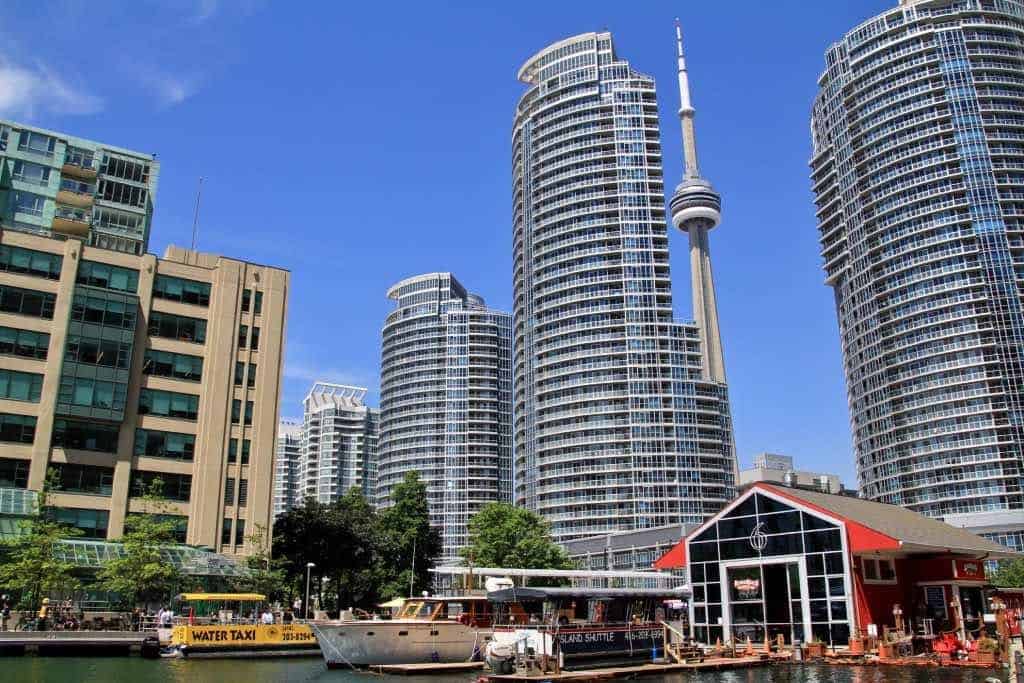
Toronto is not only the largest city in Canada but also truly one of the most stunning cities in the world. It’s famous for its diversity and travelling here will be a great chance to learn about different cultures! The people are incredibly nice, the sights are beautiful.
Check out our Toronto City Guide.
Montréal is a fascinating mix of Europe and North America. It’s a definition of a vibrant city – full of festivals, museums and must-visit restaurants. There’s an abundance of things to do there. Brush up on your French before your trip!
Check out our Montreal City Guide.
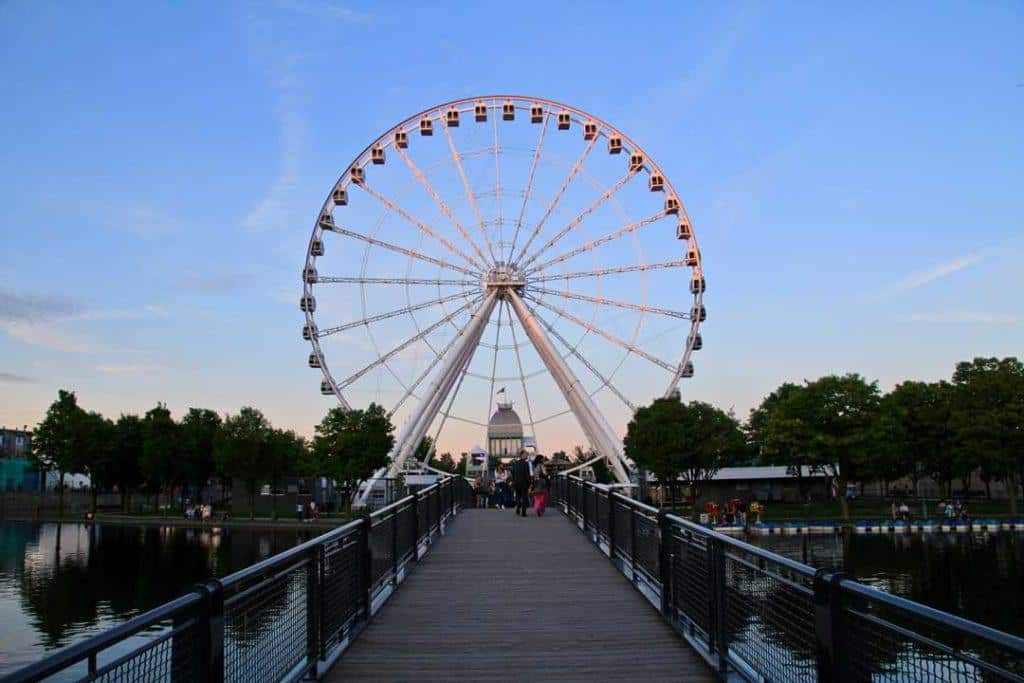
Vancouver is consistently ranked as one of the top places to live in the world. With picturesque scenery all around, tons of outdoor activities, numerous opportunities for wildlife encounters and many great day trips you absolutely have to add Vancouver to your Canada itinerary.
Check out our Vancouver City Guide.
Banff / Lake Louise
Lake Louise is one of Banff National Park ’s most famous sights. The extraordinarily turquoise water is a real feast for the eyes. Plus there is spectacular hiking, biking and even kayaking that you can do to further enjoy the beauty of the nature around. You can visit during the summer or spend your winter vacation here!
Check out our Banff City Guide .
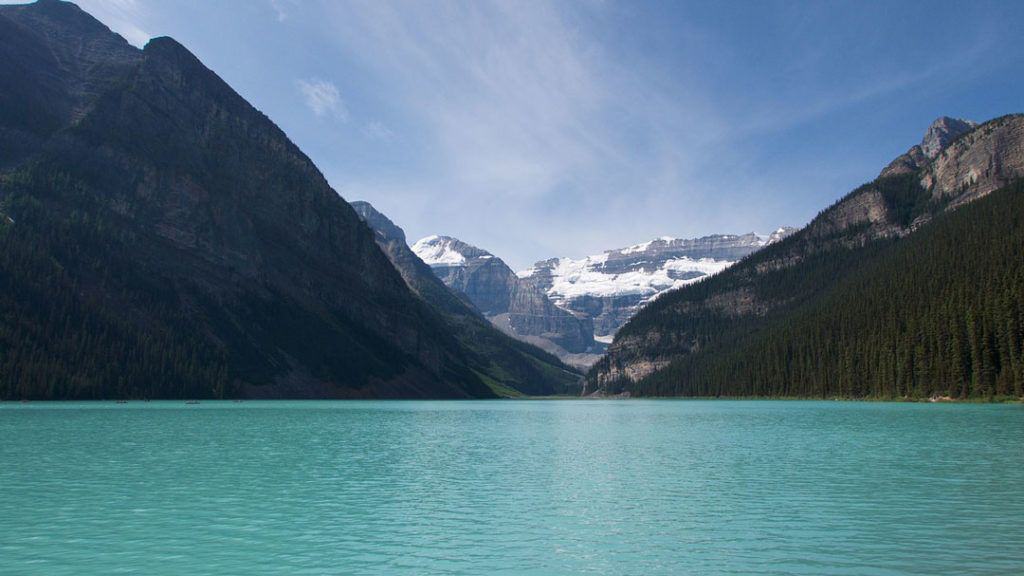
For more information on specific things to do in the top places to visit in Canada, reference our following city travel guides:
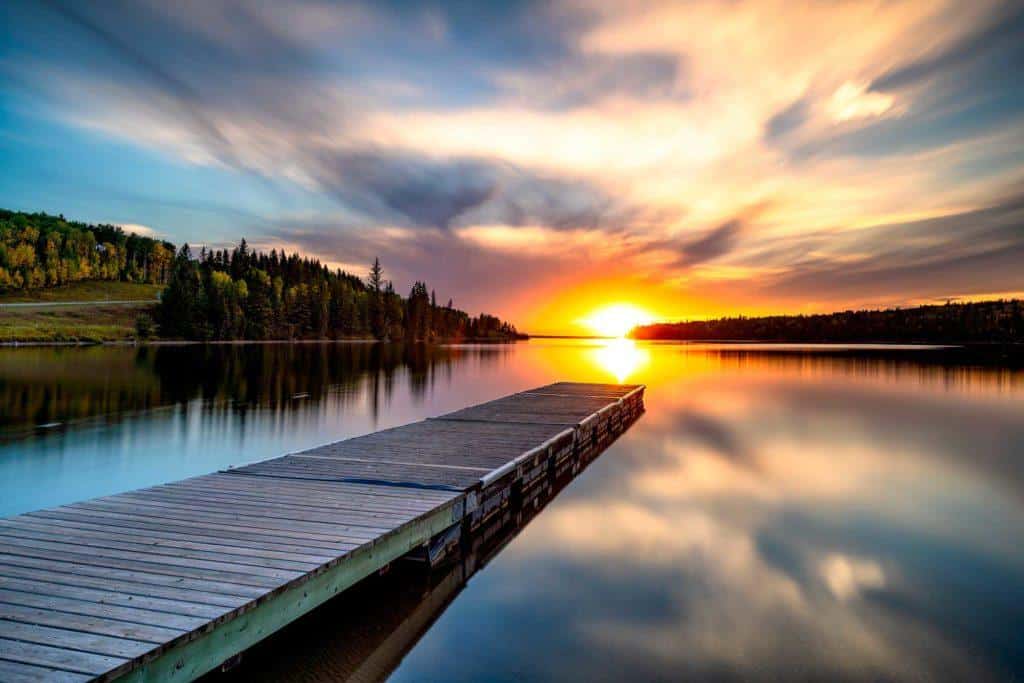
BEST CANADA TRAVEL ITINERARY
Canada is huge and there are so many amazing things to do there that planning an itinerary for your travel can be a little overwhelming.
We’ve divided these itineraries into Eastern Canada and Western Canada options for both 1 or 2 weeks. Having at least 1 month to road trip across the entire country would be ideal.
But short of this, your best option will be to plan to visit each side of the country separately.
Of course, no one-size-fits-all plan will suffice. But if we were to head back to Canada these are the top places and things that we would want to do!
1-Week Canada Travel Itinerary Highlights
Eastern canada 1-week itinerary.
- Fly into Toronto (2 days) / day trip to Niagara Falls
- Go to Ottawa (1 day)
- Go to Montreal (2 days)
- Go to Quebec City (2 days)
- Fly from Quebec City
Western Canada 1-week Itinerary (Road Trip)
- Fly into Calgary (1 day)
- Tour Canadian Rockies – Banff/Jasper/Yoho National Parks (3-4 days)
- Vancouver (3-4 days)
- Fly from Vancouver
2-Week Canada Travel Itinerary Highlights
This is an idea of how we’d spend 2 weeks in Canada.
Eastern Canada Itinerary
- Fly into Toronto (3 days)
- Day trip to Niagara Falls
- Go to Ottawa (2 days)
- Go to Quebec City (3 days)
- Return to Toronto
Western Canada Itinerary (Road Trip)
- Fly into Calgary (1-2 days)
- Banff National Park (1-2 days)
- Jasper National Park (1-2 days)
- Yoho National Park / Glacier National Park (1 day)
- Revelstoke National Park (1 day)
- Stop in Revelstoke (1-2 days)
- Drive to Vancouver (4 days)
- Day trip (ferry) to Victoria on Vancouver Island
- Fly out of Vancouver
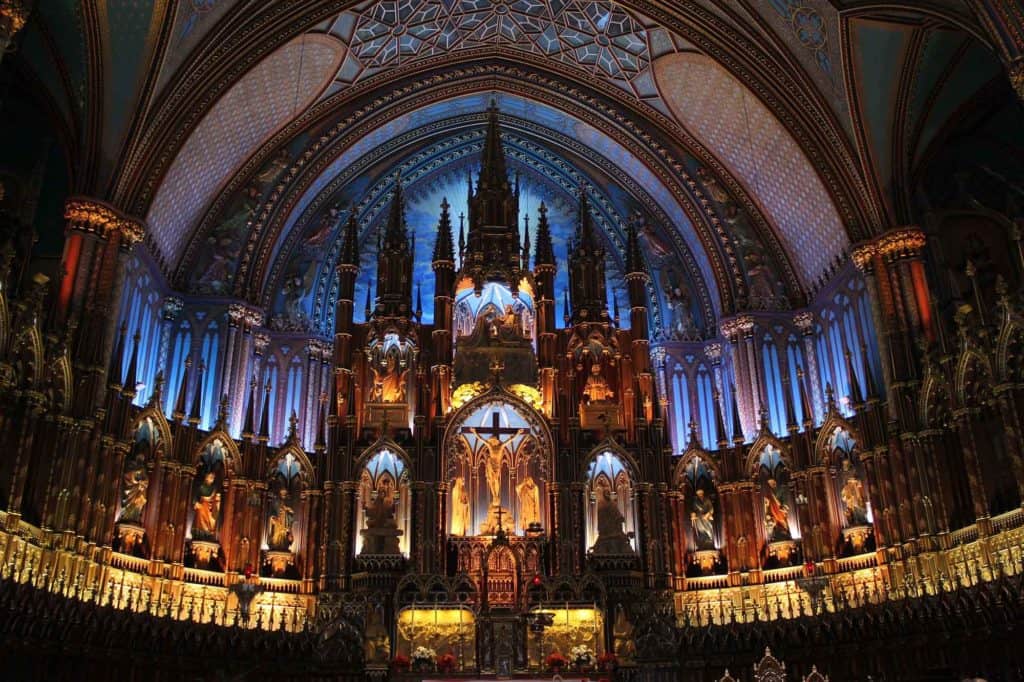
CANADA TRIP PLANNING
Best time to visit canada.
Since the country is so vast and diverse, there really isn’t a time of year unsuitable for travel to Canada.
Depending on what you want to do, you should pick the month of your trip accordingly.
Summer Travel (June – August)
The warmer summer months, such as July and August, are the most common times to visit Canada.
As in many countries in the northern hemisphere, summer in Canada is an ideal time of travel and adventure for many tourists. Expect to come across more tourists and higher prices during this time.
But don’t worry about the crowds and expense. Canada is beautiful during the summer!
It’s summer temperatures tend to not be as extreme as other summer destinations. Some parts of the country, particularly those further north and at higher elevations, will still see the snow melting well into June and July.
This is a great time to explore Canadian cities. But it is also the ideal time to visit any of the stunning national parks.
Winter Travel (December – February)
Winters in Canada can be very cold. But this is also a great time of year for winter activities, such as dog sledding , snowboarding/skiing and ice climbing.
But, keep in mind that some parts of the country deal with extremely uncomfortable temperatures.
For example, Winnipeg is Canada’s coldest city. Temperatures there can drop to -40°C at times!
Many of the places that are popular during the summer months are not as popular during the winter.
So if you would like to see parts of the country with fewer crowds than winter may be a great option for you.
Shoulder Season
The shoulder season in Canada is similar to other parts of the world. Spring and Fall tend to see less tourist traffic than the summer and winter months.
The months that are not very popular are April and November. They are often neither cold nor hot enough to enjoy certain activities.
However, the prices are much lower during this part of the year. So if you factor this into your planning, maybe this isn’t such a bad time to travel to Canada.
CANADA TRAVEL BUDGET GUIDELINE
Budgets for travelling in Canada can vary greatly. This depends on where you want to go, what you want to see and do, how you want to travel and the level of comfort you expect in your accommodations.
Canada is a highly developed country. As such many day-to-day expenses such as meals and accommodation can range in price greatly.
Here are a few ideas of what to expect in planning your budget to travel to Canada.
Budgeting Tips:
To make your money go further here are a few budgeting tips:
- Take public transportation or walk whenever you can.
- For longer trips, look for rideshare options on places like Craigs List and travel forums and groups.
- Buy food at local markets and cook your own meals as often as possible.
- Look for free events and festivals to attend in the cities you visit
- Consider couch surfing from time to time. And camping should be on your list of things to do anyway
- Look for last-minute deals on accommodation, travel and activities.
But there are a few things you should know about the different budgets at which you can choose to travel.
Note: Budgets shown as Single Traveller / Couples per day.
Budget Traveller ($40-75 Single / $100+ Couples)
If you are a budget traveller visiting Canada on your own you will have quite a challenge to keep yourself within budget.
The most affordable accommodation, besides Couchsurfing, are hostels and Airbnb. But not all places you’ll want to travel will have these options.
If you’re on a tight budget then you probably won’t eat at restaurants on a regular basis.
Your best options might be fast-food restaurants and buying your own groceries and cooking when that is an option.
Canada has open-air markets and lots of chain grocery stores where you can buy groceries at affordable prices.
When it comes to public transportation, the prices are different in each area. But they’re not exactly cheap anywhere.
Daily city transportation can cost around USD$10 and single tickets are around USD$3.
Additionally, you will need to budget separately for the various activities that you would like to do.
For example, ski passes in winter can be pricey. And daily entrance fees to national parks are reasonable but will add up.
Mid-Range Traveller ($125 Single / $175 Couple)
If you are travelling to Canada with a mid-range budget then you have some flexibility in your plans that you wouldn’t have on a tighter budget.
The biggest changes will be in accommodation and meals. You’ll be able to stay in moderately priced hotels and eat most of your meals in proper restaurants (even if it’s only fast food).
You might also choose to rent a car from time to time or to upgrade on tour options to do an activity that might otherwise not be in the backpacker budget.
Couples travelling at this budget will save considerable expense by staying in hotels and Airbnb options instead of hostels. Transportation costs could also be reduced for couples choosing to rent a vehicle.
Luxury Traveller ($350+ Single / $450+ Couple)
If you can afford to travel with a little more luxury you’ll find plenty of options to enjoy yourself in Canada.
Large cities, as well as certain vacation destinations, have top-notch hotels and resorts. And you’ll find great stays in boutique lodging all throughout Canada.
You will also be able to afford to eat at the best restaurants and indulge in local delicacies and staples across the country.
Aside from more luxurious meals and accommodations, there are tons of things you can do when travelling in Canada with a more substantial budget.
You will be able to rent a vehicle or hire transportation around town. When travelling across the country you will be able to save time by flying.
Additionally, your choice in activities will expand to more unique experiences. From riding the Rocky Mountaineer train to flights through glacial ice fields , there is no shortage of experiences well worth the higher costs.
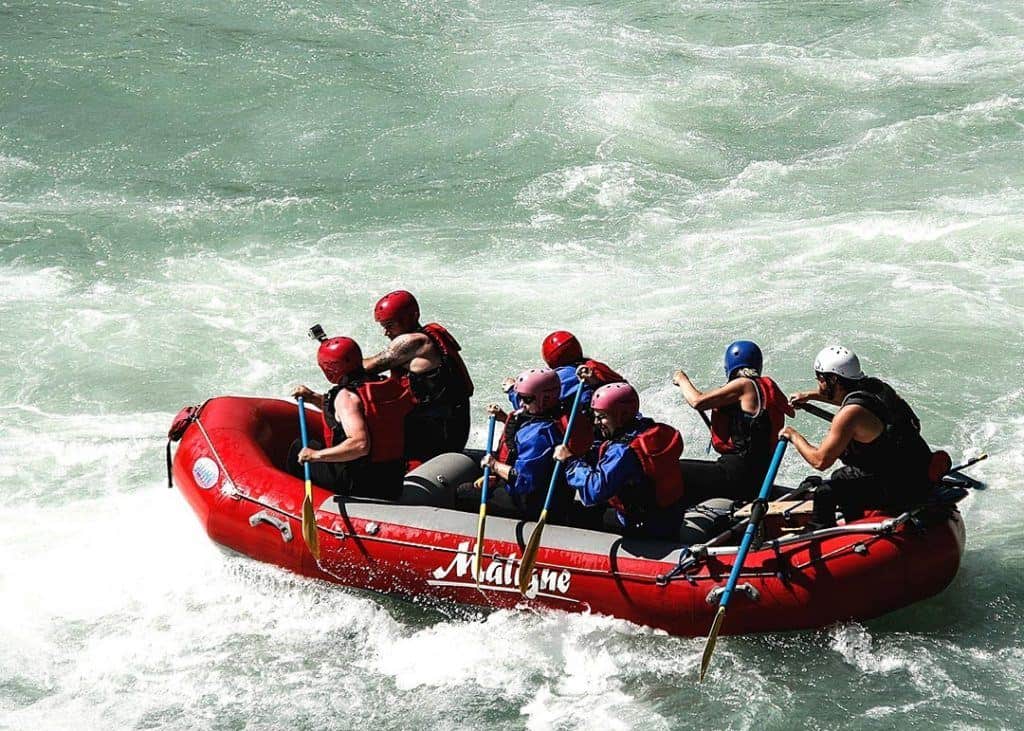
GETTING TO AND AROUND CANADA
Entry requirements.
Canada is relatively accessible for travel. Passport holders in 54 countries can visit Canada without obtaining a visa.
Canada will permit these travellers to stay in the country for up to six months.
Click here to see if your country is on that list. Others must obtain a temporary resident visa.
Travellers must also have an Electronic Travel Authorisation (eTA).
When applying for the eTA , visitors have to provide certain biographical details and passport information. Also, you’ll be asked about your employment information, available funds and your health and immigration history.
Getting to Canada
Since it is one of the most developed Western countries, there are multiple ways to travel to Canada.
The choice is yours depending on your needs and origins.
But you may want to consider comfort, prices, duration of trip and preferred method of travel as you plan how to get to Canada.
Canada has around 20 major international airports. This makes flying to Canada the quickest, most convenient way to enter the country.
The biggest and busiest airport is the Toronto Pearson International Airport. Direct flights to Toronto are available from a lot of cities across the world.
But you will also find international flights in and out of most major cities across the country.
Regardless of whether you put a lot of time into planning your trip or make a last-minute decision to visit Canada, there are almost always reasonable flight options available.
Sometimes it might also be cheaper to fly into the USA and then drive to Canada. So take that option into consideration.
Personal/Rental Vehicle
Many people travel to Canada as part of a North American exploration. Or you may find a better flight deal into a major US city like Boston, New York City, Chicago or Seattle.
As such you may find yourself driving to Canada from the United States.
In many places, it is very easy to pass between the Canadian/US border to visit nearby places in both countries.
Popular places include the Seattle/Vancouver area, Niagara Falls and Montreal/Vermont.
Roads between the US and Canada are generally in excellent condition. They are also marked well so navigation between the two should not be difficult.
Depending on your country of origin, time of stay and purpose for visit, passing through border security by vehicle is often less of a hassle than when arriving by plane.
If crossing into Canada from the United States, do check with your car rental company to make sure that you are able to do so without violating the terms of your agreement.
You will also want to make sure that the vehicle is insured in both countries.
If you’re going to travel to Canada from the United States, you can also travel by bus. Certain cities, like Seattle, Boston, Albany, Detroit or New York, have direct routes and inexpensive fares.
Some well-known bus companies that make trips between the US and Canada include Greyhound, Megabus and Quick Coach.
If you like to travel by train, then travelling to Canada from the US on a train is a great option. This combines relatively low costs, reasonable duration and incredible scenery.
In travelling from the US into Canada train you have two company options. VIA Rail Canada and Amtrak each have three routes that cross various borders between the US and Canada.
Further, all routes start and end in major cities so you can quickly orient yourself to other transportation options upon arrival.
Ferries can be a unique way to see parts of both Canada and the US that are not usually explored by most travellers.
At the moment, there are five ferries that travel to Canada from the United States.
Two depart from Maine and go to Yarmouth, Nova Scotia and Deer Island, New Brunswick (Bay Ferries Limited, East Coast Ferries).
Another two travel from Alaska to Port Hardy and Prince Rupert, both in British Columbia (Alaska Marine Highway System, BC Ferries).
Finally, you can get to Victoria, British Columbia from Seattle (Victoria Clipper).
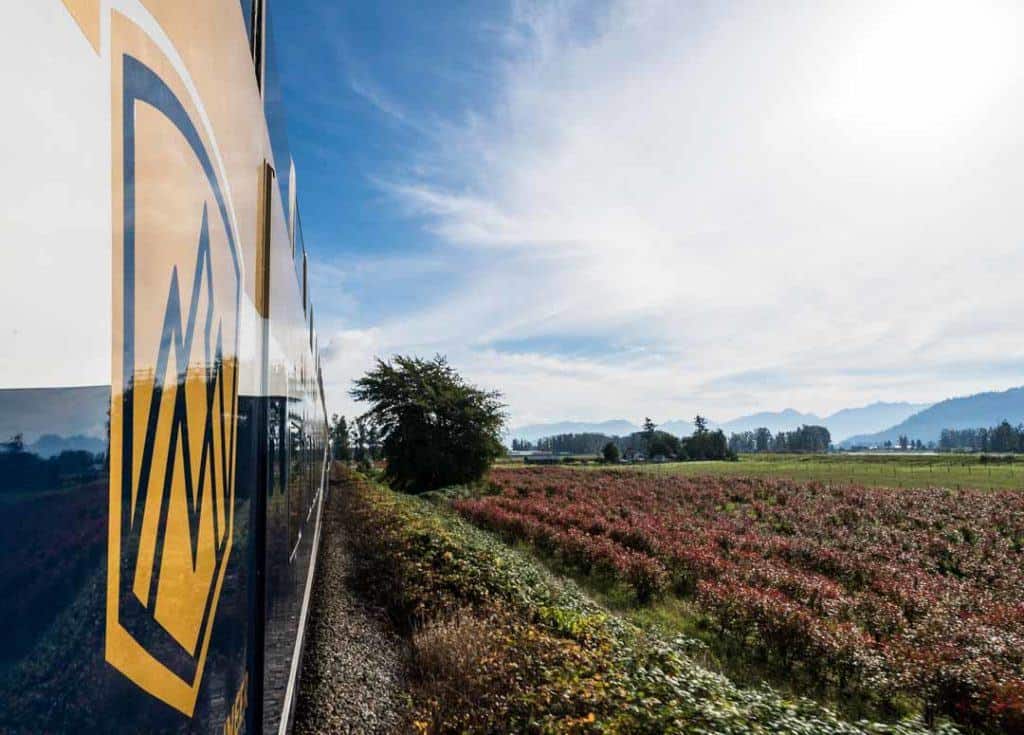
Getting Around Canada
It is pretty easy to get around when you are travelling in Canada. Expect to pay quite a bit more in Canada to travel between cities than in many less developed parts of the world.
And with higher costs, also expect longer durations in between destinations as distances in Canada can be great.
Travelling by Air
Travelling within Canada by air is the best way to cover ground quickly.
The county has many international and domestic airports. Sometimes, especially if you’re short on time, your best option is flying across the country.
In certain remote areas, there aren’t any other options besides air travel. When it comes to domestic flights, Air Canada has the best network of flights.
A few other companies include Air Creebec, Air St-Pierre, Pacific Coastal Airlines among others.
Travelling by Car
Rental cars are accessible and typically reasonably priced in more populated cities.
Much of Canada is best seen by rental car. There are many trips you can take to explore places considered off the beaten path for most.
Keep in mind that fuel prices can be high, particularly in less-trafficked regions of the country.
But a rental car would be a great way to explore the various cities in eastern Canada. It would also be the best way to get around the various national parks and other natural beauty in western Canada.
Travelling by Bus
In most cities, buses are the main form of public transportation. Toronto has the largest system, with around 140 bus lines.
Travelling by Taxi & Rideshare
Taxis are available everywhere in Canada. However, they are a very expensive way to travel.
You should ask the driver in advance what the price is going to be.
The prices are based on mileage and can’t be negotiated and are usually around USD$2 per kilometre.
In many of the larger cities you can also find rideshares such as Uber and Lyft.
These are often substantially more affordable than taxi. But note they are not always available outside of urban areas.
Travelling by Subway
Subway systems exist only in Toronto and Montréal. These systems cover the cities quite well. In Montréal, the subway network has 4 lines.
The daily tourist card costs USD$9 and a three-day pass costs USD$17. In Toronto, there are 3 subway lines available, and the daily pass costs USD$8.50.
In Vancouver they have the Skytrain network, which now connects the airport with downtown, making it very convenient to get around.
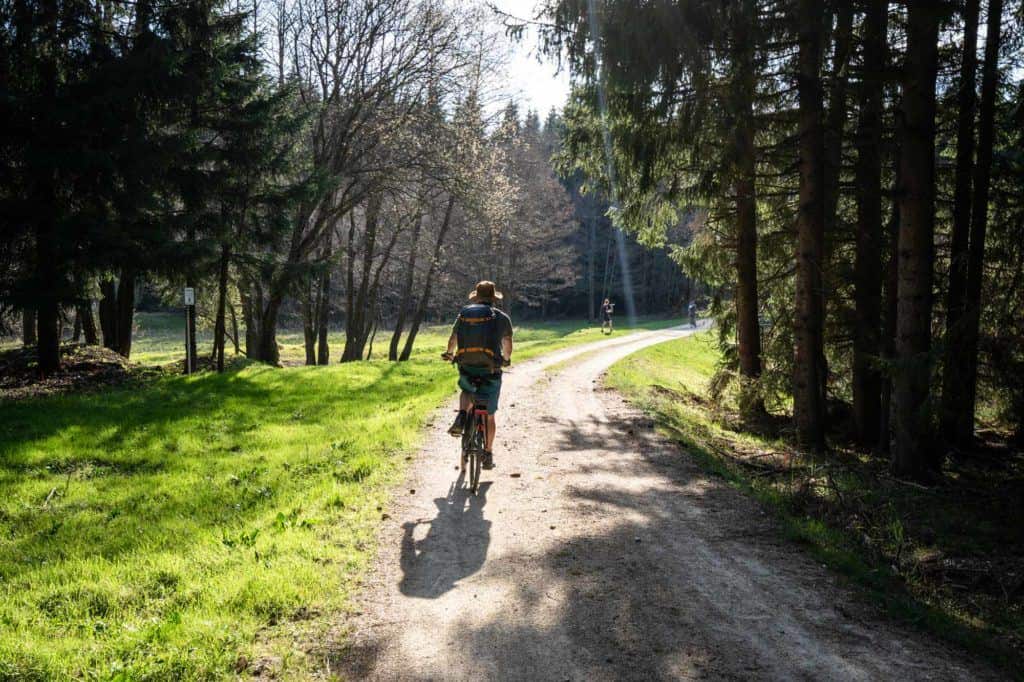
APPS AND TECHNOLOGY
Here are a few apps we think you should definitely acquaint yourself with prior to your travels:
- XE Currency – Transfer, monitor and calculate currency as the need arises. This app may not be totally necessary as you are typically tied into rates the banks charge for services. But it is handy to have around.
- Express VPN – This will protect your sensitive information wherever you travel – not just in Canada. Be sure to have this to keep your online information secure as you travel.
- iOverlander – iOverlander is any Canadian road trip enthusiast’s best friend. Find every resource you need on the road – from free or cheap campgrounds to places to eat or refill RV supplies if travelling by campervan or RV.
- Gas Buddy – This app will help you find the most up-to-date fuel locations and prices when driving nearly anywhere in Canada. This is especially important to have when covering large distances or across remote parts of Canada.
BEST THINGS TO EAT IN CANADA
Some Canadian specialities are worldwide famous. While some require some research to discover!
Here are some of the most popular dishes in Canada:
- Poutine : Probably the most well-known Canadian staple consisting of french fries and cheese curds topped with light-brown gravy
- Lobster Rolls : a sandwich made with lobster meat, lemon, and seasoning best served fresh in Nova Scotia or New Brunswick
- Butter Tarts : crumbly crust filled with a butter, sugar and egg cream
- Nanaimo Bars : a sweet, crispy and crunchy dessert bar with layers of chocolate and custard
- Montreal Smoked Meat : Delicious pastrami or brisket smoked and seasoned in a way particular Montreal
- Bannock : delicious native bread either baked or fried and similar to nan. Bannock is served in a variety of ways and included in almost every meal.
- Yellow Split Pea Soup : soup made with dried peas, veggies and salt pork
- Montreal Bagels : smaller and denser than its famous NY bagel, but usually with the typical everything seasoning
- All-dressed Potato Chips : a name given to some of the fanciest and most interesting flavours you can imagine for potato chips
- Maple Syrup : The maple leaf is iconic of Canada and the syrup from the maple tree is just as famous and delicious and well worth a try as often as possible
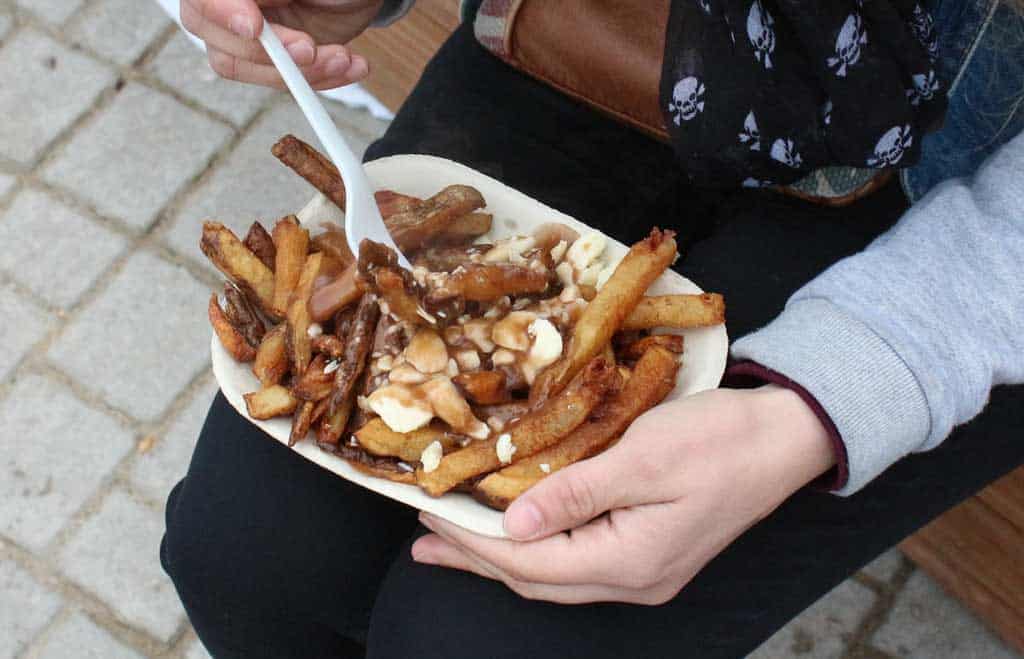
PLACES TO STAY IN CANADA
Canada is not exactly known for cheap accommodation. A highly developed country, rates can be relatively similar to those in Europe and the United States.
However, the prices vary and with advanced planning, you should be able to find a reasonably priced room.
Types of Accommodations
There are over 100 hostels spread out through dozens of cities across Canada. Staying in hostels is not only accepted, it is expected among budget travellers.
You can expect prices and amenities to be comparable to those in Europe. But remember many of the smaller towns and villages will not have hostels as an option.
Canada offers an abundance of hotels. These are typically the best option for travelers in a mid-range budget and are available in most cities and small towns and villages across the country.
Of course, prices range by location and amenities. And if you are travelling during the busier summer season be sure to book in advance.
Another good option for budget accommodation in Canada is Airbnb. In recent years Airbnb has been growing and there are more and more amazing places popping up in Canada to stay for very affordable prices every day.
As is typical in many destinations where Airbnb accommodations are available, you’ll likely find great value and a little more personal space with an Airbnb stay.
CANADA TRAVEL TIPS
Travel to Canada is more or less the same as travel to any country. But there are some subtle tips and tricks that will help make your visit safe, pleasant and more affordable.
GENERAL CANADA TRAVEL TIPS
While there are many basic travel tips we suggest you use when travelling to Canada, there are also plenty of Canada-specific tips that will make your visit the best it can be.
Here are a few we recommend you consider as you plan your trip to visit Canada:
- Pack (and dress) according to the weather. Depending on where and when you travel to Canada the weather can catch you off guard. From extreme heat to mind-boggling cold and everything in between, be sure to pack and wear what will keep you comfortable and safe.
- Have travel insurance. Canada has a fantastic health care system. But having travel insurance is always the best way to protect yourself financially from any mishaps on the road. Not sure you need it? Read this post .
- Be aware (and warned) of wildlife. Bear and moose look cute in pictures and videos. But they can be deadly in person. Canada abounds in wildlife so be mindful when you are out exploring.
- Know the emergency number. 911 is the same call for help in Canada as it is in the US. In some areas, 311 is also helpful for non-emergency situations.
- Tax and tipping are not included in meal prices. Know that tax will be added at the end of the meal and, while not required, tipping is customary at the 15-20% level.
- Pick up a little French. Depending on where you travel, it might be necessary. But you’ll find French is almost everywhere on signs and sometimes it will help to make local friends who can assist you in making the most of your trip to Canada.
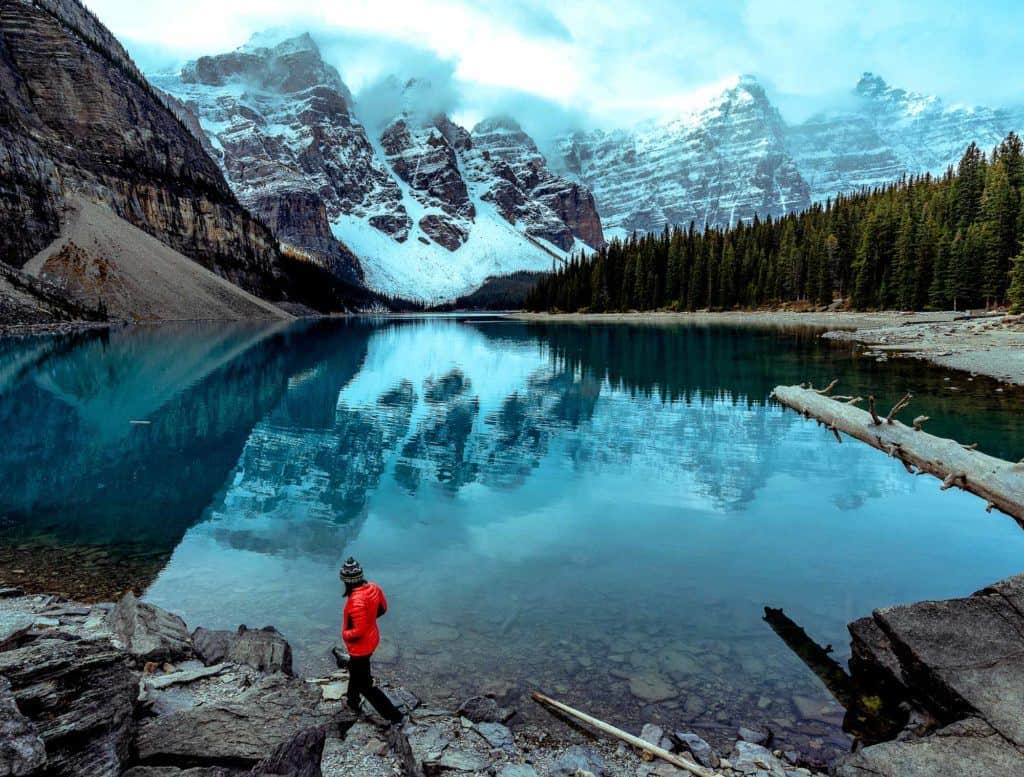
CANADA PACKING LIST
We always travel with a core packing list wherever we go. And when it comes to Canada, many factors will affect what else you need to bring along with you.
Check out our travel essentials and be sure to add any of the other additional items listed below.
Important Note! Before you book any international trip, we honestly recommend getting travel insurance. You never know when things will go wrong, and medical bills can add up quickly if you get sick or injure yourself overseas.
Our personal recommendation based on our own experience is World Nomads.
STAYING SAFE IN CANADA
Canada is a very safe country to visit. It has a very low crime rate and Canadian people are known for their hospitality and seem to always be willing to help someone in need.
Violent crime is basically non-existent in popular tourist spots.
Just like anywhere else in the world, there are some areas in big cities should be avoided. Ask the locals about those neighbourhoods so you can enjoy your trip in peace.
Also, take care of your personal belongings, since tourists are often victims of petty thefts.
Canada is also one of the safest countries for female travellers.
You shouldn’t have any problems if you’re travelling solo. Just keep in mind the same general safety tips you would use anywhere else in the world.
If you’re visiting the Canadian wilderness, watch out for the wild animals.
Every year tourists are attacked by bears, moose and bison. But this is usually due to not respecting the space of the animals and approaching too close to them.
Please mind the wildlife when you see it!
Your best option is to explore and area with someone familiar with it. But if that’s not possible, just be careful and study your maps, have bear spray, whistles and bells and know any regional laws or warnings when it comes to wildlife.
Check out our best travel tips to help you navigate around safely.
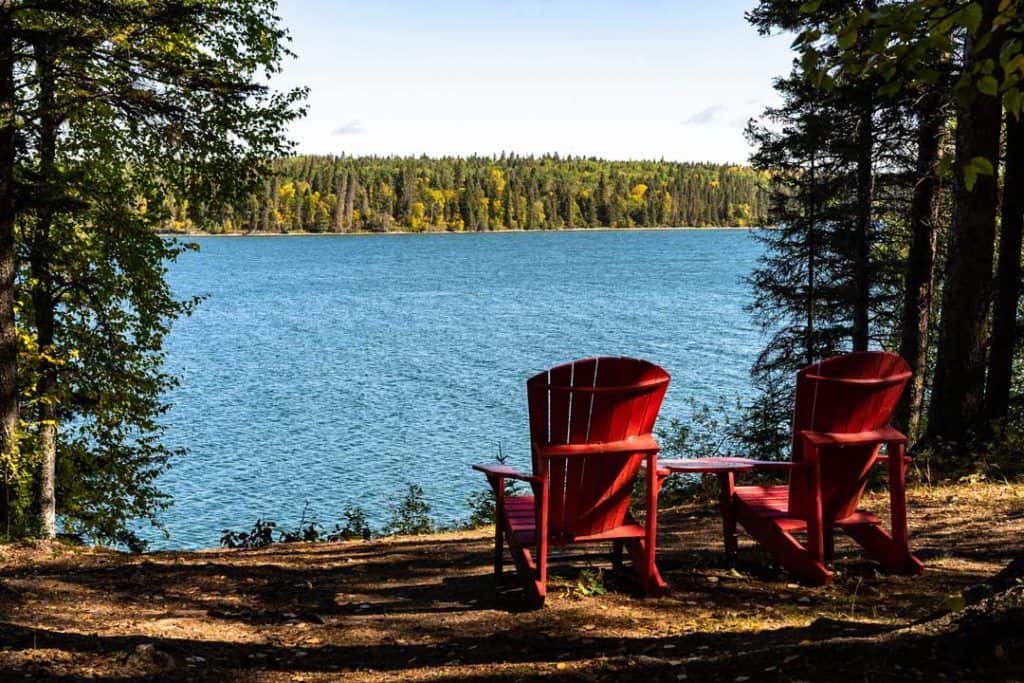
STAYING CONNECTED IN CANADA
Canada is a developed nation and staying connected while travelling in Canada is not very difficult. Of course, there are more remote places you can travel where cellular service will be limited.
And if you drive across the country you’ll experience long stretches of highway where you may have hit-or-miss cellular service.
In general, you can expect to connect to WiFi in a few ways for little to no cost. But we feel like your money will go a lot further if you consider a few other options.
Purchase a SIM Card
Purchasing a SIM card is one of the best ways to access local wireless networks in most countries.
In Canada, you can purchase a SIM card in any of the country’s 3 major carrier stores and at convenience stores and kiosks in major cities. Apply funds for prepaid service and purchase data as you need.
Then throw up a hot spot from your mobile device if you’d like to get online with your computer or tablet.
Rent a Portable WiFi Device
Portable WiFi devices are also readily available across Canada. Roam Mobile, WiFi Cube and MyWebspot Mi-Fi are just a few of the handful of options to look into if you don’t have a qualifying portable WiFi device of your own.
Access Free WiFI
Of course, the easiest and cheapest option to stay connected in Canada is to access free WiFi at a variety of places across the country.
Most hotels, hostels and Airbnb accommodations offer free WiFi.
And if you are out and about you can expect fast food and coffee restaurants such as Tim Hortons, McDonald’s and Starbucks to provide free WiFi as well.
BE A RESPONSIBLE TRAVELER IN CANADA
As is the case whenever you choose to visit and interact with people and places in a foreign land, Canada offers you the opportunity to be responsible in your journey.
Here are a few things to consider as you plan to travel to Canada:
- Leave the natural environment better than you found it. Pretty standard stuff here: pack out your trash, stick to the trails, pick up after yourself.
- Leave wild animals alone. Canada is full of wildlife encounters sure to change your life. But don’t touch, feed or otherwise harass wildlife.
- Be your own transportation as often as possible. Adding a bit of walking or biking to your travel plans reduces the impact of taking vehicles that contribute negatively to the environment.
- Support locals as often as possible. Sure the bigger cities will be full of big brands and mega shopping centres. But as you wander into more remote parts of the Great White North be sure to support smaller, independent businesses as often as possible – including merchants and tour operators.
BOOKS TO READ ABOUT CANADA
Maybe you already know everything about Canada. Chances are you don’t!
But even if you are well-read, here are a few suggestions that might be worth your time while you’re on the plane to Canada.
Canada (Mike Meyers) – Yes, Mike Meyers the comedian and actor has written a book that shows his take on his homeland from his hilarious, if not entirely quirky, perspective.
Alone Against the North (Adam Shoalt) – In a wild adventure that crowned him the “Canada’s Indiana Jones,” Shoalt embarks to explore the Again River in a way that shows that there are still parts of the world unexplored.
Why I Hate Canadians (Will Ferguson) – A humorous, satirical account of Canadian culture and history that sets out to show that opinions on Canada are best expressed through personal experience.
An Inconvenient Indian (Thomas King) – A serious, albeit darkly humorous, look at the Native American – White relationship that has taken place in Canada and throughout North America in search for ways for the collective culture to move forward in meaningful ways.
Read Our Canada Posts
Is dog sledding cruel the truth about dog mushing tours, the perfect banff itinerary you can’t miss (2024 guide), 25 awesome things to do in banff, canada, the ultimate guide to yoho national park in canada, the golden circle route – an epic yukon road trip itinerary, 17 awesome things to do in dawson city, yukon, the perfect 3 days in vancouver itinerary (2024 guide), 7 awesome day trips from montreal (2024 guide), the perfect 3 days in montreal itinerary, the 10 best day trips from toronto, 21 awesome things to do in toronto, canada [2024 guide], 11 fun things to do in hamilton, ontario.
- Search Please fill out this field.
- Manage Your Subscription
- Give a Gift Subscription
- Sweepstakes
- Destinations
How to Plan the Perfect Trip to Montreal — Luxury Hotels, Beautiful Parks, and Canada's Best Restaurant Included
Here's where to eat, stay, and explore in Montreal, according to a local.
Best Hotels
- Best Things to Do
Best Places to Eat
Best nightlife, best shopping, best neighborhoods to visit, best time to visit, how to get there, how to get around.
R.M. Nunes/Getty Images
Despite its sometimes divisive language politics, extreme seasons, and chronic traffic headaches, Montrealers, or les Montréalais , are justifiably proud of their distinctive, if idiosyncratic, city — and for good reason. Travel + Leisure readers named Montreal one of their favorite cities in Canada in 2023 .
The sophisticated, French-speaking (yet very bilingual), culturally diverse city lays claim to world-class restaurants, lovely parks, superb art galleries and museums, a dynamic music scene, inspiring 18th- and 19th-century architecture, and vibrant nightlife.
It can also be a lot of fun in the winter , when locals like to get out and celebrate the cold and snow, even extending the revelry at outdoor festivals and concerts at night.
Thom Seivewright, a Montreal expert and former hotel concierge, launched his small-group tour company, Tours Montreal , in the Canadian city in 2016. “Our art scene is on par with cities two or three times our size,” he says. “There’s obviously a big emphasis placed on arts and culture in Montreal.”
There’s a big emphasis on food , too. Montrealers love their bagels, cheeses, poutine, and maple syrup, and they’re loyal to their chef-owned restaurants. “It’s a little gem of a city that has world-class dining — and world-class junk food,” says Seivewright.
Long known for its exuberant after-dark scene, Montreal has it all, from cocktail bars to Irish pubs, jazz bars to pulsating dance clubs. The city is even planning to create a 24-hour nightlife district .
Here's everything you need to know to plan a memorable trip to Montreal.
Top 5 Can’t Miss
- The fashionable, Parisian-style brasserie and rooftop terrace at Hôtel Le Place d’Armes, a boutique luxury property overlooking Place d’Armes and the Notre-Dame Basilica, attracts locals and tourists alike.
- Designed by American landscape architect Frederick Law Olmsted, who was also responsible for New York City’s Central Park, Parc du Mont-Royal is an oasis of greenery in the city center.
- Mon Lapin, a cozy wine bar and restaurant in Little Italy serving natural wines and an ever-changing menu of small plates, was voted Canada’s best restaurant in 2023 .
- Bar Furco’s lovely terrace becomes lively in the summer during Montreal’s ritual cinq à sept (happy hour).
- Saint Laurent Boulevard, a.k.a. the Main, is a good place to get a glimpse of Montreal’s 19th- and 20th-century immigrant history. It's also the historical dividing line between French and English in the city.
Courtesy of Four Seasons Resorts
Hotel Nelligan
Hotel Nelligan , located in the heart of Old Montreal, was T+L readers' favorite city hotel in Canada in 2023 . Spanning four 19th-century graystones, the 105-room boutique property lies near the Notre-Dame Basilica and Old Port waterfront. Its seasonal rooftop terrace is a summer favorite for its picturesque views and lively happy hour.
Hôtel Place d’Armes
Another T+L reader favorite, Hôtel Place d’Armes is housed in four 19th-century neoclassical buildings opposite the Notre-Dame Basilica. The property is highly rated for its tasteful rooms featuring hardwood floors and brick walls, swanky French brasserie , and popular rooftop terrace.
Hôtel Uville
One of the city’s newer hotels, opened in 2020, Hôtel Uville got its name thanks to its location in Old Montreal’s Place d’Youville. Uville is part design hotel, part museum — a love letter to the Montreal of the 1960s and '70s. This was transformative period, a time when francophone Quebecers were turning away from the Catholic church and leading the charge in North America vis-à-vis cuisine, style, and design — the culmination of which were Expo 67 and the 1976 Olympics.
“This hotel is very cool,” says Seivewright. “They did a great job. The details, like the tiled bathrooms and custom-made wallpapers, are amazing. They’ve got archival photos and artifacts from the '60s and '70s in each of the rooms, and documentary films from the National Film Board that you can watch on your room’s TV.”
The Ritz-Carlton, Montreal
Montreal’s grande-dame hotel, the Ritz-Carlton , opened in 1912 in the city's Golden Square Mile. In addition to housing chef Daniel Boulud's Maison Boulud , the refined property offers afternoon tea in the ornate Palm Court and seasonal garden terrace, Spa St. James, and an indoor saltwater pool.
Four Seasons Hotel Montreal
Located in Golden Square Mile since 2019, the posh Four Seasons Hotel Montreal is connected via a third-floor walkway to the luxury department store Holt Renfrew Ogilvy . The hotel boasts Marcus Restaurant + Terrace, in partnership with legendary Manhattan chef Marcus Samuelsson; a Guerlain Spa; and a skylit swimming pool with an upstream current generator.
Best Things to Do
Taylor McIntyre/Travel + Leisure
Parc du Mont-Royal
What Central Park is to New Yorkers and Hyde Park to Londoners, Parc du Mont-Royal, or Mount Royal Park, is to Montrealers. At 764 feet high, Mount Royal may not be much of a mountain, but the park is, as Seivewritght says, “the heart and soul of the city.” He adds, “The fact that Montreal is a four-season city and Mount Royal is a four-season park makes it even better because you’ve got skiing, skating, and tobogganing in the wintertime. And in the summer, you can go biking and walking.” You can also go for a picnic and rent a rowboat or Mölkky or spikeball equipment at Beaver Lake.
Old Montreal
With its graystone buildings and narrow streets, Old Montreal can sometimes feel like a slice of Europe in North America. Certainly no visit to Montreal is complete without a stop here. Not only will you find the city’s most important historic landmarks, including the Notre-Dame Basilica , the 18th-century Notre-Dame-de-Bon-Secours Chapel , the Second Empire-style City Hall, and the neoclassic Marché Bonsecours , but it’s also home to pretty boutique hotels, haute-couture shops, and chef-owned restaurants.
Pointe-à-Callière
A national archaeological site, Pointe-à-Callière , now an impressive archaeology and history museum, sits above the ruins of the birthplace of Montreal. “The Pointe-à-Callière museum is amazing,” says Seivewright. “They’ll take you underground to see the ruins of the original fortifications of Montreal, the original city the French built here in the 1600s.” Visitors can also see Indigenous artifacts uncovered during a dig and part of North America’s first collector sewer, built between 1832 and 1838.
Arsenal Contemporary Art Gallery
Opened in Montreal in an 80,000-square-foot building in 2011, Arsenal Contemporary Art has since expanded to include locations in Toronto and New York City. “Outside of the museums, I would send my clients to certain galleries around town. These days, one of my favorites is Arsenal. It has an amazing [selection] in its permanent collection, but it also puts on temporary exhibits that are just mind-blowing,” says Seivewright.
Montreal is a city of festivals, with everything from jazz (the city hosts the world’s largest jazz festival) to Pride to circus arts celebrated here. There’s even a dedicated festival and outdoor performance space downtown called the Quartier des Spectacles . While there are festivals year-round , May to September is the city’s busiest period.
eyedias/Getty Images
La Banquise
One of Quebec's most beloved foods is poutine, traditionally a mess (translation of "poutine") of french fries, cheese curds, and gravy. But poutine continues to get more upscale. A veritable institution since 1968, La Banquise doesn’t claim to be high-end, but the casual eatery serves 35 kinds of poutine and it’s open 24 hours. “La Banquise is a classic. I’m [vegetarian], and in my opinion, the veggie gravies are even more delicious,” says Seivewright. “A lot of people knock La Banquise because it’s popular, but I stand by it.”
Montreal Plaza
The design at Montreal Plaza is elegant and stylish, yet also notable for its eccentric touches like a dollhouse hanging upside down from the ceiling and Elmo sitting on the bar. Even certain dishes, like crudo or oysters, are served atop a toy triceratops or among plastic Smurfs. Chef and owner Charles-Antoine Crête and his team enjoy serving great food in a playful, joyous way. “This is my favorite place,” says Seivewright. “It’s not the just the way the food is prepared or what it is, but the whimsical, creative way it’s presented.”
Sushi Momo , from Mexican-Canadian chef Christian Ventura, is Montreal’s best vegan sushi restaurant. The sleek, dimly lit, botanically adorned space in the Plateau area is inviting, while the artfully plated confections are a feast for the eyes and the fusion of flavors a song for the taste buds.
Nora Gray , a lively, casual restaurant in Griffintown, is known for its southern Italian cuisine, updated cucina povera , and privately imported natural and organic wines. The dark wood, banquettes, long bar, and warm candlelight lend the restaurant an intimate, romantic, and club-like feel.
Dominique Lafond
Voted Canada’s best restaurant in 2023 , Mon Lapin is a cozy wine bar and restaurant in Little Italy. It serves natural wines and an ever-changing menu of French- and Italian-inspired small plates. Each dish highlights fresh, seasonal, and local ingredients plus unexpected flavor combinations.
Henryk Sadura/Getty Images
Cloakroom Bar
The 25-seat Cloakroom Bar , with a cloak-and-dagger atmosphere, was named Canada’s second-best bar in 2023 . “It’s one of my favorite bars anywhere in the world,” says Seivewright. “It’s hidden behind a menswear shop, which makes it even cooler. It’s very exclusive feeling. You tell them, 'I like gin, I like citrus,' and they’ll create something for you. If you’re three people and you all like the same thing, they’ll create three different drinks.”
Situated in the Plateau Mont-Royal, Diese Onze is an intimate jazz bar that also serves tapas and mains. “I’m a big jazz fan, and I love Diese Onze,” says Seivewright. “It’s a good mix of local and out-of-town musicians.”
Upstairs Jazz Bar & Grill
A Montreal institution since 1995, Upstairs is, funnily enough, located in a basement. It attracts big-name international jazz acts who make this a routine stop on their tour itineraries.
Pub Le Sainte-Élisabeth
Established in 1997, this European-style pub between the Quartier des Spectacles and student-heavy Quartier Latin is quite cozy inside, but it’s the enclosed, leafy terrace at the back that draws people here come summer. The service many not win any awards, but Le Sainte-Élisabeth is about the ambience.
The minimalist redesign of the Canadian Fur Company building (hence Furco ), located on a downtown back street, is a big draw for wine lovers and the happy hour crowd. It features an adventurous food and wine menu, in addition to more traditional charcuterie and cheese plates.
Maison Marie Saint Pierre
Marie Saint Pierre 's Montreal-made, ready-to-wear pieces marry timeless feminine styles with contemporary flair and function.
Entering this handsome Crescent Street atelier-cum-boutique near the Montreal Museum of Fine Arts is like stepping into an old-school European tailor shop. Started by their father, Arthur Der Shahinian, sons Tavit and John carry on the tradition of crafting impeccably fitted and designed bespoke men’s suits and shirts, with damask silk lining and hand-sewn button holes, never compromising on quality or friendly, professional service.
Simons is originally from Quebec City, but it’s popular in cities across Canada. The small, mid-range department store downtown carries popular fashion brands as well as its own collections, in addition to homewares. “I’m a big fan of Simons,” says Seivewright. “I buy half my clothes there. The price point is good, the quality is good, and I like that it’s a local brand.”
Holt Renfrew Ogilvy
Montreal’s answer to Saks Fifth Avenue, Holt Renfrew Ogilvy is a one-stop shop for all things luxury, including clothing, shoes, and accessories. Clients can also enjoy a personal shopping experience in one of the five fifth-floor suites or the glamorous art-deco Café Holt, with its remarkable solar-like orb set above the central bar.
Saint Laurent Boulevard
“Saint Laurent [Boulevard], between Saint Joseph Boulevard and up to Van Horne Avenue, has the best boutique design shopping nowadays,” says Seivewright. “You could go all the way up to Little Italy and it’s still amazing. I was walking there the other day and every single window I walked by made me want to go in. There are furniture shops, clothing shops, and jewelry shops — some of it is new, some of it is vintage, and it’s all local.”
Saint-Henri
Saint-Henri, once a francophone working-class neighborhood, is now gentrified, replete with popular, chef-owned wine bars and restaurants, antiques shops, cafes, and boutiques. Still, it retains pockets of its former self. “I love it because it has parts that haven’t changed in a hundred years and others that make it the most modern neighborhood in Montreal,” says Seivewright. “It’s got a cool, little rough-around-the-edges vibe. It’s one of those neighborhoods where you’ll have a multimillion-dollar home next to a really rundown place, and you see that contrast. Then, you listen to the people and hear French and English. You've got old people, young people — it’s a neighborhood where everything mixes.”
Plateau Mont-Royal/Mile End
Once relegated to working-class European immigrants, the Plateau/Mile End area is the epicenter of Montreal’s creativity and bohemian joie de vivre. Leafy streets lined with triplexes fronted by balconies and steep, often-winding, wrought-iron staircases invite visitors to explore this neighborhood bursting with convivial cafes, top-drawer restaurants , funky vintage shops, and trendy boutiques.
For a glimpse into how the upper crust of Montreal lived until the 1970s and '80s, head to the neighborhood of Outremont. Its two main shopping and dining strips are Bernard Ouest and Laurier Ouest avenues — part of the former turns into a pedestrian-only area come summer, with restaurant terraces sitting directly on the street.
Montreal is a four-season city. Late April to mid-May tends to be best for blooming trees, while October to early November is usually prime for leaf peeping. The holiday season is lovely, but a white Christmas is increasingly rare. For a stronger chance of experiencing the romance of winter snow, January and February are ideal. Summers in Montreal are hot and humid, and heat waves can now begin as early as May. Visit in May, June, or late August through September and October to avoid the worst of the summer temperatures and crowds.
Chris Jongkind/Getty Images
Montreal can be reached via regular flights with Air Canada, Delta, American, and United. Flying from New York’s LaGuardia to Montreal-Trudeau International Airport, better known as Dorval (YUL), takes about 90 minutes gate to gate. Driving may be cheaper, but it takes about seven hours, and unless you’re planning to pay for hotel parking, parking in Montreal can be a hassle. For travelers living in New York or Vermont, a more scenic and leisurely option (10 hours) is Amtrak’s Adirondack train from Moynihan Train Hall to Montreal’s Gare Centrale (Central Station).
Patrick Donovan/Getty Images
In summer, the best way to get around is on foot or by Bixi, the city-wide bicycle rental system. In 2023, Bixi decided to end the storage of their bicycles during the winter, so they are now available year-round. However, there are not as many stations as in summer. The metro (subway) is fairly reliable and frequent during rush hour — and often the quickest way to get from point A to point B. Buses tend to be less reliable, but they go everywhere the metro does not. An Opus card can be purchased with several fares added, if you’re planning on using the metro and/or buses often. Taxis and Ubers are readily available, too, and taxis can be hailed on the street.
Best Times to Visit the East Coast of Canada
Canada’s eastern coast and Maritime provinces lie along the wild Atlantic Ocean. As well as stunning coastal scenery and pristine beaches, the coast offers a wealth of adventures and sightseeing. Outdoor activities abound, there’s culture galore and the wildlife-watching opportunities are out of this world. Food-lovers can sink their teeth into an abundance of delectable fresh seafood and wine aficionados can sip on the unique Tidal Bay wine , produced only from grapes that grow in Nova Scotia. Locals are known for their friendly disposition and each area boasts its own unique history, culture and traditions.
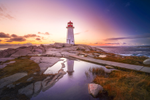
The summer months are pleasantly warm, making this an ideal time to experience the myriad delights of Canada’s east coast. Most visitors come between April and October, keen to discover some of Canada’s most exciting areas. The best times to visit the East Coast of Canada does depend on what is important to you.
The Best Time to Avoid the Crowds When Visiting Eastern Canada
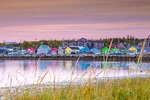
When considering the best time to visit the East Coast of Canada, you may want to factor in avoiding the summer crowds . The Canadian Maritimes experiences its high season in July and August. Schools are closed over the height of summer and many families take day trips and vacations around the beautiful coast. That said, the crowds are rarely stifling; Eastern Canada is still relatively peaceful, even during the summer. T he increase in visitors does mean an increase in costs. You should also book accommodations, transportation and activities in advance to avoid disappointment. Our Canadian Insiders can make all of your arrangements for you .
June and September are especially great months for avoiding crowds. The weather is pleasant and there’s an abundance of things to see and do, but without the summer vacationers. Although cooler temperature wise, April and May (outside of the Easter school break) are also ideal if you want to explore in quieter times.

Keep reading or discover more travel inspiration in our brochure. This guide showcases our world-famous train journeys, with ideas for personalizing your Canadian vacation.
The Best Time for Seeing Fall Colors on Canada’s East Coast

Picking the best time to visit the East Coast of Canada also depends on what you want to do — and the fall offers fewer fellow travellers and vivid colours. With the changing of the seasons comes the stunning fall foliage , with trees painting the landscapes in shades of red, brown and orange. Fall colors start to appear along Canada’s east coast around late September, with russet hues aplenty until around the end of November. The best time to enjoy fall colors at their peak is between the middle of October and early November.
The Best Time for Whale Watching in Eastern Canada

The East Coast of Canada is one of the top spots for whale watching in the world. In general, there’s a decent chance of seeing whales off the shores of eastern Canada between April and October. However, different species are visible in different areas at varying times of the year.
In Atlantic Canada, New Brunswick is a top spot for seeing humpback, fin and right whales. Newfoundland and Labrador offer visitors the chance to see humpback, fin and minke whales. Nova Scotia is ideal for sightings of humpback, fin, right and long-filled pilot whales. In all areas, it’s possible to catch a rare glimpse of orcas, blue whales, beluga whales and sperm whales.
Whale-watching season is also a terrific time for seeing dolphins, porpoises, seals and a range of aquatic birds in the waters around Canada’s east coast.
Most whale-watching tours around Halifax operate between May and September, with July, August and September being the prime months for whale spotting. The weather is generally clear and there are numerous whales in the waters.
By June, humpback whales are abundant around Cape Breton and the Bay of Fundy, with other species appearing earlier in the spring and remaining until the fall. August is generally considered the ultimate time for whale-watching adventures.
Talk to your vacation advisor about adding a whale-watching excursion to your Canadian train vacation .
#1 Travel Tip: Take a tour to the Bird Islands
From May to August, bird enthusiasts can search for Atlantic puffins on a boat tour to the Bird Islands in Cape Breton. These islands are an official bird sanctuary and the puffins' nesting grounds.

The Best Time for Special Events When Visiting the East Coast of Canada

There are plenty of celebrations and festivals in eastern Canada throughout the year, with summer an especially lively time for revelry and fun.
In Nova Scotia, where several of our train vacations start or end , notable events to add to your calendar include Margaree Highland Games, Pictou Lobster Carnival, the cultural Nova Multifest in Dartmouth, Fox Mountain Country Music Festival, Festival Acadien De Clare and the music-filled Nova Scotia Summer Fest.
Nova Scotia’s capital of Halifax has myriad special events during the summer, including Halifax Busker Festival, Halifax Pride Week, the splendid Royal Nova Scotia International Tattoo, Halifax Urban Folk Festival and Halifax Seaport Cider & Beerfest. The city also hosts one of the biggest summer festivals along Canada’s Atlantic coast: TD Halifax Jazz festival. Festivals related to food, film and music add to the vast diversity.
The Best Time for a Canadian Train Vacation on the East Coast of Canada
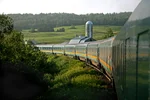
While there’s no bad time to enjoy a memorable train vacation in Canada, the summer is an especially exciting time. As well as warmer sunnier days, summertime features a packed calendar of special events, excellent wildlife spotting opportunities and many ways to enjoy the spectacular nature and scenery of the great outdoors.
Over the summer, board an overnight rail tour of eastern Canada and discover the magic of Montreal, Quebec City and Halifax, complete with local guides in each destination. With even more time, how about traveling coast to coast and enjoying a Vancouver to Halifax adventure?
#2 Travel Tip: Prince Edward Island
Looking to visit Prince Edward Island? July and August are the busiest months and have the best weather, but foodies should go in September for the award-winning PEI Fall Flavours Festival.

When to Visit the East Coast for the Best Weather
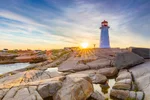
Warm summers, cold winters and relatively pleasant shoulder seasons make spring to fall the most appealing time, weather wise, to visit the East Coast of Canada .
Novia Scotia and nearby areas, collectively known as the Atlantic Maritime ecozone, typically have the warmest temperatures in Atlantic Canada. Rain is common throughout the year and winters are often snowy and icy.
Using Halifax as an example, by April, you can expect a high of 48 degrees Fahrenheit and a low of 32 degrees, with an average daytime temperature of 39 degrees Fahrenheit . Rain is frequent, with around 15 days of the month seeing precipitation, although there are clear sunny days too.
In May, the average daytime temperature is around 54 degrees Fahrenheit. Days are brighter and sunnier, and there’s a high chance of clear blue skies. Rain showers are still common.
June is the first month of summer, and temperatures can reach up to 61 degrees. There are 8 hours of sunshine, on average, each day, and June sees some of the longest daylight hours in Halifax.
July’s temperatures can reach 70 degrees Fahrenheit . With almost 9 hours of sunlight and the least rainfall, July can be a great month for enjoying the great outdoors.
August has the most sunshine, with an average of 9.4 hours each day. August is the hottest month in Halifax; temperatures are typically between 61 and 72 degrees Fahrenheit . August also has the warmest seawater temperatures.
As the first month of fall, September sees a slight drop in the temperature, with a daily average of 59 degrees Fahrenheit . There’s a combination of sunny and rainy days.
- August is the warmest month
- July has the least rainfall
- June has the longest hours of daylight
About the author: Hannah Poaros-McDermott is the Senior Content Coordinator at Fresh Tracks Canada. She has previously written for and shared her local knowledge in Where Vancouver, Where Whistler, and Essential Vancouver magazines. Originally from the UK, Hannah travelled... Read more
Discover More
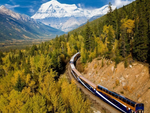
Discuss your Canadian train vacation with a local travel expert
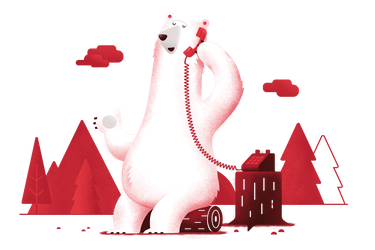
Or call us toll free
Current promotions
Sign up for special offers, monthly Canadian Insider tips, and vacation inspiration.

When is the Best Time to Visit Banff, Canada?
I f you’re wondering when is the best time to visit banff canada, read on. we’ll walk you through everything you need to know to choose the best time for you to experience the canadian rockies..
Like each UNESCO World Heritage Site, Banff is amazing in its own unique way.
Banff National Park and the surrounding Rocky Mountains are serious bucket list destinations for many, but how do you know which is the best time of year for your visit?
The truth is, there are pros and cons to visiting this spectacular mountain range in each season. So, we’ll help guide you through how to choose the right time to visit Banff.
As a travel-lover myself, one of the most key questions I ask myself when choosing a destination is, “What do I want to do?”. When it comes to the Canadian Rockies, this question trumps even the question of what sort of weather you’re hoping for.
If there’s one thing Banff is known for above all else, it’s natural beauty. And you’ll find a wide range of outdoor activities to enjoy in each season, so take your pick!
Yes, there are activities, such as hiking, which can certainly be enjoyed in any season here. In this case, the secondary question likely then becomes, “What type of weather would I like to hike in?”.
Budget is another major factor for most visitors, and how easily your budget will stretch varies a huge amount by season in Banff.
Not unlike Whitefish, Montana, Banff has two distinct high tourism seasons: summer and winter.
The reason why you find these double peak seasons is because these are places of superb natural beauty, and they also happen to be renowned ski towns, as well.
Therefore, you’ll find these locations get the usual huge bump of visitors in the summer months, during summer break. Then, you’ll also see the skiers and snowboarders visiting in droves in winter.
So, while spring and fall are inarguably beautiful here, these then become considered “shoulder seasons” to the tourist blitz that is summer and winter in Banff.
Summer in Banff
The bigger of two annual high seasons in the Canadian Rockies, and with good reason. If you’d like to visit Banff during their warmer weather, this is a good time to go.
The warmest months are the most popular time of the year to visit here.
Summertime in the Canadian Rockies brings beautiful weather, unforgettable scenery, gorgeous hiking, emerald green alpine lakes, excellent road conditions, and more.
For families with children in school or school teachers looking to travel during summer break, summer is a top option.
☀️ Pro Tip: For Americans traveling to Banff in summer, there’s a gap in the tourist season where most Canadian kids are not yet out of school, but American kiddos are. From early June to mid through late June, you’ll find gorgeous weather, with a bit fewer crowds before high season fully kicks into gear.
Wildlife Viewing
You’ll find abundant wildlife viewing and excellent birding in many areas.
Keep your eyes wide open, and you have a good chance of seeing anything from deer and elk, to moose, elkhorn sheep, and even Grizzly or black bears.
Check out the Banff Gondola and the top of Sulphur Mountain to try your hand at Grizzly bear and bighorn sheep sightings in summer.
Vermilion Lakes offers a great spot for some of the very best birding in the Canadian Rockies. Don’t forget to watch carefully along the famed Icefields Parkway for all sorts of wildlife.
As you approach Jasper National Park, the booming tourist crowds of Banff begin to thin, and you’re likely to spot more animals in quieter areas.
Summer hiking in the Canadian Rockies is the stuff of legends.
Many visitors consider hitting the trails to be one of the very best things to do in Banff. You won’t find more scenic mountain trails than you will here.
With so many dreamy hiking trails here, it’s impossible to name them all, but some great places to start include the Lake Louise Lakeshore Trail, the hike to Lake Agnes Tea House, and Johnston Canyon.
Moraine Lake Rockpile is another favorite place here for hikers. Tunnel Mountain Hike and Two Jack Lake Trail are a few other really excellent choices for getting started.
Whitewater Rafting
When you think of whitewater rafting, odds are you think of some serious rapids.
But whitewater rafting offers a wide variety of experiences in Banff, from very gentle, family-friendly rafting to wild rapids.
The options available here open this great summer activity up to more paddlers.
There are very mild, family-friendly rapids on the Kananaskis River, as well as anywhere from milf to wild options along the Kicking Horse River.
Art In Nature Trail
This family-friendly art exhibition is a really great option for a casual walk about town.
This outdoor art trail is free of cost and can be enjoyed before having dinner in town or after your morning coffee.
Beginning at Banff Park Museum, you’ll walk alongside the beautiful Bow River, enjoying artworks from all local Bow Valley artists.
The Art in Nature Trail features over features over 65 unique pieces to enjoy as you stroll about town.
Via Ferrata
Haven’t you heard of via Ferrata before? It’s a type of mountaineering comprised of a combo of hiking, rock climbing, bouldering, and traversing.
Experienced guides lead the way, and all safety measures are taken, including using fixed ropes to cross different areas.
Still, the via Ferrata is a decidedly thrilling experience, sure to satisfy the adventurous among you. Options in Banff operate at either Mount Norquay Ski Area or at Kicking Horse Resort.
During the warm weather season, from May 1st to June 25th, the eastern portion of the Bow Valley Parkway is completely closed to vehicle traffic.
This is a great time to rent some bikes and head out cycling along this gorgeous stretch of wilderness.
Bow Valley Parkway is actually an extension of the beautiful Legacy Parkway, so you can even hop on your bikes in Canmore and head into the National Park.
The Bow Valley Parkway is also one of the best places in Banff National Park for wildlife viewing in summertime.
Because it’s at a relatively low elevation compared to surrounding areas and it has a wide variety of vegetation, wildlife is abundant.
Keep your eyes peeled for sightings of big horn sheep, elk, deer, and both black and Grizzly bears.
Kayaking and Canoeing
Paddling along the water is a great way to enjoy the rugged beauty of this area.
While Moraine Lake and Lake Louise are extremely popular spots for paddling the day away, there are quieter lakes and rivers to enjoy, as well.
Vermilion Lakes is a quieter spot for canoeing and kayaking and is still quite close to the town of Banff.
For 5-star views of Mount Rundle, grab your oars and head to Two Jack Lake. And experienced paddlers will enjoy the thrill of beautiful Lake Minnewanka.
One of the biggest, and for some travelers, deal-breaker level issues is that summer finds Banff at peak season.
Peak season in any vacation destination brings with it correspondingly high prices. Accommodations not only fill up further ahead of time for summer, but pricing reflects the higher demand.
You’ll find larger crowds during summer, so hiking trails will be busier, and certainly, parking at trailheads will be more challenging, including the always-busy parking lot at Lake Louise.
Many find taking ROAM, Banff’s excellent public transport system, to be beneficial during the warmer tourist season.
Everything from dinner reservations to renting those famous red canoes at Lake Louise requires a bit more planning ahead. In addition to thoughtful planning, expect activities to cost a premium as opposed to other seasons in Banff.
Fall in Banff
Autumn is an excellent time to visit Banff.
For those willing to explore in cooler temps, you’ll find many of the charms of summer alongside far fewer fellow tourists and markedly cheaper prices.
As every true budget traveler knows, those willing to make certain concessions are often handsomely rewarded in the off-season. And Banff is no exception to this rule.
Traveling to Banff in shoulder seasons offers tantalizing rewards. From budget-friendly prices and vibrant fall colors to uncrowded hiking trails, there’s so much to love about Banff in the off-season.
Let’s walk through all that the Canadian Rockies have to offer in autumn.
Fall Colours
Autumn is the perfect time to head to Banff for fall color viewing.
The beauty of the Canadian Rockies is on full display this time of year, courtesy of the golden yellow larch trees.
The larches are found in cooler climates and feature needles that change to vibrant golden-yellow and orange colors just before they drop.
For the very best larch tree and all fall colors here in Banff, head to the Rockies at the end of September or early October.
Seeing the larch trees turn color is a thing of spectacular beauty, and the colors don’t last long before they lose their needles.
Banff Gondola
Booking a ride to the top of Sulphur Mountain on the Banff Gondola is a fantastic way to enjoy autumn here. It’s also a great option for families and those with young kids.
Once atop Sulphur Mountain, you’ll gaze out upon 360-degree views of six different mountain ranges: the Rockies, Bow Valley, and the town of Banff below. You’re sure to peep the beautiful larches in autumn from atop Sulphur Mountain.
Of course, hitting the trails is a fantastic way to view the natural beauty of Banff, and autumn is a lovely time to head here.
Some of the very best hiking in Banff to soak in the changing colors include Rock Isle Lake, Healy Pass, Taylor Lake, Rockbound Lake, and Bourgeau Lake.
Other excellent options include Larch Valley and Sentinal Pass, Lake Annette, Saddle Mountain, and beautiful Paradise Valley.
🐻 Pro Tip: Don’t hike without your bear spray! This rule is applicable for every season in Banff, so fall is no exception.
Less Crowds
Of the two shoulder seasons, fall is the quietest time in Banff. You’ll be able to walk into any number of Banff restaurants and be seated.
Forget the lines for attractions..you’ll cruise right up to trailhead parking lots, great seats at restaurants, and the best shopping in the town of Banff.
It isn’t just the hiking trails where you’ll feel the extra space fall shoulder season affords.
The town of Banff is far less crowded during fall, and parking at even the most popular hotspots, such as Lake Louise and Moraine Lake, have available parking.
Banff Springs Food and Wine Festival
If you’re looking to try all sorts of delicious eats and sumptuous wines, this festival will delight you! Held each year in October, this food and wine festival features the most tasty local eats from the surrounding area.
The cons to visiting Banff in the fall are mainly weather-related.
Once summer turns to fall in the Rockies, the weather takes a distinct turn for the cooler and, as the season goes on, more unpredictable.
So, if you don’t mind the chill, fall is a really, really excellent time to visit.
But, if you’re looking for warmer, sunnier weather, fall might find you a bit disappointed.
Winter in Banff
The Canadian Rockies have become a well-respected vacation destination in the winter months, and Banff certainly does not disappoint this chilly time of year.
Beginning in November and continuing through March, this Canadian wilderness transforms into a beautiful winter wonderland.
Rich in winter sports of every kind, you’ll get active surrounded by some of the most beautiful mountain landscapes in the world.
Or, for a more relaxed approach, stroll the shops, museums, and restaurants in town or enjoy a soak in Banff Upper Hot Springs.
Skiing and Snowboarding
Banff is a world-renowned destination for winter ski trips. With three world-class skiing and snowboarding resorts, you’re sure to find some excellent powder here to shred.
What makes Banff such a world-class destination for skiing?
The Canadian Rockies have quite a few relevant factors going for them, one of the most significant being the quality of the snow here.
Often referred to as “champagne powder,” the fluffy, powdery snow you’ll find on the slopes here is the stuff of skiers’ dreams.
Not only is the snow high-quality here, but Banff sees a huge amount of snow each season, so you’ll find gorgeous, deep powder to shred here.
Some of the very best ski resorts in the area include Banff Sunshine Village Resort, Lake Louise Ski Resort, Nakiska Ski Area, and Mount Norquay Ski Resort.
Snowshoeing
Snowshoeing is another excellent winter activity here.
Snowshoeing in Banff ranges from the family-friendly Johnson Lake Trail (easy) or the Lake Louise Lakeshore Trail (flat/easy) to the Upper Stoney Lookout Trail (moderate) to the extremely challenging Cascade Amphitheatre Snowshoe.
The ever-popular Johnston Canyon is another awesome spot for winter snowshoeing adventures.
Ice Skating
Winter is the perfect time to visit Banff if you dream of ice skating on beautiful Lake Louise.
One of the most famous winter activities here, you’ll find yourself gliding across this glacial lake, surrounded by the snow-covered Rockies.
It feels like skating inside a snow globe…like magic.
Other beautiful Banff lakes for outdoor ice skating include Two Jack Lake, Vermilion Lakes, Lake Minnewanka, and Johnson Lake.
⛸️ Pro Tip: Be sure to do your due diligence and only head out skating on frozen lakes you’re absolutely sure are safe to skate on.
Banff Christmas Market
If holiday shopping against a stunning mountain backdrop sounds like fun, Banff’s Christmas Market is a wonderful winter event to enjoy.
You’ll have the chance to shop for all sorts of beautiful, handcrafted, locally-made gifts and keepsakes. Stroll the Christmas Market while listening to festive music and enjoying delicious local eats.
Heli-Skiing
Ready to take your skiing to new levels? Consider Heli-Skiing. Take a helicopter ride up the mountains to untouched “virgin” powder and carve your own route down the slopes.
Hello-skiing is definitely not for the faint of heart!
Banff Adventures and CMH Heli-Skiing & Summer Adventures both offer several different heli-skiing tour options.
Tours typically start at ages 14 and up, though an adult still must be present on the tour.
Dogsledding
Just imagine racing through the wintery wilderness of Banff behind a team of sled dogs! This is such a memorable, unique way to explore the snow-covered landscape of Banff.
Many dogsledding tours begin at age 2 and up, making this a really great family-friendly activity. Tours begin with safety briefings and orientation to dogsledding. Then, you’ll head out to explore the wilderness with your sled team.
Snowmobiling
Looking for an adrenaline rush? Maybe snowmobiling through the Rockies is your idea of winter fun. The Banff area offers snowmobile rentals or snowmobile tours alongside local guides.
Horse-Drawn Sleigh Rides
If wholesome, good old-fashioned fun is your style, you might enjoy a beautiful horse-drawn sleigh ride through the sparkling snow-covered trails.
Banff has so many options to choose from, including family sleigh rides and romantic rides for couples. This is sure to be an absolutely unforgettable moment on your trip.
Snow Tubing
Not into skiing or snowboarding but want to enjoy wintertime in Banff?
How about cruising down the mountains on a snow tube? It’s great for families with kiddos in tow or grown-ups with a sense of fun and adventure.
Mount Norquay Ski Resort offers thrilling snow tubing, just a five-minute drive from town. Be sure to bring along your snow pants, jackets, and winter mitts.
The minimum age here is only 4 years old, so bring your littles along.
🏔️ Pro Tip: Make reservations for tubing in advance, if you can, as they do limit the number of tubers heading down the hill at once.
Banff Upper Hot Springs
I can’t imagine a more sublime time of year to relax in the Banff Upper Hot Springs than in wintertime.
There’s absolutely nothing like a soak in an outdoor hot spring while winter chills the air around you.
For a more natural hot spring dip, head further into Banff National Park to enjoy beautiful Radium Hot Springs.
Town of Banff
This adorable mountain town becomes a cozy, inviting refuge from the elements in the wintertime.
In town, you’ll find a wide variety of delicious restaurants, wonderful shopping, piping hot cocoa, and historical museums. And you’ll find it all within walking distance.
Northern Lights Viewing
Winter is the very best time of year to visit Banff if you’re hoping for a chance to see the stunning Northern Lights sparkling above the Canadian Rockies.
So, what makes the Canadian Rockies such a great place for viewing the Aurora Borealis? The single most important factor is how dark the skies are in any given area.
Dark sky preserves are found where light pollution from towns and cities is minimal. The Banff area is lucky enough to feature two of the biggest dark sky preserves on Earth: Jasper National Park and Wood Buffalo.
The skies above Banff are so free of light pollution that it’s possible to view the Aurora in summer, but you’re still most likely to catch a glimpse in the coldest months.
Some of the very best places in Banff to spy this spectacular natural wonder include Vermilion Lakes, Castle Junction, Jasper National Park, Peyto Lake, and Lake Minnewanka.
Anywhere along Icefields Parkway is another solid bet for trying your hand at Northern Lights viewing.
The best time for Northern Lights viewing is between around midnight to 3:00 a.m., so dress in your warmest gear.
Spring in Banff
The other of Banff’s so-called shoulder seasons, spring is still a lovely time to enjoy all the Rockies have to offer.
Much like in autumn, you’ll find prices much more reasonable here in the spring season, as well as non-existent lines for restaurants and attractions.
While you’ll find the average temperature decidedly cooler than in summer, there are so many advantages to visiting the area in springtime.
Spring skiing in Banff is considered some of the very best around, and the ski season typically lasts well into May.
This unusually long ski season is part of what draws skiiers and snowboarders from across the globe to the slopes of Banff National Park each season.
Mountain Biking
Best reserved for late spring, mountain biking is a fast-paced way to enjoy the gorgeous mountain scenery. Don’t worry, beginners are welcome here, so no need to have any experience in order to ride the trails.
Tour guides here are experienced and can guide you to anything from very beginner trails to extremely challenging trails.
Beautiful, easy trails include Cascade Valley, Spray River, and Healy Creek. For a bit more challenge, check out moderate rides at Brewster Valley, Lake Minnewanka, and the Tunnel Bench Loop.
For experienced mountain bikers, head to Topp Notch, The Toe, and Rundle Riverside.
Horseback Riding
Riding horseback is a lovely and unique way to experience Banff.
Not to mention, local tour operators offer so many different options for tours, from very short, one-hour rides to several-day, back-country trips. There’s a tour for everyone.
Alpenglow Festival at the Banff Gondola
This unique, family-friendly festival continues through the first week of April each year. Head to the Banff Gondola on Fridays and Saturdays for a delicious cocktail or cocoa aside from the bonfire.
Toast up some s’mores, just kick back and enjoy a spectacular mountain sunset, and stay for stargazing atop Sulphur Mountain. It’s a cozy experience you won’t want to miss.
Lake Minnewanka Cruise
Considered one of the most classic ways to see the scenery, this awesome boat cruise is a fun way to enjoy the lake.
While cruising along the largest lake in Banff, the tour guides fill you in on the history of the region, as well as local stories and legends.
These boats are covered, so no need for perfect weather to enjoy this fun-filled one-hour cruise.
Banff Yoga Festival
Late May brings this joyful, rejuvenating yoga festival to the Rockies. For some outdoor yoga or meditation, head to Tunnel Mountain, the Bow River, or Norquay Green Spot.
You’re sure to meet like-minded friends from near and far and enjoy some self-care amongst the calming mountain landscapes.
The downsides to visiting Banff in spring are quite similar to that of fall. You’ll find the weather cooler and rainier than in peak season in summer.
But, for those willing to make the trade-off, the rewards are many. Most of the activities which can be enjoyed here in summer are also available in spring.
Best Time to Visit Banff, Canada F.A.Q.S
What is the best month to visit banff.
Banff is a great place to visit during the summer months of June to August and the winter months of December through March. The summer weather is excellent; enjoy outdoor activities like hiking, biking, kayaking, and camping. During the winter, you can have fun skiing or snowboarding at the resorts in the area.
When should I visit Banff to avoid crowds?
Consider visiting in the months of September to October, and early June, during this time the number of tourists tends to be lower compared to the summer months.
What are the best months to see the northern lights in Banff?
The best time to see the Northern Lights in Banff is from October to mid-April, sometimes in summer. The skies are darker during these months, and the nights are longer.
What is the warmest month in Banff National Park?
The warmest month in Banff National Park is typically July, and during this month, you can expect the highest average temperatures and comfortable weather perfect for outdoor activities.
What month has the best snow in Banff?
The best snow in Banff is from December to April. The temperatures are colder during this period, making it ideal for winter sports and visiting the Christmas market. It’s also the perfect time to witness Aurora Borealis in the Canadian Rockies!
Final Thoughts of the best time to visit Banff Canada
With its breathtaking views and diverse landscape, Banff, Canada, is the perfect destination for outdoor adventure.
No matter when you choose to visit, there’s something for everyone!
Whether you are looking for a winter ski getaway or an exciting summer escape, you’ll find activities, attractions, and experiences that won’t disappoint.
Trip Planning Resources
These are companies I use and trust when planning all of our trips. I only recommend companies I personally use and trust.
⭐️Flight Deals: Expedia or WayAway
⭐️Airport Parking: Airport Parking Reservations
⭐️Rental Cars: Discover Cars
⭐️ Ferry Services: Direct Ferries
⭐️Hotel Booking: Hotels.com , Trivago
⭐️Things to do: Viator , or Get your Guide ,
⭐️⭐️Travel Insurance: Travel Insurance Master
⭐️Theme Park Tickets: Getaway Today (use code FlipFlops10 for a discount)
⭐️⭐️Free Travel Planning Services: Flannels or FlipFlops Travel
If you find my content helpful, booking through the links above helps support my blog at no additional cost to you. Thank you for your support.
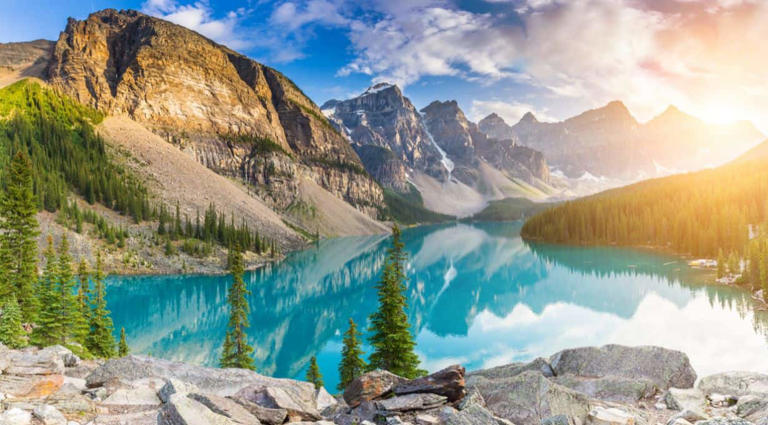
Create an account
- Gain access to free articles
- Daily free newsletter(s)
- Ability to comment on most articles
- Build your 3D avatar and gain points
- Everything in the Free plan
- Ad-free reading and browsing
- Unlimited access to all content including AI summaries
- Directly support our local and national reporting and become a Patron
- Cancel anytime.
Forgot password
Please enter your email and we'll send you a new password request code.
Please complete your profile to unlock commenting and other important features.

, time to level up your local game.
We have a favour to ask.
Narcity is looking to transition to a more sustainable future where we are no longer as reliant on advertising revenue. Upgrade now and browse Narcity ad-free and directly support our journalism.

This is a Pro feature.
Time to level up your local game with narcity pro..
8 of the best ways to kill time at Toronto Pearson Airport while you wait for your flight
Long layover? No problem. ✈️

Toronto Pearson Airport. Right: Coffee at Toronto Pearson Airport.
Planning to travel soon? As Canada's largest and busiest airport, Toronto Pearson has tons of places to eat, grab a drink, and kill time while you wait for your flight .
Whether you want to relax or pamper yourself, enjoy cuisines from around the world or sip on local wine, you can do it all the airport.
Whether you've just got a couple hours to kill before your flight or you've got a long layover at the airport , there's tons of things to do (and eat) to keep you occupied.
Here are eight of the best ways to kill time at Toronto Pearson Airport .
Pamper yourself
The Wellbeing Spa at Toronto Pearson Airport.
TorontoPearson | X
Where: Terminals 1 and 3
Details: Didn't have time to get your nails done before your trip? Got a crick in your neck after a long flight? You can pamper yourself with some spa services while you wait at the Be Relax Spa at Toronto Pearson Airport.
The spa, which can be found in two locations in Terminal 1 and one location in Terminal 3, offers 15-60 minute treatments, with no appointments needed.
You can get things like a back, foot or head massage, a manicure or pedicure, a facial or waxing service, or pamper yourself from head to toe.
In addition to the Be Relax Spas, the airport also has the Wellbeing Spa (located in Terminal 3) where you can freshen up before your flight with a shower, or relax with a massage, manicure, pedicure or other spa service.
Relax in a lounge
A Plaza Premium lounge at Toronto Pearson Airport.
Details: YYZ is home to several lounges where you can relax and refresh before your flight.
Certain airlines like Air Canada, American Airlines and more have lounges at the airport that you can use if you're travelling with the airline.
For instance, Air Canada customers travelling on a premium economy, latitude, comfort, or flex fare can purchase access to their Maple Leaf Lounge at Toronto Pearson Airport.
Similarly, travellers flying with American Airlines can purchase a one-day pass to their Admirals Club lounge at the airport.
Besides airline-specific lounges, Toronto Pearson also has Plaza Premium lounges. Several are available at the airport, for travellers flying within Canada, to the U.S. and internationally.
At the Terminal 1 International departures lounge , guests can enjoy international and local cuisines, soups, gourmet salads and desserts at a buffet bar, specialty coffees and teas, juices, beer, wine and other drinks, Wi-Fi, charging stations, and even shower facilities to freshen up.
Enjoy some good food
A cafe at Toronto Pearson Airport.
Where: Throughout the airport
Details: Toronto Pearson has tons of restaurants and bars where you can enjoy snacks, light bites, drinks or full-out meals while you wait.
There are tons of options to choose from, whether you want Mexican food (head to El Catrin Tacqueria) or a juicy burger (check out Wahlburgers in Terminal 1).
If you're travelling to the U.S., in Terminal 3, Archeo Pizzeria offers Mediterranean favourites inspired by the menu at Archeo restaurant in Toronto's Distillery District, including caprese focaccia, and breakfast options.
If sushi is your thing, Acer in Terminal 3 is a great spot to grab a bite, serving up a modern Japanese menu of fresh, healthy dishes like sushi, dumplings, noodles and curry. Open from 5 a.m. until the last flight of the day, they also have breakfast options for early birds.
If you work up a thirst, check out Distillery Bar , Beerhive , or the Mill Street Brewery Pub for local and international craft and specialty beers, and Vinifera or Vino Volo Wine Bar for wines to enjoy by the flight or glass.
Of course, there are also a number of Tim Hortons and Starbucks in the airport if you're in need of a coffee or tea.
Be sure to also check out the Carlo's Bakery Cake ATMs in Terminals 1 and 3 for a sweet slice of cake.
Hit the gym
Goodlife gym at Toronto Pearson Airport.
Where: Terminal 1
Details: If you'd rather not sit around while you wait, you can hit the gym at the airport and get your body moving.
Toronto Pearson has its very own Goodlife gym onsite where you can work out. The gym is open to members and non-members, the latter of which can purchase a day pass to the gym for $25.
Here, you can rent workout clothes, take advantage of free weights and strength training equipment, cardiovascular equipment and a fit fix circuit training area and stretching area.
The gym also has change rooms with showers and hair dryers, a towel service, and can store your luggage for you while you work up a sweat.
Stock up on travel essentials
Relay at Toronto Pearson Airport.
Details: Forget something? While you're waiting for your flight, you can peruse the shops at the airport offering sundries and travel essentials to make sure you aren't missing anything.
Pearson Airport has several shops like this where you can get snacks, medicine and in-flight essentials that you may have forgotten, like Relay (several locations in Terminals 1 and 3) 6 & Sundry (Terminal 3) and the TripAdvisor store.
You can pick up things like magazines to read during the flight, a charger or power converter, headphones, snacks, pain medicine or anti-nausea medicine, beauty essentials and more.
Get some shopping in
The Toronto duty-free store at the airport.
Details: While you're here, why not take advantage of the duty-free shopping at the airport?
Pearson offers duty-free stores like Duty Free by Dufry (on Terminal 1 and 3) and Toronto Duty Free (Terminal 1) where you can get liquor, tobacco, cosmetics, perfume and brands like Coach, Burberry and Victoria’s Secret all at tax and duty-free prices.
The airport also offers duty-free shopping at stores like luggage retailer Tumi, Tom Ford, Tissot, Swarovski, Salvatore Ferragamo, Montblanc, Michael Kors, Le Labo, Gucci and more.
Enjoy some live music
@empirethiefmusic Live at Toronto Pearson airport
Details: You can enjoy free live music while you wait for your flight with the YYZ Live music program at Toronto Pearson.
YYZ Live is a music showcase series at Toronto Pearson International Airport that takes place throughout the year and showcases local musical talent.
Taking place in both Terminals 1 and 3, past performances have included genres and musical styles of all kinds.
You can view upcoming shows on the Toronto Pearson Airport website.
See some sights
The Union-Pearson express train.
UPexpress | X
Details: If you've got a long layover at the airport, you could even consider leaving the airport for a while to check out some sights in the area.
Toronto Pearson Airport is located just 15 minutes away from Mississauga's Square One shopping mall , where you can find a number of retailers, restaurants and things to do.
You can also take the UP train from Pearson Airport directly to Toronto's Union Station, around which you can see several classic Toronto sights and find cafes, restaurants and more.
Happy travels!
- I Found Toronto Pearson Airport's 7 Best Spots To Eat, Drink & Kill Time Before Your Flight ›
- Here's How You Can Skip The Lines At Toronto Pearson Airport & Speed Up Your Travel ›
- Toronto Pearson's Plaza Premium Lounge Review: Worth The $34 For The Drinks Alone ›
Already have an account? Log in
Create an account to keep reading.
1. choose a plan.
Limited access to free articles
Unlimited access to all content, AI summaries, ad-free browsing and directly support our reporting by becoming a Patron 🙏. Cancel anytime.
2. Create your account
Toronto pearson's plaza premium lounge review: worth the $34 for the drinks alone, here's how you can skip the lines at toronto pearson airport & speed up your travel, 8 lessons i learned about holiday travel after flying through pearson airport in december, toronto pearson airport just made life easier for connecting passengers & here's what to know, the best airports in canada were revealed and number one isn't toronto pearson, 3 canadian airports ranked among the best in north america & toronto pearson came out on top, toronto pearson airport is having a huge job fair & they're hiring for so many different roles, these canadian airports have the most traveller complaints & number one isn't toronto pearson, 12 international flights from toronto that are under 5 hours for a quick trip abroad, these 8 canadian airlines have so many new flights in 2024 & the destinations are magical, these are the 11 best things to do in toronto this spring, canada travel news: travel advisories, all-inclusive vacations & more you may have missed.

IMAGES
VIDEO
COMMENTS
Canada is a popular country to visit any time of the year, but it can be a very different travel experience depending on the season that you choose to visit. Summer is peak season in Canada when the weather is at its best. Winter is cold, snowy and icy, but it's the perfect time for skiing and snowboarding.
Rory Fuller/Travel + Leisure. Best Times to Visit Canada for Hiking . Canada completed the world's longest recreational, multiuse trail network in 2017.
Shoulder season of May, September, and October may mean some cheaper deals area available. Savvy travelers visit Canada in September. While prices and crowds fall after the Labour Day weekend, good weather usually holds until the end of the month meaning you can still hike at high altitudes, kayak in ice-free waters, and visit the beach.
The best time to visit Canada is during the fall months, from September through November. The weather has cooled down but is still comfortable, the summer crowds have left, prices drop, and changing fall foliage provides a beautiful backdrop for a vacation. Also, fall celebrations such as pumpkin, apple, and wine festivals are in full swing and give visitors a chance to visit slightly out of ...
Toronto has average temperatures of 25°C, Yukon is around 19°C (still falling to 6°C at night), and Montreal sees averages of 25°C. August is one of the best times of year to visit Canada; the atmosphere is great with all the schools out and people enjoying time off at Ontario's beaches.
Fall — September 21st to December 20th. Fall is a spectacular season in Canada, making it one of the best times to visit Canada. During these month, there are comfortable temperatures, around 60 degrees in September in Toronto, steadily falling towards winter. Rain is common this time of year, although not as much as in April.
One of the best times to visit Canada is the fall. It's a great time for outdoor activities, sightseeing, and exploring the cities. Plus, you get to see the landscapes at their most beautiful, lit up with vibrant fall colours. Fall in Canada is officially from September 22nd until December 20th.
Visiting Canada in April. A good time to travel to Canada, with improving weather and longer days. Vancouver and the west coast in particular feel more pleasant. High up in the Rockies, the ski season is at its best with sunny days and blue skies. Elsewhere in the country, the chill of winter starts to disappear but weather can be unpredictable ...
The best time to visit Canada depends on where you're going and what you're hoping to see. Discover the best time of year for travelling to Canada and start planning your trip with our complete guide. ... The Rough Guides to Canada and related travel guides. In-depth, easy-to-use travel guides filled with expert advice. Buy US$28.99. Buy US$28. ...
The most popular time to visit Canada is during the summer months from June to August. Cities in Eastern Canada, such as Toronto and Montreal, experience summers that are hot and humid. In contrast, Victoria or Vancouver, on the West coast, see more moderate temperatures and little humidity. As soon as the sun begins to shine, everyone heads ...
Summer in Canada is one of the best times to visit! There's heat, sun, fun, and a ton of things to do! In fact, many people travel to Canada in the summer for the epic hiking trails, incredible camping spots, beautiful lakes, and endless Quebec road trip possibilities!. And that's mainly because Canada's weather from June through August is pretty dang ideal.
Best time to visit Canada; When is the best time to visit Canada? The best time to visit Canada is from May to September. The summer months, June, July and August, have the warmest temperatures, but if you're looking to go off-peak, May and September will likely be quieter and have mild weather - perfect for exploring the Land of Maple Syrup ...
Weather is far too cold this time of year in Canada to be enjoyable for warm weather travelers. The average high during this season is between 23°F (-5°C) and 17.6°F (-8°C). On average, it rains or snows a smalll amount: 2 to 4 times per month. These times of year are fairly slow with tourists. Best Times to Travel › Canada
The best time to visit Canada is from May to September. The summer (June to August) sees the warmest temperatures, but if you're looking to go off-peak, May and September will likely be quieter and have mild weather - perfect for exploring the Land of Maple Syrup. For winter fun in Canada, the best snow is from December to March, although this ...
The best time for wildlife varies across regions, while snow enthusiasts will find ideal conditions from November to April in various parts of the country. The best time to visit Canada 2024 is a whispered secret among seasoned travelers, a temporary window when the land awakens to a symphony of colors.
Canada is a year-round travel destination, but summer is the most popular time to visit. You will find the sunniest skies, warmest weather, and peak attendance at Canada's world-class attractions, national parks, and spas. Get in on this action while enjoying Canada's top festivals including Calgary Stampede and Montreal Jazz Festival.
Best time to visit Canada. Canada embraces extremes. The hottest temperature ever recorded was 45°C in Saskatchewan.The coldest was in the Yukon: -63°C. With six time zones, two coasts, Arctic tundra and Rockies thrown into the mix, Canadian weather reports must go on for hours. It has a lot of it.
Early May to the end of June. Mid-May to late June is a great time to visit Canada! There are not a lot of tourists so prices are reasonable. The summer tourist season has officially begun, although the first two weeks of May are generally quiet (and many attractions are still closed). There are new leaves in the trees; nature is in full bloom.
Here are the basics of travel to Canada. CAPITAL: Ottawa. OTHER MAIN CITIES: Quebec, Toronto, Vancouver, Montreal, Calgary, Edmonton. CURRENCY: Canadian dollar (See current exchange rates) ELECTRICITY: In Canada, the standard voltage is 120 V, while the standard frequency is 60 Hz.
Climate and Weather in Canada. Located north of the United States, Canada is an extremely vast country that covers a territory 20 times larger than France.. Stretching from the Pacific Ocean to the Atlantic Ocean, the climate in Canada is mainly humid continental, but also dry continental, subarctic, arctic, oceanic, and mountainous. Thus, depending on the regions and the time of year, the ...
The best time to visit Toronto for lower prices is from December to February. Hollywood encourages travelers to plan ahead to score some excellent deals on airfare and luxury hotels. Despite the ...
Voted Canada's best restaurant in 2023, Mon Lapin is a cozy wine bar and restaurant in Little Italy. It serves natural wines and an ever-changing menu of French- and Italian-inspired small plates.
Picking the best time to visit the East Coast of Canada also depends on what you want to do — and the fall offers fewer fellow travellers and vivid colours. With the changing of the seasons comes the stunning fall foliage, with trees painting the landscapes in shades of red, brown and orange. Fall colors start to appear along Canada's east ...
Mont-Tremblant. #14 in Best Places to Visit in Canada for 2023-2024. Located a little more than 80 miles northwest of Montréal in Québec's Laurentian Mountains, Mont-Tremblant is best known for ...
The best time to visit in Banff Canada is summer, where pristine lakes mirror towering mountain peaks, lush forests burst with vibrant colors, and every corner unveils nature's awe-inspiring ...
You can pamper yourself with some spa services while you wait at the Be Relax Spa at Toronto Pearson Airport. The spa, which can be found in two locations in Terminal 1 and one location in Terminal 3, offers 15-60 minute treatments, with no appointments needed. You can get things like a back, foot or head massage, a manicure or pedicure, a ...
Located about 220 miles above the Arctic Circle, Tromsø is one of several top spots to view the northern lights in Norway. At the darkest point of the aurora season - which runs from September ...
The 302-room Mondrian Singapore Duxton, which opened in 2023, blends historical Chinese shophouse elements with modern luxury, making it an ideal place to put up weary feet after exploring. From your window, watch lion dance troupes practise on rooftops, or head down and rub shoulders with locals doing tai chi in the morning.